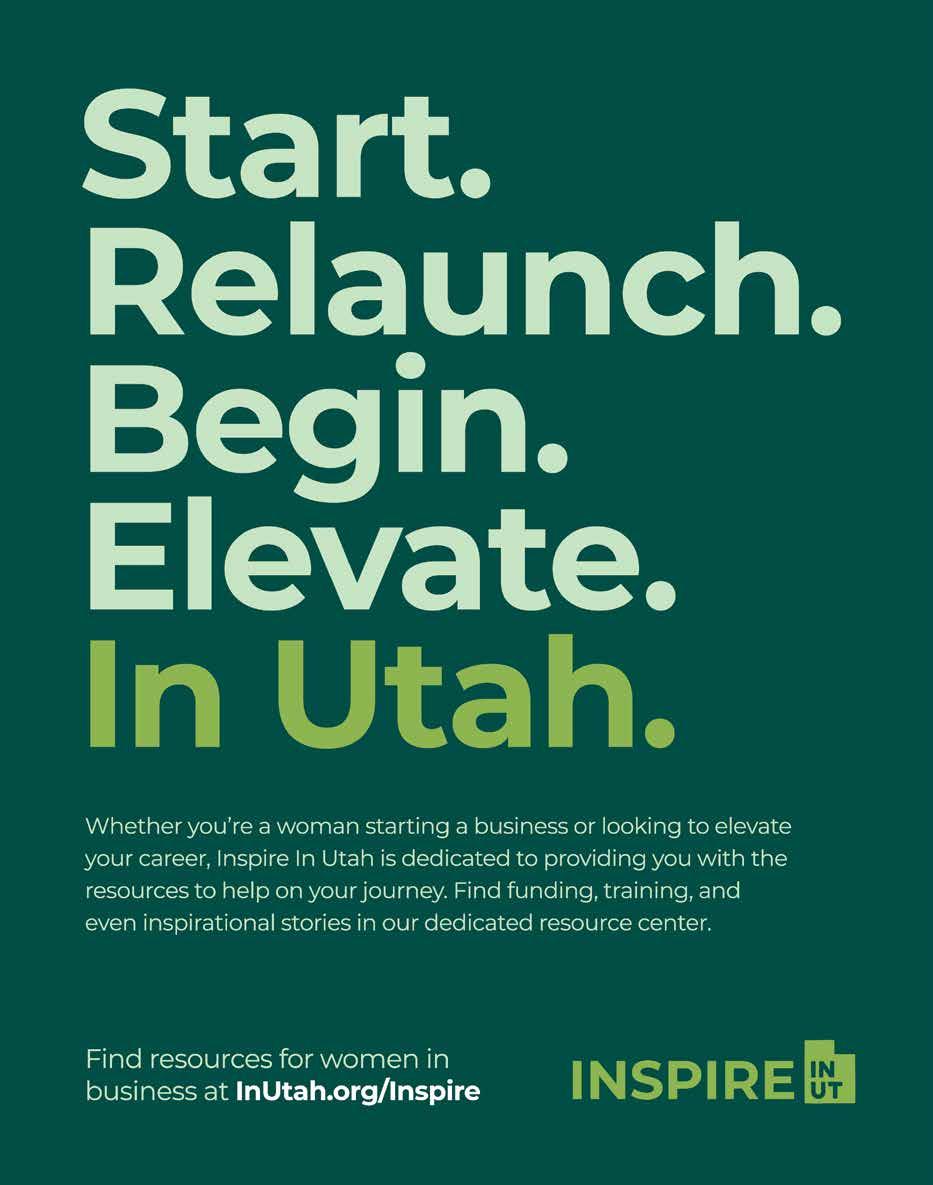
 RX 350 AWD
RX 350 AWD



 RX 350 AWD
RX 350 AWD



Western Alliance Bank is proud to bring our award-winning, expert business banking to Utah, led by seasoned commercial bankers who, like you, have built their lives and careers right here.

With more than $65 billion in assets and a real commitment to helping Utah businesses achieve their ambitions, we’re ready to work hard for you.
Seth Brinkerhoff


Senior Director, Commercial Banking seth.brinkerhoff@westernalliancebank.com (801) 386-3910
Marshall Saunders
Vice President, Commercial Banking msaunders@westernalliancebank.com (435) 513-2650
westernalliancebank.com
#1 Best Emerging Regional Bank 2022, Bank Director
Western Alliance Bank, Member FDIC.A FORMER FOX POLITICAL EDITOR ON HOW NEWS MEDIA PROFITS FROM YOUR RAGE.
by chris stirewalt
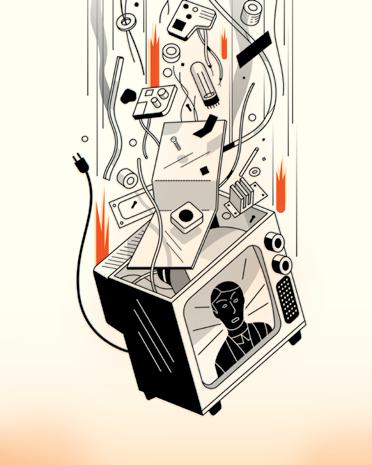
60

MEET ONE MAN TRYING TO PRESERVE HIS NATIVE TONGUE AND CULTURE. by ethan bauer
68

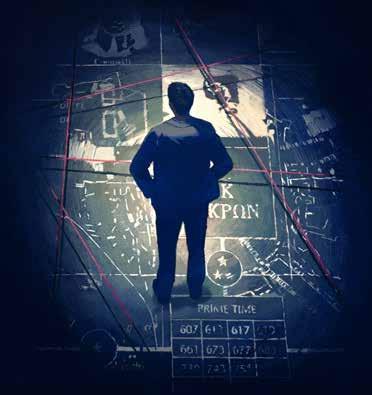
WILL ARIZONA’S DECADESLONG COLLEGE MYSTERY EVER BE SOLVED?
by ciara o ’ rourke
“It is sadly fitting that the acrid, partisanshipsoaked public discourse created by our dumb news media prevents needed repairs to the media itself.”

How friendship fosters economic opportunity. by shaylyn romney garrett
It’s not just the kids. Parents can’t focus either. by deborah farmer kris


Both political parties agree: The border is in crisis. by benjamin bombard

To the desert. And beyond. by ethan bauer
If Republicans take the House, investigations are coming. by mya jaradat

Can anyone afford to live in America anymore? by heather hansman

‘The grid,’ as we know it, is changing. by miyo m c ginn

Why young men are struggling. a conversation with richard reeves by suzanne bates
Americans are drinking less alchohol. These ‘bars’ are counting on it. by fendi wang
How to win arguments without alienating people. by lois m collins
ROBIN RITCH
HAL BOYD
JESSE HYDE
ERIC GILLETT
MATTHEW BROWN
CHAD NIELSEN
JAMES R. GARDNER LAUREN STEELE
SUZANNE BATES
MICHAEL J. MOONEY
ETHAN BAUER MYA JARADAT
LOIS M. COLLINS KELSEY DALLAS JENNIFER GRAHAM
ALEXANDRA RAIN GENEVIEVE VAHL
IAN SULLIVAN
BRENNA VATERLAUS
TODD CURTIS
CHRIS MILLER MADISON TAYLOR
SARAH HARRIS TYLER NELSON
ETHAN BAUER ISABEL BOUTIETTE LAURENZ BUSCH ANNE DENNON ALEXANDRA RAIN GENEVIEVE VAHL
PAUL ADAMS DAN BEJAR HARRY CAMPBELL MICHAEL DRIVER
MARY HAASDYK KYLE HILTON HOKYOUNG KIM JORDAN LAYTON JOE MAGEE
STUDIO MUTI ROBERT NEUBECKER CHRISTIAN ROUX MORIAH RATNER LAURA SEITZ OLIVIA WALLER
Deseret Magazine, Volume 2, Issue 19, ISSN PP324, is published 10 times a year by Deseret News Publishing Co., with double issues in January/ February and July/August.


The Deseret News’ principal office is 55 N. 300 West, Suite 500, Salt Lake City, Utah.
Subscriptions are $29 a year. To subscribe visit pages.deseret. com/subscribe. Copyright 2022, Deseret News Publishing Co. All rights reserved. Printed in the USA.
DESERET, proposed as a state in 1849, spanned from the Sierras in California to the Rockies in Colorado, and from the border of Mexico north to Oregon, Idaho and Wyoming.
Informed by our heritage and values, Deseret Magazine covers the people and culture of that territory and its intersection with the broader world.
Romney Garrett graduated from Harvard University before serving in the Peace Corps and co-founding the nonprofit Think Unlimited, mobilizing social innovation in the Middle East. She is a founding contributor to Weave: The Social Fabric Project and co-authored with Robert D. Putnam “The Upswing: How America Came Together a Century Ago and How We Can Do It Again.” Her commentary on cross-class friendships is on page 16.
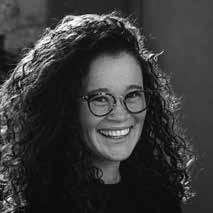
McGinn is a freelance writer focusing on the intersection of the climate, the environment and humanity. Her work has appeared in Grist.org, Outside Magazine, Popular Science and New York Magazine. McGinn received a bachelor’s degree in sociology at Middlebury College and is the recipient of the 2022 High Country News’ Bell Prize for young writers. Her report on why Western states lag behind in developing renewable energy is on page 48.


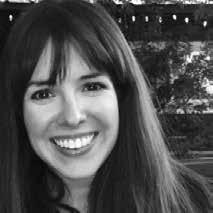
Stirewalt is a senior fellow at the American Enterprise Institute. Prior to joining AEI, he was political editor and coordinated specialized polls and voting trend analysis at Fox News Channel. He is a former political editor for the Washington Examiner and Charleston Daily Mail in West Virginia. An excerpt from his latest book, “Broken News: Why the Media Rage Machine Divides America and How to Fight Back,” is on page 52.
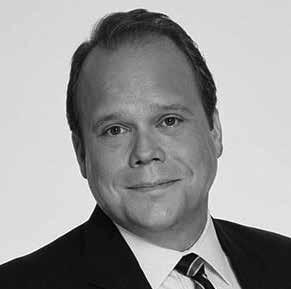
Born and raised in Seoul, South Korea, Kim studied painting at Hongik University and illustration at Ringling College of Art and Design. She resides in Queens, New York, and her clients include The New York Times, The New Yorker, The Wall Street Journal, The Atlantic, Medium, ProPublica, the Intercept and Current Affairs. Her work appears on page 68.



A Salt Lake City native, Bombard is a writer and radio producer. His written work has appeared in numerous publications, including Western Horseman, The Salt Lake Tribune and Catalyst Magazine. His audio work has been featured on RadioWest, KUER/NPR Utah, BBC/PRI The World and Nick van der Kolk’s “Love+Radio.”
On page 32, Bombard examines how immigration has vexed both Republican and Democrat policymakers.
O’Rourke is a freelance writer who has contributed to publications including The Atlantic, Seattle Met and The New York Times. She’s a former reporter for the Austin American-Statesman in Texas, and studied journalism and French at Western Washington University. She was also a 2015-16 Ted Scripps Fellow in Environmental Journalism. O’Rourke’s story on page 68 is about the quest to solve “Arizona’s Da Vinci Code.”
Waller is a Brighton, England-based illustrator and printmaker, whose work has appeared in The New Yorker, The New York Times, The Guardian, the Lily (The Washington Post), Stylist Magazine, Zetland Magazine and Penguin Random House, among other publishers. Her art is dedicated to celebrating women and has been exhibited at Wickle, Lewes, Art Wave and Seaford, Crit Club. See Waller’s work on page 20.
Wang is an editor at Godfrey Dadich Partners, a design and editorial agency, and lives in San Francisco. She graduated from Northeastern University and is the founding editor of MINDSWIM, an online magazine. A regular contributor to Deseret Magazine, Wang’s story on page 80 explores the growing trend of nonalcoholic bars in cities across the United States.
In the SEPTEMBER issue, “The Fate of the Religious University,” Elder Clark G. Gilbert, commissioner of education for The Church of Jesus Christ of Latter-day Saints, challenged the country’s faith-based colleges and universities to not shy away from their distinctive legacy and role in higher education (“Dare to be Different”). “It is important for religious schools to assert the rights of their students and their communities to learn and work in a religious setting,” he wrote. Supporting essays contributed by university presidents and scholars were shared by the likes of American Council of Education, Duke Divinity School, Utah Gov. Spencer Cox and Brookings Institution scholar Richard Reeves. Brad Wilcox , director of the National Marriage Project, quoted Gilbert’s insight into religious schools maintaining their faith-centered priorities, before tweeting, “In other words, Harvard or Michigan should not be the lodestar” to his 19.5k Twitter followers. And President Dallin H. Oaks, first counselor in the First Presidency of the church, referred to Gilbert’s essay in a devotional at the church-owned Brigham Young University: “Those who deviate from a majority are often made to feel like ignorant holdouts on subjects where everyone else is more enlightened. When higher education or the world in general call upon faculty to vary from gospel standards, do we ‘dare to be different?’” Also in the September issue, contributing writer Mary McIntyre wrote about how a local Montana butcher is trying to fix one of the country’s most broken markets — the meat industry from rancher to consumer (“Chopped”). The Price-Pottenger Nutrition Foundation praised the story on Twitter: “Anna Borgman, a butcher at Amsterdam Meat Shop in Montana, is doing her part along with other independent butchers to provide fair pricing for family-owned beef ranches struggling to survive and compete.” Staff writer Ethan Bauer took readers on a journey between past and future climates in his story about paleontologists unearthing ancient dinosaur remains in southern Utah (“Bones”). The experts explained how studying fossils could change how we see the past — and the future. The Utah Natural History Museum recom mended it on Twitter as “a great #fossilfriday read from Deseret.” College sports fans have been inundated the past year with reports about student athletes cashing in on marketing their name, image and likeness, or NIL . Contributing writer Eric Adelson attended a conference in Atlanta on NIL and came away with an enlightening report (“Inside the College Sports Gold Rush”) on how college administrators, sports agents, student-athletes and fans view this new era of economic opportunity and uncertainty. Todd Harris, a sports announcer and reporter for NBC Sports and NBCSN , shared the story with his 20.4k Twitter followers. And most readers came down on the side of student-athletes who can now use their talents to make a living while in school as other students can in the arts, sciences and other disciplines. Clark Robinson wrote, “This could be good for college sports. More athletes may be willing to stay in college and not rush to the pros for a payday. I won’t be surprised if star college QB s are making more than backup NFL QB s in a year or two.”
With Real Love® nothing else matters; without it, nothing else is enough.



Easily learn and master a practical process to parenting. ELIMINATE confusion and frustration with your children. Transform your family with Real Love Parenting. Your children will feel loved, loving, responsible and happy.

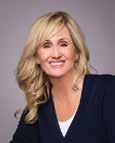


WHAT PARENTS AND THERAPISTS ARE SAYING ...
This is information that every parent needs ...
As a marriage and family therapist for 30+ years, I have seen parenting become increasingly challenging among even the most dedicated parents. With the bombardment of the Internet and social media, children AND parents are facing their insecurities about any number of issues, particularly when it comes to deepening connections. Parents want to love their children. It sounds simple, but it isn’t; at least not until now. Greg Baer, M.D. is better at teaching parents HOW to unconditionally love and teach their children more than any other professional I have come across. The Ridiculously Effective Parenting Training should be in EVERY home.
My grandma used to drive a white Cadillac.
It had an eight-track player and white leather seats. I liked riding in it. I liked how roomy and plush it was and how it seemed to not even bounce along the highway, but float, like a magic carpet. I liked listening to Charlie Pride and Patsy Cline and whatever else she put on as we drove to Elko to watch my grandpa race horses.
Sometimes we went out to the desert to look for rocks under the pale blue Nevada sky. We collected the ones she could shine up like gem stones. They were red and purple. She put them on the patio behind her art studio, where she painted her favorite horses. FlickerDeBar. Miss DeSpeed. Kissin’ John.
As I got older, I began to appreciate my grandma’s stories more and more. They were stories of another time, of horse-drawn sleighs and hipdeep snow, of mountain cabins without running water, of a cross-coun try move to Florida to work on the church cattle ranch, where my dad, still in a cloth diaper, wandered into a pond and nearly got eaten by an alligator.

I thought of these stories as I read this month’s cover story (Fading Whispers, page 60) about a man named Ernest Siva’s effort to preserve the history of his people. Siva, who lives on the Morongo Indian Reser vation in Southern California, told staff writer Ethan Bauer of falling asleep listening to his grandfather, and how he didn’t know if what he was hearing was just a bedtime story, or something deeper, a parable. Other times, Siva’s grandfather would sing “bird songs,” which told the origin stories of his people.
Siva’s goal isn’t just to save native languages. He wants them to sur
vive, to grow and evolve. “Our languages connect us to our ancestors and to our homelands,” Interior Secretary Deb Haaland, the first Native American Cabinet secretary, told the magazine.
It reminded me I’d been meaning to record my grandma’s stories for some time, so my kids could hear them. I promised myself I would make a point of doing just that on my next visit home. There is something universal in not forgetting our ancestors and where we come from.
As we were closing this issue, I got a text from my sister. My grand ma had a heart attack. She was on a medical helicopter to Reno. It didn’t look like she would make it and I feared I’d missed my chance to record her stories.
That night I pulled an autobiography she wrote from a shelf in my home office and flipped through it, pausing to study the pictures, which span from the 1930s to the present. I marveled at how much the world has changed. There was a picture of a Model T. An outhouse. A family photo taken in 1979. I’m three years old, wearing a red suit. My uncle Gary is resplendent in bell-bottoms.
Two days before we went to press, I called my grandma. She had been released from the hospital and was back home. She said she was feeling just fine. She’s 88. I told her she could make it to 98, at least. We all need you around, I told her. She laughed. “We all die,” she said gently. “I’ve lived a good life. I’m not afraid to go.”
I told her I’d see her at Thanksgiving. And this time, I promised, I’ll make sure to bring a tape recorder.
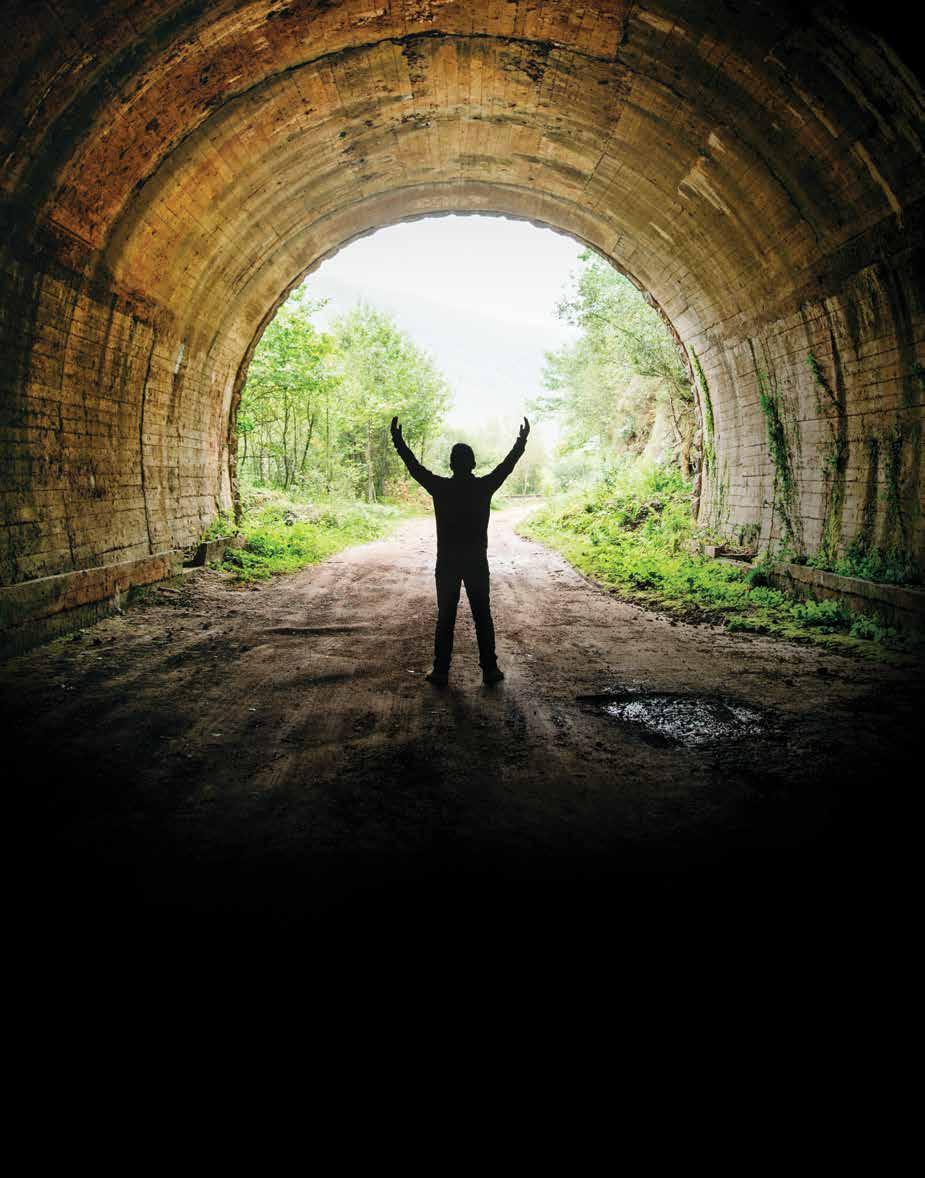
It will get brighter.
 BY SHAYLYN ROMNEY GARRETT
BY SHAYLYN ROMNEY GARRETT
The American dream is on life sup port. For more than 50 years the per centage of American children who grow up to earn more than their parents has been in decline. Only half of kids today will achieve that basic goal, and a child born into poverty has a mere 7.5 percent chance of making it to the top. The notion of this nation as a land of opportunity has never been further from the truth.
Simultaneously, America’s social fabric is in tatters. For more than 60 years, social capital — informal ties to friends, neighbors and fel low citizens — as well as solidarity and social trust, have been in sharp decline. We are living increasingly isolated and segregated lives. The ideal of America as a nation of neighbors has never been more out of reach.
Social scientists have long believed that these two phenomena are related. But thanks to a new study by intrepid economist Raj Chetty, we now have the data to prove it.
Chetty was one of the first social scientists
to mine “big data” for insights into what’s really driving economic and social problems in America. He and his team first used ano nymized income tax records of 40 million chil dren and parents to create a color-coded map
study on economic mobility: Whether or not children achieve the American dream depends largely on something entirely out of their con trol — the ZIP code into which they are born.
In their latest study — published in Nature in August — Chetty and his colleagues ana lyzed privacy protected data on 72.2 million Facebook users to create a color-coded map that details exactly where our social fabric is strong, and where it’s coming apart. The big gest takeaway from this landmark study on social capital: ZIP codes that have high levels of social capital have high levels of economic mobility. Broadly speaking, the two maps are nearly identical.
that provides an unvarnished and strikingly detailed picture of where American kids are succeeding economically, and where they are not. The biggest takeaway from this landmark
MANY DIFFERENT KINDS of social connections make up a society. But one important distinc tion is between bonding (associations we make with people like ourselves) and bridging (as sociations across lines of difference). Because of the richness of the Facebook data, Chetty and his colleagues were able to drill down even
THERE’S JUST NO WAY TO SOLVE AMERICA’S ECONOMIC MOBILITY PROBLEM WITHOUT SOCIETY’S ECONOMIC WINNERS REACHING ACROSS THE CHASM OF CLASS TO LEND A HAND TO EVERYONE ELSE.
further to measure two specific aspects of in terclass bridging, one they call “exposure” and the other they call “friending bias.”
Exposure measures the economic diversity of a given setting — how likely you are to en counter someone who doesn’t share your so cioeconomic profile in the various spaces you move through in society. High “exposure” in a given setting means more economic diversity.
“Friending bias,” on the other hand, mea sures the likelihood that in a particular setting you will not just encounter someone from a different social class, but will actually form a connection across the class divide. Low “friending bias” means that low-income peo ple have lots of high-income friends, and vice versa.
Teasing out these two threads of our social fabric adds crucial nuance to discussions of how to help more kids achieve the American dream, because most reform efforts to this end have focused solely on exposure: creating systems, spaces and structures that increase economic diversity. But Chetty’s data shows that more exposure doesn’t necessarily mean more friending.
Take mixed-income neighborhoods. Build ing affordable housing in more affluent areas means that the opportunity for social interac tion between disparate classes goes up. Rich folks and poor folks will see each other out walking dogs and playing on the playground, but there’s no guarantee that the kids in the new apartment complex will be invited to the neighborhood pool party at the house down the block. As a result, personal connections that would help them access new opportuni ties may never be made.
Similarly, universities can do away with admissions policies that favor “legacy” appli cants over first-generation applicants who are equally qualified. But while leveling the admissions playing field will likely increase cross-class exposure on campus, getting legacy students to befriend underprivileged students is another matter entirely. Thus, the networks first-gen students need to make it to gradua tion, find mentors and land jobs may never form.
This likely explains why, despite significant public investment over the past several years in efforts to reverse economic segregation, economic mobility hasn’t improved much, if at all. It’s not that exposure doesn’t matter, it’s
that getting rich people and poor people to occupy the same space is just not enough.
Indeed, this big-data insight proves what might have been obvious were it not so hard to hear: Even if we fix all the broken systems that segregate people economically, we still have to do the work of interacting with one another in meaningful ways. Whether it’s across the tracks, across the street or across the lunch room, there’s just no way to solve America’s economic mobility problem without society’s winners reaching across the chasm of class to lend a hand to everyone else.
That may seem impossible to imagine in a society that has reached historic levels of cul tural self-centeredness, but in fact it may be easier to tackle friending bias than segregation. Creating more economically diverse commu nities often involves reimagining geographies, addressing codified discrimination, mobilizing scarce resources and coalition building among stakeholders who disagree on how to restruc ture society.
But this new statistical story of the rags to riches idyll has a surprisingly personal, and hopeful, dimension. It turns out that breath ing life back into the American dream can start immediately, with just one intentional interaction between two people of different social classes — a single act of friending.
SO HOW DO we get more people to not just encounter each other, but actually connect across lines of economic difference? Consider which communities or institutions in our so ciety are doing “friending” particularly well. From among the 21 billion Facebook connec tions that Chetty and his colleagues analyzed, a clear trend emerged: Americans are more likely to befriend someone of a different social class in a religious setting than in their neigh borhood, in high school, at work or even in college. The data show unequivocally that the place poor kids and rich kids are most likely to become friends is at church.
But what is it about religious settings that makes them more fertile ground for unlikely friendships? And what can secular institutions, whose success at fostering friending plays a key role in keeping the American dream alive, learn from religious groups?
The logic of how and why we connect with people varies across the institutions and com munities we’re a part of, but in most cases it’s
self-promotion by association. We think that success is not what you know but who you know, and it doesn’t pay to seek out people who are worse off.
In a religious context, however, this logic is generally turned on its head. People encoun tered in the pews aren’t status symbols, door openers or rungs on the ladder to success. They’re fellow travelers on a humbling path to encountering God. Thus, social and eco nomic hierarchies are superseded by common purpose, common values and common ideals. Rather than being yet another arena in which to compete, religious spaces instead cultivate an ethic of camaraderie.
Religious encounters also offer opportuni ties to gain real insight into the lives of others, which is rare in a culture dominated by cu rated images. At a 12-step meeting or a grief support group, vulnerability and authenticity are prized, while posturing and pretense just don’t play. Sharing about life’s struggles fos ters a sense of empathy and creates pathways to genuine relationships that are often hard to come by in other settings.
But it’s not just the nature of interperson al encounters in religious settings that foster what Chetty and his team call friending. It is also the unabashed project of moral formation in which religious institutions are engaged. Nearly every religious tradition lauds love, generosity and selflessness as the virtues that build us up; while denouncing pride, greed and self-centeredness as vices that unravel our foundations. Though rarely, if ever, enact ed perfectly, the call to lend a hand to people who are struggling is something believers are taught to do as an expression of their highest ideals. By putting forward a clear narrative about its value, religious communities endow social integration with a higher meaning and purpose, incentivizing adherents to reach out, befriend and lend a hand.
And religious organizations don’t just preach social integration and economic re distribution from the pulpit, they have also built enormous infrastructure to facilitate it — an underrecognized feature of our nation’s social safety net which, were it to disappear overnight, would leave millions of Americans without basic necessities.
OF COURSE, RELIGIOUS institutions are not the only ones capable of inducing people to associate
across socioeconomic lines. Schools, colleges, civic groups, workplaces, neighborhoods and many other settings in which Americans live out their daily lives can in fact be wellsprings of both interclass exposure and friending. But the peo ple within them must be courageous enough to intentionally foster not only structural inclusiv ity but also — and equally crucially as Chetty’s study indicates — behavioral inclusivity. Our secular institutions must also engage in the mor al formation of citizens, who are ultimately the ones who will choose to look out and not in, and to lend a hand.
But what would that secular moral for mation look like? Exactly what it looks like in religious settings: Creating a shared sense of identity that supersedes apparent differ ences. Offering opportunities for people to interact authentically. Promoting empa thy and genuine connection. Constructing meaning-making narratives that uphold vir tues like generosity, selflessness and unity. And providing pathways to act upon these ideals.
Looking to religion for clues about how to revive the American dream may seem awk ward in our rapidly secularizing society. More and more Americans seem to believe that re ligion is a source of our problems, not a well spring of their cure. And some of this cynicism rightly stems from the fact that religious in stitutions and religious adherents have often failed to live up to their own moral code.
The Rev. Martin Luther King Jr. famously said that the most segregated hour in Amer ica is 11:00 on a Sunday morning. Though that was more true in the mid-1960s than it is today, attending the house of worship around the corner — whether Catholic or Methodist or Muslim — usually means joining a group whose economic and racial profile is remark ably homogenous. If they would amplify their influence as drivers of economic mobility, then religious institutions must think deeply about how to increase diversity and avoid insularity.
But it’s not just about religions failing to practice what they preach. Sometimes the preaching is the problem. The prosperity gos pel, for example, which has taken hold in cer tain parts of American Christendom, teaches that God rewards the righteous with wealth. In this framework, poverty is a sign of personal moral failing, rather than a social ill we must all work together to cure. Religious teaching must be careful not to frame the less fortunate as people to be pitied or disdained.
And, of course, there’s a lot of hypocrisy at play when religious Americans engage in pol itics that protect their own interests and lock others out of opportunity. Moral formation is only complete when behavior changes not just at church suppers, but at school board meet ings, on planning commissions, in neighbor hoods and in voting booths.
Indeed, the faithful are not without their blind spots. While Chetty’s data clearly shows that religious spaces are some of the bestequipped institutions in America for making cross-class “friending” actually happen, there is still ample room for reform if religious groups want to truly maximize their ability to elevate the least among us.
One of the most famous passages in Chris tian scripture is the parable of the good Samar itan. As the story goes, a lawyer approaches Jesus and asks how he can gain eternal life. He knows he must follow the Jewish law — Love thy neighbor as thyself — but he wants some clarification about exactly what that means. “Who is my neighbor?” he asks.
Jesus responds with a parable. A man, pre sumably Jewish, is attacked, robbed and left for dead on the side of the road. A priest and a Levite, both at the top of the social hierar chy, pass him by. Only a Samaritan — a segre gated group despised by the Jews — stops to care for the injured man. He binds his wounds, provides him shelter and pays for an innkeep er to look after him. Jesus then asks the lawyer which of the three — the priest, the Levite or the Samaritan — acted as a neighbor to the wounded man. The lawyer responds, “The one who showed him mercy.”
This parable contains a many-layered les son, but one is assuredly this: The morally formative invitation to “love thy neighbor” is less about proximity and more about reaching across lines of difference. Though we may oc cupy the same spaces as unlike others — pass ing them in our neighborhoods, schools and workplaces — it is only the one who reaches out in love and empathy that truly lives out the ideal of neighborliness.
Religion has long taught that relationship, compassion and care — “friending” — can cure what ails our society. And we now have the data to prove it.
RELIGION HAS LONG TAUGHT THAT RELATIONSHIP, COMPASSION AND CARE —
“FRIENDING” — CAN CURE WHAT AILS OUR SOCIETY. AND WE NOW HAVE THE DATA TO PROVE IT.


Recently a girlfriend told me, “I always pictured having a large fami ly, but motherhood is so much more difficult than I imagined it to be!” I hear variations of this frequently from friends with one or two children; that it’s just too hard, and that adding more children to the mix would break them. The reality is that the style of parenting they’ve adopted, that of “positive,” “gentle” or “responsive” parenting is actually what’s breaking them; and I can see why they find motherhood so crushing.
Writing for The New Yorker on gentle par enting in March, Jessica Winter explains, “In its broadest outlines, gentle parenting cen ters on acknowledging a child’s feelings and the motivations behind challenging behavior, as opposed to correcting the behavior itself. The gentle parent holds firm boundaries, gives a child choices instead of orders, and eschews rewards, punishments and threats — no sticker charts, no time-outs, no ‘I will turn this car around right now.’ Instead of issuing commands (‘Put on your shoes!’), the parent strives to understand why a child is acting out in the first place (‘What’s up, honey? You don’t want to put your shoes on?’) or, perhaps, narrates the problem (‘You’re playing with your trains because putting on shoes doesn’t feel good’).”
John Rosemond, a family psychologist and
author of bestselling books on child rearing and family life, told me the philosophy is an offshoot of psychological theories popularized among those in the professional mental health world in the 1960s and ’70s. He explained, “The main theme of it then is the same as the main theme of it now: Essentially, children communicate via their emotions because they
psychological disturbance.”
This acquiescence comes in countless par enting decisions, big and small, but I would argue the three most disruptive come in the areas of food, sleep and technology.
When leaving the house for a quick vis it to the park or playground, it’s common to see mothers leaving with half of the kitchen packed in their bulging diaper bags. The result is a steady stream of snacks the entire day, with mom doing the heavy lifting, packing and dis tributing them.
lack the sophistication of the language to do otherwise very effectively. And it is of utmost importance that parents properly interpret and properly respond to their children’s emo tional communication. … Parents are being scared to death by people with a Ph.D., whom they assume they know what they’re talking about. They’re scared that if they don’t ac quiesce to their children’s emotions, they would be causing their children all kinds of
Experts advising parents on how and what to feed kids don’t make the situation any better. One such expert, Jennifer Anderson (known on Instagram as @kids.eat.in.color), a registered pediatric dietician, boasts 1.8 mil lion followers and dispenses advice for “picky eaters.” Most of Anderson’s advice is helpful; like suggestions to make low-sugar yogurts tastier, or the proper protein serving sizes for a toddler (surprisingly small; comforting in formation if you find yourself wondering how your two-year-old can eat so little and remain alive). Other advice is great, like a suggested schedule of snacks and meals, telling parents “you’re in charge of when food is served.” But she also falls into the gentle parenting trap on occasion, with one such post telling parents, “Serving at least one food your child likes at all meals and snacks isn’t catering, it’s honoring
IS THE TREND OF GENTLE PARENTING A MISTAKE?
“PARENTS ARE SCARED THAT IF THEY DON’T ACQUIESCE TO THEIR CHILDREN’S EMOTIONS, THEY WOULD BE CAUSING THEIR CHILDREN ALL KINDS OF PSYCHOLOGICAL DISTURBANCE.”

their need for time to learn to like new foods.”
This is exactly the advice that scares parents off of having more than one or two children at most; because the result is it turns parents into short order cooks. I have five children; I don’t even remember all of my kids’ (ever shifting) likes and dislikes at any given time. We have set meal and snack times, as Anderson rec ommends, for my sanity, but we also serve one snack or meal, not catered and made-to-order requests. And if they don’t like it? Then they don’t eat it. My pediatrician (himself a father of six) told me something recently at a well-visit for my one-year-old that he said comes as a surprise to most of his patients: a child can go to bed hungry. They can, it’s OK. It also estab lishes a power dynamic that children need to understand: It’s parents, not children, that are in charge, not the other way around.
Literally the most exhausting part about being a parent is the associated lack of sleep. As a mother of five, I understand that ex haustion deep, deep in my bones. Which is why I’m such a big believer in setting firm boundaries around sleep. Friends often tell me their sleep woes: Spending an hour or two on the floor of their child’s room, waiting out their children in a battle of wills, trying to get them to go to sleep. Emily Oster, a Brown University economist with expertise in parenting from a data-driven perspective and the author of three data-driven books on parenting, told me, “There is a lot of evidence suggesting that consistency is important in generating behavior change in parenting — in implementing a sleep routine, in enforc ing meal-related behaviors, etc. Inherent in consistency is some limit-setting and some parental structure. Doing whatever kids want in a given evening is more or less guaranteed not to be consistent because kids are not con sistent. This can be a challenge.”
And I want to be clear: I am by no means perfect on sleep; last night I climbed into my one-year-old’s crib at five months pregnant and spent an hour there with him during a truly epic and somewhat terrifying thunder storm. In my conversation with Rosemond, I asked him the difference between honoring children’s emotions and becoming beholden to them, and he gave excellent advice: Par ents need to separate emotional needs from impulses. My one-year-old’s middle of the night thunderstorm wakeup wasn’t because he didn’t want to sleep or because he wanted
to play; he genuinely needed me out of fear of the storm, our windows rattling with the sound of thunder.
But on an average night, there is no ne gotiation. Kids sleep with leak-proof sippy cups, and there are no last-minute requests for books, snacks or other stalling tactics. We have a set routine that everyone understands: Mom puts baby to bed while my older four children (age three to eight) dress in the pa jamas I’ve set out, brush their teeth and floss. When I’m done with the baby’s bedtime, the three-year-old is tucked in and kissed, with as surances that I’ll “come and check on her” at some point in the night. If she wanders out of bed, she is met with a stern demand to return, which she is expected to do on her own. The older three children get one chapter of a novel we’re reading, then it’s lights out for them, too.
‘cry it out’) improves infant and child sleep, and improves sleep for parents, lowers depres sion, improves marital satisfaction. There is also good randomized evidence refuting the idea that sleep training leads to long-term problems with attachment.”
While parents of younger children are fight ing the battles over sleep and food, parents of older children and teens have their own strug gle: technology. According to Common Sense Media, in 2019 (the numbers are likely dras tically different post-pandemic) the majority of 11-year-olds in America already owned a cellphone. Naomi Schaefer Riley, a resident fellow at the American Enterprise Institute and the author of “Be the Parent, Please: Stop Banning Seesaws and Start Banning Snap chat,” literally wrote the book on why and how parents need to be keeping their kids off cell phones and devices as long as possible. Riley sounded a similar note as Rosemond on needs vs. wants, and the imperative of parents to tell the difference. Riley told me, “What you’ll hear typically is that your child will need this device in order to ‘make friends,’ ‘make plans,’ ‘find them’ or ‘for safety.’ There are definitely parents with different circumstances, but par ents need to ask themselves is this actually a need? Imagine when you were a child. What did parents do before cellphones?”
They can read on a Kindle if they want, but I am “done parenting” and they know that while I’m there for an emergency, they are expected to go to sleep.
This strictness around bed makes every one happy: Kids know what to expect and are getting an adequate amount of sleep to keep their brains developing as they should, and it ensures I stay as rested as I possibly can, ready to handle the next day with a full cup instead of running on empty.
In “gentle” parenting circles, there is no greater villain than “sleep training.” Parents are told they are ruining their children for life; teaching them that parents cannot be trusted and that letting them “cry it out” is a form of “neglect.” To this, Oster responds, “There is significant evidence suggesting that sleep training (i.e. some form of what people call
There is a clear connection between rates of cellphone use and the growing rates of anx iety, depression, bullying and access to por nography among teenagers. While unhealthy patterns of eating and sleep, established from a young age, have a deleterious effect on devel oping bodies and minds, so too does access to smartphones and internet-enabled devices in the preteen and early teenage years.
Parenting is hard, but in many ways, we’re making it harder on ourselves by trying to be “gentle” and “positive” versions of our selves. In the short-term, many of us find it easier to capitulate on sleep, food and technology; it’s easier to give in than stand our ground. And we have an entire parent ing philosophy and dominant culture en couraging us to do so. But in the long-term, it’s making parents and children alike less happy, worse versions of ourselves, turning family life into misery unnecessarily.
THERE IS SIGNIFICANT EVIDENCE SUGGESTING THAT SLEEP TRAINING IMPROVES INFANT AND CHILD SLEEP, AND IMPROVES SLEEP FOR PARENTS, LOWERS DEPRESSION, IMPROVES MARITAL SATISFACTION.









Since starting this paragraph, I have been distracted by a police si ren, an Instagram alert and a text from my spouse. I suddenly remembered that my son didn’t put on sunscreen before camp and that I needed to pick up beans for dinner. And then the doctor’s office called to schedule my annual mammogram. When I hung up, I started a new document because, in my fid gety preoccupation, I had closed the old one.
Attention is the ability to direct our lim ited mental resources when and where we need them. The key word here is “limited.”
Attention is a finite cognitive resource — a battery drained by overstimulation, multi tasking, worry, distraction, pings and dings.
I have worked in schools for over 20 years, and I have never heard so much dis may about the inability to focus as I have the last couple of years. Mostly from parents. Talking about themselves.
In a quest to resuscitate my own execu tive functioning — and support my chil dren’s attention skills — I have found cause for optimism in the work of neuroscientists and learning experts. This article doesn’t address medication (though that can be beneficial for some people in consultation with their doctors). They offer hope in the form of understanding how attention works, what drains it and how we can restore it.
Captain Chesley “Sully” Sullenberger is best known for the “miracle on the Hudson,” suc cessfully landing a commercial airliner on the river after both engines were disabled by birds. In recounting how he approached this unthinkable task, he said he relied on more than his aviation training: He drew from his understanding of neuroscience.
two tasks at the same time if both activities re quire focus. Sure, most of us can walk and talk at the same time because walking is an auto matic process. But if we are suddenly distract ed by a siren or a scream, we will stop walking and devote our full attention to understanding the situation.
Likewise, we can’t read our texts and talk to our kids at the same time. And our kids cannot simultaneously watch TikTok videos and do math homework. We can try (and we will), but the result is a bad game of mental pingpong. This rapid task-switching drains our attention battery much faster than unitasking, or doing one task at a time.
Barbara Oakley, author of the book “Learn ing How to Learn: How to Succeed in School Without Spending All Your Time Studying,” points to another attention myth: that you only learn when you are focusing.
“I knew that multitasking is a myth. I knew that when we think we’re multitasking, what we’re really doing is switching rapidly between tasks and not doing any of them well.” Instead of trying to do everything in those pivotal minutes, he said he “chose to do only the most important things but do them very, very well.”
He’s right. Our brains cannot effectively do
Think of your brain like an athlete in train ing, Oakley told me. “You can’t keep running at top speed for hours at a time, just as you can’t run at top speed mentally for hours at a time.” Most people can only devote their “top mental concentration” for an average of four hours a day.
Luckily, learning also happens during down time. In fact, purposefully building in brain
IT’S NOT JUST THE KIDS. PARENTS CAN’T FOCUS EITHER
“MULTITASKING IS A MYTH. WHEN WE THINK WE’RE MULTITASKING, WHAT WE’RE REALLY DOING IS SWITCHING RAPIDLY BETWEEN TASKS AND NOT DOING ANY OF THEM WELL.”

breaks supports both attention and cognition. Oakley describes this as deliberately shifting between “focused mode and default mode.”
Default mode can be described as wakeful rest: daydreaming or mind-wandering. Think of the sudden insights you have while taking a shower, walking the dog or driving a familiar route with the radio off. These are moments when you aren’t actively focusing on a task and yet your brain is still at work in the back ground. Research shows that default mode supports creativity, memory consolidation and cognitive connections. Even short men tal breaks give the brain time to connect “new learning with other previous things you’ve learned,” says Oakley.
One of the most popular attention strate gies is the Pomodoro Technique, something I learned from Oakley five years ago. It’s also simple: Choose one task to work on (unitask ing!), minimize distractions, set a timer for 25 minutes and go. After 25 minutes, take a brain break — step outside and get some fresh air, move your body or just let your brain rest and clear. Then dive in for another 25 minutes.
I’m using this strategy right now. After my disastrous attempt at crafting the introduc tion, I turned on a favorite Pomodoro app — one that shuts down notifications on my phone. I’ve used this app so often in the last few years that my response is Pavlovian: My brain chatter settles down, my anxiety ebbs, my focus sharpens and I am suddenly able to engage with whatever project or article I’ve been procrastinating.
When I teach this strategy to students in study skills workshops (and when they actual ly try it at home) the response has been uni versally positive: “I finished my homework in half the time it usually takes me” or “I got a draft of my college essay written in 25 minutes after dreading it for weeks.”
Perhaps one of the reasons the Pomodoro strategy works is because it prompts us to de liberately turn off the ubiquitous buzzes and beeps that fill our lives.
Nina Kraus, director of Brainvolts laborato ry and author of “Of Sound Mind: How Our Brain Constructs a Meaningful Sonic World,” says that sound has a profound effect on who we are and how we think. Unwanted sounds — aka noises — have “clear consequences to our ability to remember and pay attention.”
That’s because sound is our body’s alarm system and has been throughout our
evolutionary history, says Kraus. Think of how alert we become when we hear an unexpected thump at night. We are suddenly flooded with stress hormones that sharpen our senses and get us ready to act. Now think of all the sound alerts on your devices — the buzzes we com pulsively check, just in case it’s important.
When “we are constantly notified and alarmed, we cannot keep our minds on a single thought,” says Kraus. All of these seemingly benign auditory notifications can keep us — and our digitally connected children — in a “mild state of stress.” Is it any wonder our at tention battery is constantly drained?
“When you leave the walk, those attention al resources are more refreshed for think ing carefully about the problem that you’re grappling with.” Even looking at pictures of nature scenes can be restorative, says Kross. “I have changed the way that I walk to work, and I’ve changed the way I decorated my of fice based on this work.”
Nature also helps calm another attention-drainer: mental chatter, or that voice in our head that catalogs our worries, woes and to-dos. “When chatter consumes our attention, it leaves little left over to do other things including managing our feel ings. And oftentimes the tools that we use to manage our inner voice are effortful and take focus to implement,” says Kross.
The task for parents is not only to reduce unwanted noise, says Kraus, but to also am plify the “positive sounds in our lives”: undis tracted conversations with loved ones, music, bird calls or the crunch of leaves.
The sights and sounds of nature are not just enjoyable, they can also serve as attention “battery chargers.” That’s the idea behind At tention Restoration Theory, says Ethan Kross, a neuroscientist and author of “Chatter: The Voice in Our Heads, Why It Matters, and How to Harness It.” Put simply, kids and adults can focus more effectively after spending time outside. Nature is a cognitive tool that is “hidden in plain sight,” says Kross. “Nature restores attention.”
So how does it work? “When you go for a walk in a green space, you’re surrounded by stimulating sights like trees and bushes and flowers. They capture your attention, but they do so in a very soft and gentle way,” says Kross. This is called “effortless atten tion”: Nature stimulates the brain without taxing it, restoring our capacity to focus.
Time in nature calms chatter by evoking awe, an emotion with strong mental health benefits. Awe helps us zoom out and broaden our perspective, says Kross. “You feel smaller when you’re contemplating something vast and indescribable — and when you feel small er, so does your chatter.” He points to the pictures NASA has released from the James Webb Space Telescope. “Every dot is a galaxy. It’s mind blowing. In comparison, how conse quential is the chatter I experienced earlier today because my daughter and I got into a lit tle argument about cleaning up in the house? Multiple galaxies or the condition of the living room? Awe broadens us.”
I know what it’s like to feel attentionally tapped-out, distracted by headlines, work demands, overflowing inboxes, health scares and the endless practical minutiae that comes with raising kids. And I also know that if my kids need one thing from me, it’s my atten tion — not constant hovering, but at least a few minutes a day of undistracted, positive attention. No multitasking. Phone down. Doing something that fills them up without interjecting: “So what’s your homework to night? Did you put your clothes away? Don’t forget to …”
Last night, this looked like a short eve ning walk. It was past bedtime, but both kids ran out to join me anyway. Suddenly, our dog found a frog in the yard, and we all spent several minutes watching the frog’s hops and our pup’s playful pounces under the stars. Then they went to bed, and I set a timer and settled in for a final, focused 25 minutes of writing.
THINK OF THE SUDDEN INSIGHTS YOU HAVE WHILE TAKING A SHOWER, WALKING THE DOG OR DRIVING WITH THE RADIO OFF. THESE ARE MOMENTS WHEN YOU AREN’T ACTIVELY FOCUSING ON A TASK AND YET YOUR BRAIN IS STILL AT WORK.
 BY MYA JARADAT
BY MYA JARADAT
From the moment the specter of impeachment was raised against then-President Donald Trump, Republicans warned about precedent. If Democrats were going to use impeachment proceedings to score political points, the thinking went, Re publicans would do the same when they got the chance.
“Democrats weaponized impeachment,” Texas GOP Sen. Ted Cruz said earlier this year on his podcast, “Verdict with Ted Cruz.” “They used it for partisan purposes to go after Trump because they disagreed with him. And one of the real disadvantages of doing that … is the more you weaponize it and turn it into a partisan cudgel, you know, what’s good for the goose is good for the gander.”
With the prospect of winning back the House in this month’s midterms, Republicans are amping up plans to investigate the Biden administration. Among their concerns: the crisis at our southern border, Hunter Biden’s business dealings and the withdrawal from Afghanistan.
Already, Republican Rep. Blake Moore, of Utah, introduced the Afghanistan Account ability Act, which requires extensive reports on the intelligence provided to President Joe Biden and other policymakers prior to the “botched withdrawal,” says Moore’s spokes person via email. While language from this bill made its way into the current fiscal year’s National Defense Authorization Act, annu al legislation that sets a budget for military
spending, “Congressman Moore believes we must fully investigate the Afghanistan with drawal when Republicans take the majority,” his spokesperson says.
To a certain extent, these sorts of inves tigations are normal when one party takes control of the House, says James Thurber, a government professor at American Universi ty who led the Center of Congressional and Presidential Studies for over 30 years. “There is a tendency for the out party to have exten sive oversight hearings,” says Thurber. “If we have a divided government — with one party
part of a never-ending election cycle.
Republicans will “use oversight hearings to reinforce the position of the Republican Party on a variety of issues … (and) to help fundraise for the people who run the oversight hear ings,” says Thurber, who points out that cam paign money has flowed into the coffers of the Democrats running the January 6 committee.
While investigations will certainly take up much of the public’s bandwidth, analysts dis agree as to whether they will result in gridlock that impedes policy and legislative proposals. While Thurber believes a Republican mid term sweep will result in more gridlock, Ken Kollman, a political science professor at the University of Michigan, says, “Congress could certainly do many things at the same time; Congress can have investigations and do leg islation. It’s not so much the institution itself that can’t handle more than one thing, it’s more what’s getting the attention of the news and what’s in the headlines.”
in the White House — then the chamber has oversight hearings. If it’s a unified government then they have hearings on what the last gov ernment did.”
Still, investigations and oversight hearings are also a symptom of the “extreme partisanship and polarization” that characterizes our moment, Thurber says, adding that we should also under stand investigations and oversight hearings as
Even in the unlikely scenario that Demo crats keep the House in November, we can still count on investigations. “If the Democrats re tain the House and the Senate, I think we’ll see a lot of investigations into the former Trump administration,” Kollman says. “Investiga tions are a tool of whatever party controls the chambers. It’s both a campaign tool and a form of position taking — you’re trying to do as much damage as you can to your opponents.”
But both the probability and results of an impeachment are less certain. Though

articles of impeachment could pass in a Republican-controlled House — and Repub lican voters would broadly support the initia tive — they are likely to die in the Senate, says Jesse Rhodes, a professor of political science at the University of Massachusetts Amherst, even if the Republicans have a majority.
“I think there would be a lot of concern among Republican leaders in the Senate that this (an impeachment) would be serious overreach and would end up strengthening Biden and the Democrats going into 2024,” says Rhodes.
Noting that it’s unlikely that the Repub licans will take the Senate, Thurber says, “Biden would never be convicted in the Senate whether he is guilty of something or not.”
While data shows that impeaching Biden would appeal to the Republican voter base — with over two-thirds of Republicans sup porting the move according to a May 2022 poll conducted by the University of Massachusetts Amherst — there isn’t a consensus within the party’s leadership as to whether impeaching Biden is the right move in the current polit ical climate, largely because Republicans are mindful of the fact that impeaching Biden in 2023 could backfire in 2024.
“If articles of impeachment were brought in the House, I think Biden and the Democrats would say this is a sign that they’re not deal ing with the interests of the American people. … I think Republicans who have been around awhile, they have memories of this,” says Rhodes, pointing to the fact that the impeach ment inquiry of then-President Bill Clinton actually strengthened the Democrats’ stand ing. In the 1998 midterms, which took place just a month before the formal impeachment proceedings of Clinton began, the Demo crats made historic gains in the House. While those gains weren’t enough to take the House, the story should serve as a cautionary tale to Republicans.
This year’s elections could also be likened to the 1962 midterms, says Richard Neumann, a law professor at Hofstra University who has written about the weaponization of impeach ment. After the Cuban missile crisis burnished then-President John F. Kennedy’s image, the Democrats lost only two seats. “If they lose
two seats this time, they keep the House,” says Neumann.
Though Biden hasn’t been staring down the barrel of warfare on American soil, he has grappled with a pandemic, record-setting inflation, spiraling gas prices and rent spikes.

As of late, there’s also been tensions with Chi na over Taiwan, not to mention the war in Ukraine and Russia’s accusations of America’s “direct involvement” in the conflict. But the administration’s recent legislative victories have given a bump to Biden’s approval rating, which has slowly been on the rise after spend ing more than a year below 50 percent.
In his analysis of the likelihood that the Democrats will win the House, Nate Silver of polling analysis site FiveThirtyEight also notes the parallels between 1962 and 2022, re
base that would be pretty enthusiastic about these kind of hardball tactics and those who want to court more moderate voters.”
Republican leadership, including Senate Minority Leader Mitch McConnell, is “very aware that (impeachment) would play into Democrats’ hands,” says Rhodes.
He adds that when it comes to impeach ment, we could also see some conflict between House Republicans and those in the Senate. “I think we might see some tension between rank-and-file members in the House who can say whatever they want, (because) they chair pretty conservative districts and can still win, and those in the Senate who have to win state wide races.” Already, some Republican can didates who pushed hard to the right to win primaries are facing potential losses in state wide elections, Rhodes says.
So we might see some Republicans tiptoe ing away from populist rhetoric and partisan moves that could prove unpopular, like im peaching the sitting president. And this might mean distancing themselves from Trump, who is increasingly viewed as a liability.
marking that both were characterized by “spe cial circumstances.” Silver, however, doesn’t believe that Covid-19 or a potential war with China or Russia constitutes special circum stances. Rather, “I’m keeping my eye on the potential for a special political circumstance, more like what we saw in 1998, when the pub lic responded to increasing Republican parti sanship and their efforts to impeach Clinton,” he writes.
This is all to say that, even if they do take the House in the midterms, Republicans who have these historical precedents in mind might end up treading lightly when it comes to impeach ment. Republicans “are aware that they have a solid chance of winning in 2024,” says Rhodes, “and they don’t want to mess that up. … I think we’re seeing a tension or conflict between the
With their eyes on 2024, Republican lead ers are trying to assess “what Trump’s stature in the party is going to be, whether he’s going to run, and how damaged he is. … If you look at national opinion polls he’s really damaged goods,” says Rhodes. All of this factors into how Republicans will handle investigations and impeachment.
“It’s a really challenging environment for the GOP right now, and I think a lot of the GOP leadership is trying to figure out where their footing should be.”
As for Cruz’s on-air assertions that “What’s good for the goose is good for the gander,” Cruz is saying what he needs to say to get reelected, according to Kollman, who adds “Ted Cruz will almost surely run for president again; he wants a certain reputation and wants to carve out a particular niche among the Re publican electorate.”
That doesn’t mean Cruz, or other Re publicans will make good on these threats. Because what’s good for one audience in the drama of political theater might not be good for another.
“INVESTIGATIONS ARE A TOOL OF WHATEVER PARTY CONTROLS THE CHAMBERS. IT’S BOTH A CAMPAIGN TOOL AND A FORM OF POSITION TAKING —YOU’RE TRYING TO DO AS MUCH DAMAGE AS YOU CAN TO YOUR OPPONENTS.”
There is simply no other device that provides a low-impact, full-body, time-efficient workout that is as fun and comfortable as an ElliptiGO bike. If you’re a current or former runner, fitness enthusiast or just want to enjoy exercising outside, you’re going to love your ElliptiGO. There’s nothing else like it.


Since president joe biden took of fice, conservative media outlets have sounded a steady alarm about the number of migrants arriving at the southern border. Beginning January 2021, more and more people — in fact, tens of thousands more — started showing up at entry points across the border.
In January of this year, the New York Post declared that Biden was “rolling out the wel come mat” for illegal migrants, “spending our tax money on hotel stays, debit cards and cellphones.” Brietbart cited a report from the Federation for American Immigration Reform stating that the rough equivalent of the entire population of Ireland had illegally entered the United States in Biden’s first 18 months.
While outlets like The New York Times, The Washington Post and NBC continued to cover the issue, immigration didn’t get the same top-of-the-fold attention during Biden’s term.
That all changed in September, when Re publican Gov. Ron DeSantis of Florida flew dozens of migrants who recently crossed into the United States from Mexico to Florida. The following day, Greg Abbott, the governor of Texas, sent two buses full of migrants to the residence of Vice President Kamala Harris in Washington, D.C. These publicity stunts, de signed to score points against Democrats in the runup to high-stakes midterm elections, occurred as federal data was released showing that, for the first time ever, more than two mil lion migrants were detained at the border in a single fiscal year.
According to DeSantis, Abbott and a host of conservative pundits, Biden and his policies are
to blame for the surge in immigration. He has “gone full open borders,” the New York Post editorial board declared in August. The Biden administration has “broken the (immigration) system … beyond repair,” Chad Wolf, the for mer acting secretary of homeland security, told Fox News. Simon Hankinson, a senior research fellow at the Heritage Foundation, accused the president and his Secretary of Homeland Secu rity Alejandro Mayorkas of essentially having “decided not to enforce the law,” adding that the current surge in migrants is “90-percent at tributable” to the Biden administration.
happening at the border, which undoubtedly has become a crisis.
The number of immigrant encounters by border officials in the past 11 months may be extraordinary, but the ebb and flow of mi grants has been going on for decades, as has the effort to score political points on the issue. As one expert told me, the fact that immigra tion and border policy are electoral issues at all almost presupposes they’ll never truly be fixed. And yet, as Texas Sen. Ted Cruz tells it, the “problem” of immigration had largely been solved under former President Donald Trump, whose controversial border securi ty policies have been the subject of intense debate, as have Biden’s efforts to undo them. As that debate roils, experts say the evolving nature of migration at the southern border is straining the country’s immigration system to the breaking point. Fixing it may require a fundamental shift in how we think about the people coming here in search of better lives.
Biden and fellow Democrats have also tak en criticism from the left for not living up to campaign promises. That doesn’t help going into the midterms, where Republicans have an edge on the most critical issues of this election cycle, which mostly revolve around the econ omy. A recent poll from Pew Research Center found immigration to be the 10th most im portant issue for registered voters.
But if Republicans take the House as ex pected, the pressure on the Biden adminis tration will only rachet up to address what’s
ENCOUNTERS WITH MIGRANTS by the Border Patrol serve as the most concrete evidence of immigration activity at the southern border. Reports of those incidents dropped precip itously in the wake of the Great Recession, reaching lows under the Obama adminis tration not seen since the early 1970s. They bottomed out to just over 300,000 in 2017, the first year of the Trump presidency. Trump took a hardline stance on immigration during his run for the Oval Office, and it’s been sug gested that his tough rhetoric may have dis couraged illegal border crossings.
The lull didn’t last. In 2019, even as the
“WE CONTINUE TO TRY TO FIGURE OUT NEW WAYS TO DO THE SAME THING, AND IT’S NOT WORKING.”

Trump administration instituted its Migra tion Protection Protocols, known as the “Re main in Mexico” policy, migration encounters skyrocketed to more than double the previous year’s numbers. Since the mid-2010s, migrants at the southern border have increasingly sought to enter the U.S. under asylum, said Theresa Cardinal Brown, managing director of immigration and cross-border policy at the Bipartisan Policy Center.
Under Title 8, the section of U.S. legal code governing asylum, immigrants claiming politi cal protection from persecution in their home country, after passing an initial screening in terview, are held in custody or allowed to enter the country and stay here while their claims work through the courts. That process often takes several years or more.
Remain in Mexico tweaked Title 8 by send ing asylum-seekers back into Mexico to await their day in court. The policy repulsed nearly 700,000 migrants before Biden suspended it during his first few days in office, to the con sternation of many on the right, such as Texas Attorney General Ken Paxton, who hailed the policy as “a massive success.”
After its own journey through the court
system, Remain in Mexico was struck down this summer in a 5-4 Supreme Court ruling. Migrants seeking asylum once again have the legal right to enter the country and establish themselves here while they wait for their cases to be adjudicated, a fact that irks Hankinson.
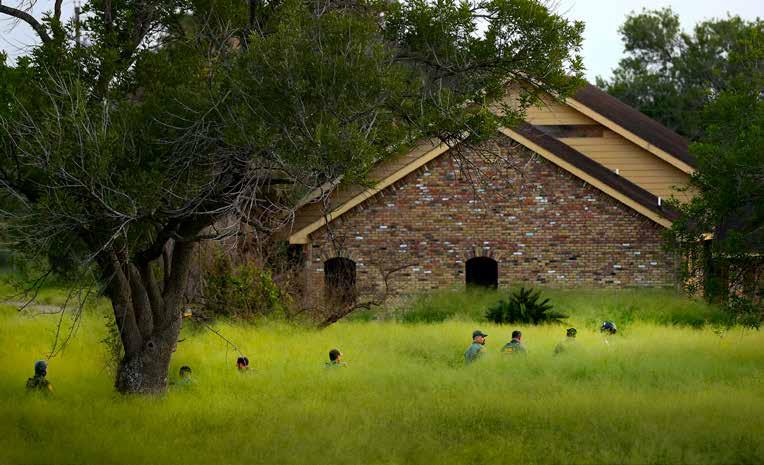
“Essentially,” he says, “(migrant asylum-seekers) get all the benefits of being U.S. citizens or legal immigrants, but without literally any of the cost, because asylum applications are free. Meanwhile, you’ve got millions of people in the pipeline overseas who have paid their fees, done their medical checks, and they’re waiting their turn to immigrate legally.”
The fact that migrants have to apply for the privilege of asylum by surrendering them selves to law enforcement agents at the border does not necessarily make their method of en try illegal. Rather, and for better or worse, they are trying to make use of a piece of the U.S. immigration system, if not as it was intended, then at least as it has been applied. Since 1980, more than three million migrants have been admitted into the country under Title 8.
WHEN THE COVID-19 PANDEMIC erupted in March 2020, Trump and his legal team found
another immigration enforcement tool in a little-known provision of American health law. Title 42 is a public health order estab lished in World War II to prohibit entry to the U.S. when the Centers for Disease Control and Prevention believes there is a serious danger of a communicable disease entering the coun try. Approximately two million migrants have been expelled from the border under the pol icy. This year, roughly equal numbers of mi grants have been expelled by Title 42 as were processed under Title 8.
Biden initially extended Title 42, but has since sought to end the policy. More than 20 states sued the administration to prevent it from doing so. A federal judge in Louisiana granted that injunction in May, and Title 42 continues to be used to expel migrants by the tens of thousands every month.
According to the left-leaning American Im migration Council and experts on both sides of the immigration debate, Title 42 has also inflated the number of migrant encounters at the southern border by between 25 and 50 percent. People expelled under the policy of ten make subsequent attempts to cross. Unless they successfully evade Border Patrol agents,
they’re stopped again, expelled again, and once again added to Customs and Border Protec tion’s tally.
The ACLU and the aid group Doctors Without Borders claim Remain in Mexico and Title 42 have both had a devastating impact on people seeking a better life in America. Immigrants forced back from the border into Mexico often live in squalid conditions. In the first two years of the Biden administration, the nonpartisan Human Rights Group docu mented nearly 10,000 cases in which migrants turned away at the border were kidnapped, ex torted, raped, robbed, tortured and subjected to other violent attacks in Mexico at the hands of cartels, petty criminals and even Mexican law enforcement.
Dylan Corbett, the founding executive di rector of the HOPE Border Institute, says Title 42 often forces migrants to forgo the official processes of crossing the U.S.-Mexico border. Instead, they resort to “less safe” ways of immi grating, he said, adding that policies like Title 42 and Remain in Mexico feed Mexico’s car tels, who have diversified their criminal efforts to include human smuggling and trafficking.
NEARLY ALL OF THE MIGRANTS who show up at the U.S.-Mexico border in recent years have been processed by Customs and Border Pa trol either as asylum-seekers under Title 8, or they’ve been expelled under Title 42. That’s a new development in the history of immigra tion and border security, says Cardinal Brown of the Bipartisan Policy Center. Prior to 2014, and regardless of the number of encounters at the border, the data show, she said, that 90-plus percent of migrants at the southern border were adult Mexicans trying to evade detection and enter the country illegally in search of work. Increasingly though, immi grants—especially the vast numbers of them arriving from the Northern Triangle countries of Guatemala, Honduras and El Salvador— voluntarily turn themselves over to Border Patrol agents seeking asylum, including more than a million this year. That change in mi gration patterns has strained America's im migration system to the breaking point, says Cardinal Brown.

Since 2014, the majority of migrants at the southern border — including tens of thou sands of unaccompanied children — aren’t coming from Mexico, but from the North ern Triangle. They’re being pushed out by economic insecurity, corrupt governments, violence and rampant crime, all conditions that can be traced back directly to American
influence in the region. They’re being pulled north by the prospects of a better, safer, more prosperous quality of life. In other words, they’re looking for the American dream.
Cardinal Brown says more and more mi grants voluntarily turn themselves over to border patrol agents in order to claim asylum under Title 8. This year, more than a million people have arrived at the border seeking asylum protection. All of them need to first be interviewed to determine the validity of their claims. Many but not all of those claims are granted immigration cases, and all of those cases must be decided in court. According to Cardinal Brown, these changes in migration patterns have strained America’s immigration system to the breaking point.
“Our processes, our facilities, our infrastruc ture; everything that we designed to enforce immigration law at the U.S.-Mexico border was designed for a population that was trying to evade capture,” she says. “They were Mexicans, so we could send them back to Mexico pretty quickly. This change in who is coming, and the fact that many of them are asking for asylum or are unaccompanied children, who have to go through some kind of court process, means that all of these processes, procedures and in frastructure that we designed basically for a quick turnaround, no longer apply, and it has overwhelmed everything.”
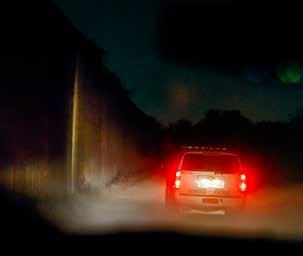
At the end of July, the country’s immigration courts faced a backlog of more than 1.8 mil lion asylum cases. The time and effort need ed to initially process those claims has put a strain on CBP’s resources, forcing it to divert agents from their patrols to assist with asy lum screenings. Many of those agents have understandably reached the point of empathy fatigue. They’re cracking, just like the system that employs them. What that means, Cardi nal Brown says, “is that we continue to be in crisis mode. And yet, we continue to try to fig ure out new ways to do the same thing, and it’s not working.”
SHORTLY AFTER HIS INAUGURATION, Presi dent George W. Bush announced his first trip out of the country would be to Mexico. Bush had run on a platform of “compassionate conservativism” and had touted fixing Amer ica’s broken immigration system, a top prior ity as far back as 1999 when he was stumping for votes in California, Arizona, New Mexico and Texas.
In February 2001, Bush made good on his campaign promise, traveling to the ranch of newly elected Mexican President Vicente Fox.
They talked up what they had in common, their deep mutual respect and their determi nation to work together to solve border issues.
Six years later, Bush’s immigration reform bill failed, largely due to opposition from members of his own party.
Fast forward to 2008. Then-candidate Barack Obama promised Univision’s Jorge Ra mos he’d send a comprehensive immigration bill to Congress within his first 100 days. That didn’t happen, and by 2016, The New Yorker was taking Obama to task for failing to keep his promises to immigrant families.
The last meaningful reform to U.S. immi gration policy was passed by Congress in 1986. Since then, calls from both sides of the politi cal aisle for reforms to meet the current chal lenges facing the system have come to nothing. Increasing partisanship in American politics likely means any hope for such reform remains dim. In Cardinal Brown’s opinion, Democrats and Republicans have “homogenized around opposite positionings” on immigration, and those stances have delivered some amount of electoral advantage. As she told me, “Once it’s become an electoral issue it’s harder to get people together to pass bills and solve it, be cause if you solve it, then you don’t have that issue to blame the other party about.”
Changes to the country’s immigration and border security policy are more likely to re semble Remain in Mexico and Title 42, tweaks to enforcement and the handling of migrants instituted by executive action rather than con gressional consensus. Hankinson of the Heri tage Foundation would like to see the creation of a new legal authority similar to Title 42 that would allow Customs and Border Patrol to im mediately expel migrants while also providing them a way to register their claims for asylum in Mexico or in their home countries.
Cardinal Brown agrees that processing asy lum-seekers outside of the U.S. would help re duce the number of migrants at the southern border. Among other provisions, she would

like to see expanded work visas to help meet the labor shortage in America, and a quicker process for handling asylum claims.
Dylan Corbett of the HOPE Border Institute says it should be acknowledged that, regardless of the policies America puts in place to pro tect its borders and limit immigration, people will continue to come. They’ll come no matter how grueling the trek, how high the walls, how
administration — who have said that to re duce immigration, we need to address its “root causes” by working to ameliorate conditions in countries people are fleeing, ensuring greater stability there and giving people less reason to leave. Narrowing the gulf between the haves and have nots of the world, however, is a big ask and a heavy lift, especially during a time of mounting global economic challenges. Shortly after he took office, Biden sent a comprehen sive immigration reform bill to Congress that included $4 billion in funding to address the root causes of immigration in Central Amer ica. A year and a half later, the bill remains stalled in a congressional subcommittee.
many agents or drones patrol the border, and no matter how harsh the penalties for trying to cross. They come because something is funda mentally wrong in their home countries. War, violence, persecution, corruption, poverty, lack of services and opportunity. Faced with those challenges, many flee north, pulled by Ameri ca’s promises of safety, stability, freedom, good pay, job prospects, the resources to meet their needs, in short, a better life.
There are many — including Biden and his
It is a near certainty that people will con tinue showing up at the southern border. So, how then are we to respond? Corbett has an idea, but it isn’t a political or legal policy — it’s a moral challenge. He suggests that when people come knocking on the country’s doors, we shouldn’t turn them away: We should wel come them. He lives and works in the border town of El Paso, Texas, and he says, “We’re better people when we welcome the other. We’re transformed by the reality of immigra tion in a positive way. We live that on a human level every day on the border. Immigration has strengthened us and ennobled us and enriched us. There’s nothing to fear.”
As of September, the new record for mi grant encounters in a single fiscal year stands at over 2.1 million, with still a month to go.
THE EVOLVING NATURE OF MIGRATION AT THE SOUTHERN BORDER IS STRAINING THE COUNTRY’S IMMIGRATION SYSTEM TO THE BREAKING POINT.

Take five minutes to experience divine love in a whole new way.

Britta Joslyn was at a breaking point. She’d decided to move out of her house in Heber City, Utah, after a split-up. But, finding a new home proved Sisyphean. She needed to find a rental close to her chil dren’s school that would accommodate her eight-year-old twins and her service dog, but everything was out of her price range. Land lords were asking her to prove she made triple the cost of the rent. She couldn’t. Joslyn is a speech pathologist, a professional that makes $83,000 a year on average. She shouldn’t be in this situation. Right?
Joslyn’s not alone in her struggle. Nearly half of Americans say housing affordability in their community is a major problem, ac cording to Pew Research. Across the country, home prices are now out of reach for median wage earners in 97 percent of counties. This is a significant increase from 2021, when 69 percent of U.S. counties were categorized as historically less affordable, according to the Home Affordability Report from ATTOM, a real estate data firm.
In almost every community you consider, the housing situation is bad. Very bad. Accord ing to Moody’s home price index, home prices nationally have increased 32 percent over the past two years. The National Association of
Realtors reports an even bigger jump of 39 percent. During Salt Lake City’s first phase of the Thriving in Place initiative, which was introduced in July by the Department of Community and Neighborhoods and aims to find solutions to housing displacement, near ly half of respondents knew someone who has already moved due to eviction or high hous
short supply of single family homes stymies homebuyers as out-of-state buyers, foreign investors and developers snatch up property. Tenants who lease can no longer afford in creasing rents, and, priced out of entering the homeowning market, are left with little to no options for housing, especially because the entire Wasatch Front has become increasing ly expensive. According to reports from the National Low Income Housing Coalition, extremely low-income renters in the U.S. face a shortage of approximately seven million homes.
ing costs. Almost 20 percent say they have had to move due to rent increases, while 13 percent are on the verge of moving due to in creased costs. Close to 40 percent of respon dents want to buy but cannot afford a home.
While rent usually increases 3 to 4 percent annually, it’s jumped a stunning 17 percent this year, and 79 percent over the past five years. Even in the face of the cooling housing market, demand is high and supply is low. A
Jasmine Walton, a marketing director at a housing nonprofit called NeighborWorks Salt Lake, spent a year trying to find a house on the west side of Salt Lake City where she grew up. She and her fiancé were beat out by cash of fers from out-of-state investors. She says they were able to finally close on a house because of a down payment assistance grant, closing cost grant and an 80/20 loan — public programs that operate on local, state and federal levels that she says she might not have known about if she didn’t work in the housing industry.
“It’s a market unlike any other we’ve had, at least in my experience, and I’ve been working on it for almost 50 years,” says James Wood, the Ivory-Boyer Senior Fellow at The University
“IT’S A MARKET UNLIKE ANY OTHER WE’VE HAD, AT LEAST IN MY EXPERIENCE, AND I’VE BEEN WORKING ON IT FOR ALMOST 50 YEARS.”

of Utah’s David Eccles School of Business Pol icy Institute. “For homeowners, we’ve pretty much priced out the next generation. Even if you’re a household with two moderate in comes, it will be a stretch.”
The Thriving in Place study found that a quarter of the city’s population is spend ing more than half their monthly income on housing. “It’s very hard for (people) to live anywhere along the Wasatch Front,” says Su san Lundmark, a project manager in the city’s department of community and neighbor hoods, who worked on the study. “People are doubling up, living in basements, living in cars. Or it’s possible that they’re leaving the region altogether.”
Currently, a quarter of local renters are con sidered “severely rent burdened,” which means that they’re spending more than half their in come on housing. That statistic extends across the region. And the nation.
A study from the Federal Home Loan Mort gage Corporation, or Freddie Mac, found that there’s a deficit of 3.8 million homes in the U.S. — a number that’s nearly doubled in the last decade, and that tracks across 47 states. Re search from Freddie Mac found that the over all housing deficit increased 52 percent from 2018 to 2020, in large part because of a lack of single-family starter homes.
Across the country, that’s impacting those who are essential to our communities: ed ucators like Joslyn, and service workers like Walton, who says that she has cousins in the Midwest who are facing the same thing. A re cent study from the Keystone Policy Center, a Colorado-based nonprofit, found that fewer than one-fifth of homes across Colorado are affordable to teachers who make an average salary in their district. In Denver, teachers making the school district average of $64,000 could only afford 14 percent of the homes in the area.
Home ownership — and even simply hav ing a roof over your head — is out of reach for more Americans now than it has been in generations. The housing market is broken, and it’s becoming increasingly hard for people in the middle of the economic pack, thanks to a complicated cocktail of supply short ages, investment developers, wage flatness, Covid-19 mobility and the weird, uneven edge of what can feel like a recession. There are tax credits and housing vouchers for low-income
residents — although those are largely insuffi cient, too — and high-income people can ride the waves because they have more flexibility or generational wealth, but it’s squeezing the middle class.
This is a national problem, and it won’t be easy to fix. But Utah may be experimenting with one solution that could be an example to the rest of the country.
Whether that example is cautionary or in spirational depends on how it goes.
she says. “A good percentage of my employees here, if they don’t come from a family that has property, are struggling to find housing.”
Demand is high, and supply is insufficient in part because of long-term stagnation in the building market that started in 2000. Across the country, the National Association of Re altors says there’s a supply crisis of millions of homes, and we’re in a hard economic cli mate to dig out of that hole after two years of Covid-related supply crises and a significant uptick in material cost thanks to gaps in the global supply chain.
MOST HOUSING PROBLEMS start with supply and demand.
In Utah, the population has increased by 18 percent over the past decade and the hous ing stock isn’t keeping pace. The median sales price of a home has doubled over the past five years — an unprecedented change. When people can’t afford to buy, they’re pushed to renting, and yet this is happening in the face of the lowest rental availability in 20 years.
These numbers stem from a multifaceted demographic boom. Wood says that Utah has long nurtured a business-friendly climate of economic growth. The unemployment rate is around two percent, and a range of big com panies — particularly in tech — have moved in. It’s also a place with a young population and a high fertility rate, so natural population growth is high, too. “We’re not a small state anymore,” Wood says.
That could lead to a strong economy, but not if wages and social infrastructure don’t keep pace. So far, they haven’t. Maria Garci az, the CEO of NeighborWorks Salt Lake, says nonorganic competition for housing — par ticularly from high-income earners moving in from out of state — has pressured the lo cal workforce and monopolized the desirable housing, “All that in-migration has priced local families out of the housing and rental market,”
When housing stock is limited and ex pensive, often the only people who can af ford to buy are investors, who see homes as a moneymaking venture instead of a place to live. Their presence is showing up in a few different ways. We’re seeing the rise of sec ond home rentals, as well as short-term rent als (like AirBnb and VRBO rentals). These short-term rentals are taking over an increas ingly large part of the market — an estimated 20,000 units in Utah, which equates to about half the housing shortage.
There’s also an uptick in investor-owned housing, a change in the market that start ed when investment groups began buying foreclosed properties after 2008, and then renting or flipping them to make money. Now, especially during the pandemic, inves tors have been buying even more homes, in cluding 27 percent of homes bought in Utah in 2021, according to a Pew Research study. There’s already a small stock of affordable housing, and developers won’t be changing that because materials are so expensive and labor is in short supply.
“When there’s demand for a commodity that can be used as an investment, it makes it impossible for individuals,” Thomas says. “This is a troubling forecast ahead of us.”
That forecast now upon us. The Pew study found that nationwide, nearly a quarter of home sales went to investors, short-term rental owners, large-scale landlords and other groups that don’t reside in their homes. A con gressional report in July called out four major companies — Pretium Partners, Invitation Homes, The Siegel Group and Ventron Man agement — for abusive techniques on that front. These combined forces have made it nearly impossible for a middle-income Ameri can to rent or own a reasonable home.
“FOR HOMEOWNERS, WE’VE PRETTY MUCH PRICED OUT THE NEXT GENERATION. EVEN IF YOU’RE A HOUSEHOLD WITH TWO MODERATE INCOMES, IT WILL BE A STRETCH.”
So if market economics doesn’t work, and hasn’t for a while, and the experts say we’re staring down a troubling forecast, what can we do about it? How does policy need to change? And how can Utah (Salt Lake City in particu lar) be a model for other places?
“WE REALLY FOCUSED on what we call the three Ps,” Lundmark, from the city says. “Producing new affordable housing, preserv ing existing housing and protecting tenants. Without all three we’ll have a hard time not displacing people.”
She says there’s no silver bullet, and at the city level, they’re limited by state and federal regulations — some of which directly conflict with increasing density. But the city is trying to build partnerships, pressure policymakers and work with community members to find ways to change that are both pro-development and pro-tenant. They want to learn from what’s worked elsewhere, and be a model for grow ing cities.
One approach is to increase the housing supply. Wood says that’s tricky in a lot of ways, in part because the city itself is already dense (by regional standards), with 1,689 residents per square mile. Creating more housing is go ing to require building infill, reducing restric tions and changing zoning and building codes.
But that’s likely the easiest piece of the puzzle. In 2021, Utah builders and develop ers responded by proposing and breaking ground on a record number of rental units. “What we’ve seen in this last year is really pos itive,” Wood says. “We’ve seen approximately 40,000 building permits including 47 percent for single-family homes, and more high densi ty permitted in the last year than we ever had. It’s a move in the right direction.”

To make that move as useful as possible, new residential developments that will benefit the most people are critical. And just as critical are the incentives for developers to build ac cessible housing instead of high-dollar luxury condos. “We need to build affordable options and then find creative ways to fund them,” Garciaz says. “We need some kind of subsidies that will help get families into housing, and rentals too, people have to live somewhere.”
For example, NeighborWorks is work ing on a shared equity community land trust that will build 32 units of single-family houses and townhomes for residents that make 120
percent or less of the average mean income — which the U.S. Department of Hous ing and Urban Development says is $51,560 a year — to thread the needle of providing middle-income workforce housing and getting people into homes. “Some people say it’s not affordable housing, but it’s really difficult for that population because they don’t qualify for subsidized housing or down payment grants when the market is building luxury units,” Garciaz says. “One of the ways we can help them is through shared equity, which is better
show that it’s not so simple. In September, a group of homeowners in New Canaan, Con necticut, for example, raised $84,000 to fight a proposed apartment complex that would include 31 rent-restricted units for households with moderate incomes. They worry that in creased density would harm property values and diminish historic city structures.
But other cities — like Spokane, Washing ton and Minneapolis — have instituted zoning changes that allow for greater density with out pushback. But these adjustments aren’t always straightforward and come with their own drawbacks. For instance, the changes in Minneapolis were held up because of concerns about how growth will impact migratory birds and green spaces.
“You have to consider, ‘Are the benefits of growth being shared equally?’ and right now we know they aren’t,” Wood says. Nothing will be perfect, and communities have hard choices ahead of them, but Wood says those changes can be a way to build healthier, more equitable cities, where educators like Joslyn can live where they work, and young people like Walton can build families.
than zero equity when you’re trying to become a homeowner.”
Research shows there’s also a need to preserve existing housing to keep people like Walton and Joslyn in their homes and neighborhoods, to reduce the turnover of single-family homes that may turn into rental properties or be demolished for mul tifamily apartments.
Lundmark says the city wants to develop fi nancial and social incentives that keep people in place. That could be anything from legal aid to financial assistance for home repairs to off setting other costs like transportation or food, which can give residents a buffer to help them stay put. “We want to look at the whole spec trum that makes it easier for people to stay and thrive,” she says.
There’s proof that those kinds of programs can help if they’re done right. For example, in Salt Lake City, tax credits to developers that provide incentives to develop affordable units, like the Low Income Housing Tax Credits, have helped preserve nearly 7,000 affordable rental units over the past 30 years.
But other communities around the country
During her search for a home, Joslyn dog gedly called, toured and applied for any rental that might work for her and her two children. “I couldn’t find anything anywhere, and I re alized I wasn’t eligible as a single mom that wanted a two bedroom with a dog,” she says. “Landlords were asking us to show triple the posted rent. I don’t make that, working in education.”
By luck, she ended up in a friend’s rental property in Millcreek. Her twins have their own room. There’s enough space for their dog. Her commute is more manageable these days. It’s a story that, for now, ended with a mother finding a place for her family to land. But Jos lyn shudders to think about what might have happened if she hadn’t. “I would have had to stretch myself so thin.”
“ALL THAT INMIGRATION HAS PRICED LOCAL FAMILIES OUT OF THE HOUSING AND RENTAL MARKET. A GOOD PERCENTAGE OF MY EMPLOYEES HERE, IF THEY DON’T COME FROM A FAMILY THAT HAS PROPERTY, ARE STRUGGLING TO FIND HOUSING.”
It was January 28, 1986. The space shuttle Challenger sat on Kennedy Space Center’s pad 39B, awaiting the go-ahead for its 10th launch. Boosters rumbled. The radio chat tered. And the eyes of NASA turned toward Morton Thiokol in Utah.
Following the recovery of the engines that had propelled the shuttle Discovery into space in January 1985, engineers at Ogden’s Morton Thiokol Inc. found black soot on the rings that seal and separate the motors from the fuel supply. That meant one thing: a leak. The only variable they could isolate to explain why 23 of 24 previous launches hadn’t produced that same soot was temperature. It was an unusu ally cool 53 degrees along the Florida coast on the morning of Discovery’s launch. And with the Challenger awaiting clearance a year later, meteorologists were predicting an unheard-of dip to below freezing.
One engineer wrote a stark memo: The seals, he believed, could fail in freezing tem peratures. “The result could be a catastro phe of the highest order — the loss of human life,” he said. But with the scheduled launch approaching and Christa McAuliffe, the first winner of the Teacher in Space project, on board, NASA wanted to make it happen. Mor ton Thiokol engineers wouldn’t sign off on a launch, but management opted to give the go-ahead anyway. The historic liftoff would proceed as planned.
The temperatures were as anticipated: At 7 a.m., the mercury dipped to a mere 24 degrees.
Icicles crusted the launch pad. NASA delayed the launch to give the ice time to melt, and at 11:38 a.m., with temperatures at 36 degrees, the engines ignited. Unknown to the crew, to mission control or to millions watching on TVs across the country, the seal in the right booster engine began to fail almost immedi ately. Hot exhaust escaped and began burning a hole in the fuel tank, which held 525,000
commonly called the Rogers Commission Report, mentions Utah 16 times, placing it at the center of one of the most tragic and wellknown moments in the history of space explo ration. If you followed that saga, you probably aren’t surprised by any of this; Utah’s role in the Challenger disaster was well-publicized at the time. But what may surprise you beyond that dishonorable distinction is the essential role the arid Intermountain West has played — and continues to play — in all manner of space missions. From New Mexico to Arizona, from Apollo to Artemis, this slice of the coun try has proven essential for some of the most consequential expeditions in human history. At almost every major stepping stone toward the cosmos — whether past, present or future — you can find, if you dig enough, roots in the American West.
gallons of liquid hydrogen and liquid oxygen. When the fumes punctured the tank 73 sec onds after liftoff, the shuttle erupted into a fireball and was torn apart by the devastating forces of compromised aerodynamics. All sev en crew members died instantly, making the Challenger the deadliest space disaster in his tory and leading to the suspension of the shut tle program and an investigation commission ordered by then-President Ronald Reagan.
The resulting 450-page document,
“In the West, we have certain resources and talents and treasures that can be brought to bear upon space exploration,” says Paul McFarlane, director of Reno’s Fleischmann Planetarium and Science Center. “And I think sometimes, those parts of the story are not known, and are maybe underappreciated.”
For as long as humans have existed, we have looked to the stars. For guidance. For stories. For God. But only within the last hundred-or-so years have our ambitions to walk among the heavens become a reality — a reality that, arguably, began to take shape in Roswell, New Mexico.
AT ALMOST EVERY MAJOR STEPPING STONE TOWARD THE COSMOS — WHETHER PAST, PRESENT OR FUTURE — YOU CAN FIND, IF YOU DIG DEEP ENOUGH, ROOTS OF THE AMERICAN WEST.

In 1930, Robert Goddard arrived from Massachusetts with a plan. He’d been work ing on it for years, having patented both a multistage rocket and a liquid-fueled rocket by 1914. By 1926, he conducted the first suc cessful rocket launch. But his Massachusetts neighbors had grown wary of his potentially dangerous experiments. So he ended up in Roswell, naturally. It was isolated, it didn’t feature much flammable vegetation and it had good weather nearly year-round — the per fect spot to launch rockets. His research there yielded the first human-made vehicle to break the sound barrier in 1935.
Wernher von Braun, the notorious Nazi-turned-American, also set up shop in New Mexico after World War II, leading to more advances at what was then known as the White Sands Proving Ground. The National Aeronautics and Space Administration was birthed in 1958, and using designs — and dreams — from Goddard and von Braun, reaching the moon started to seem like a real possibility. But before that could happen, a closer study of where we were going was warranted.
Utah State University’s Space Dynamics Lab traces its origins to around that same time — 1959. That’s when a scientist named Doran Baker arrived, fresh off a postdoctoral study at Harvard, hoping to conduct experiments in electrical engineering. His work flourished for decades; along with his brother, Kay, he ex plored the lingering effects of atmospheric nu clear weapons testing. In 1982, Baker merged his work with another lab to create today’s Space Dynamics Lab and “helped put Utah State on the map as a hub for space research,” according to his obituary published earlier this year. “That research and development over the last 60-plus years,” explains current lab president Jed Hancock, “has evolved into who we are today” — a well-known lab in the admittedly niche space travel world, charged with collecting asteroid samples and leading the boom in small satellites.
“There was other research that was going on about space in Utah at the time (we were founded), so I don’t want to claim we’re the oldest,” Hancock adds, “but we’re right in the roots of it.” That legacy continues with proj ects like SunRISE, a constellation of six small satellites anticipated to launch in 2024, all to be built in Logan, Utah, tasked with the mis sion of studying solar storms. Solar storms can knock out satellites, power grids and, in the future, could have consequences for manned missions to Mars and beyond. Understanding them will help scientists mitigate their effects. In space travel, preparation is everything.
That’s precisely how the eventual Apollo 11 crew — Neil Armstrong, Buzz Aldrin and Mi chael Collins — ended up in northern Nevada in August 1964 with 11 other astronauts. They’d congregated on the outskirts of Reno for a sim ulated survival experience to prepare them in the event of an errant landing upon reentry to Earth. The chances of such an occurrence were remote — and, ultimately, unrealized. But his time in the dusty, bright reaches of the West seemed to have left an impression on Arm stong, who upon becoming the first human to step foot on the moon remarked, “It has a stark beauty all of its own, but like much of the high desert of the United States, it’s different, but it’s very pretty out here.”
Shortly after the success of the Apollo 11 mission in 1969, the then-president of the University of Utah, James C. Fletcher, was appointed by then-President Richard Nixon to lead NASA — specifically the development of the space shuttle program. He left that po sition in 1977 but was reappointed by Reagan in May 1986, tasked with rehabilitating the
organization’s reputation following the Chal lenger disaster. His tenure, which ended in 1989, began that process. Unfortunately, any progress was undone in the early 2000s.
It was February 1, 2003. From just outside her five-wheel camper nicknamed “The Outpost,” Shannon Rupert looked to the sky with awe. The space shuttle Columbia, en route to a planned landing at Cape Canaveral after a 16-day trip to low Earth orbit, whizzed over head outside of Hanksville, a 162-person town in Utah’s canyon country. Behind it, a trail of exhaust gleamed like a golden ribbon in the morning sun. For Rupert, it was a reminder that her work here on Earth had a place be yond, too.

Rupert believes that soon enough (from a planetary perspective of time), it won’t be uncommon for humans to explore in orbit, on Mars and beyond. The gravitational pull of the stars isn’t just a force of physics; it’s a force of human nature, a magnet of the imagination. It’s the thrill of the unknown right before it is discovered. A never-ending Christmas Eve. We can’t help ourselves. We conjure images of what “Star Trek” aptly called the final frontier; the last escape hatch — in theory, at least. And space — not only the one in the sky, but the one that denotes large, open areas — is vital to achieving that science fiction-worthy goal.
Rupert serves as director of the Mars Des ert Research Station, located in the wide-open expanse of the Southwest desert. The facility bases its operations on the “Mars Direct” plan authored in 1990 by aerospace engineer Rob ert Zubrin, which outlines the goal of getting people to Mars as quickly and cheaply as possi ble. It calls for the vehicle that is used to reach Mars to become living quarters upon landing. In Utah, Rupert operates a simulation of the Mars Direct plan — preparing people today on Earth for what is to come on the red rock planet. The simulator consists first of what Rupert calls the “tuna can” — a few dorms, a kitchen and a communal table. The rest of the simulation quarters are accessible via tunnels, which lead to all six buildings on the campus, including an engineering bay, a greenhouse and a pair of observatories. A simulated ex perience of life on Mars via the station’s field courses can range from a week to a month in length. Participants cut off contact with the outside world and communicate (on a delay) with “mission control” — i.e. Rupert. “We get a lot of scientists and engineers,” she says. “But we also have sociologists, psychologists,
artists, astronomers — I mean, you name it.
The people who come run the full gamut of interests and how they relate to a future as an interplanetary species.” The station is funded by course fees, as well as by donations, since it’s not affiliated with NASA. Although NASA does have a similar program for aspiring astro nauts in Hawaii.
Together, the programs illustrate human kind’s obsession with Mars — foremost be cause of all the celestial bodies in our solar system, it’s both one of the most likely to contain the ingredients necessary for life and one of the most accessible. Knowing whether life on our planet stands alone in the universe has been a fundamental question of human kind for as long as our species has looked up at the sky, prompting NASA to send rovers searching for signs of it on the red planet. And for the uber wealthy to invest in a future beyond our atmosphere.
Space-bound private companies founded by billionaires have sprung up in recent years. There’s Jeff Bezos’ Blue Origin. Elon Musk’s SpaceX. Richard Branson’s Virgin Galactic. Each has offered high-minded explanations for their interest in space, from their lifelong, understandably human fascination with the larger universe to space’s potential to save humans from extinction, if only we can figure out how to become an interplanetary species in time. That, of course, obscures their more immediate motivations, which could be any
number of economic incentives, from resource extraction to tourism to building the bridge toward interstellar colonization. Ultimately, though, their interests aren’t all that different from those of the Mars Desert Research Sta tion or of NASA: This is all about understand ing the nature of life, of what it means to be alive — human or otherwise.
Not too far from Rupert’s home near Hanksville, along the dried-up edges of Walk er Lake, Nevada, scientists have been trying to understand what, exactly, fossilized microbial life would look like in a desolate, unforgiv ing place like Mars. In the oppressive heat of the northern Arizona desert, a NASA initia tive called the Desert RATS Analog mission (“RATS” meaning Research and Technology Studies) spent 13 years testing robotics equip ment, including potential Mars rovers that would allow humans to explore the Martian surface. Today’s robotic rovers already offer us a glimpse of the terrain, helping scientists confirm, for example, that liquid water once flowed on the planet’s surface. But if humans are to someday reach the surface ourselves, tests like the Desert RATS program will prove vital in what we’re able to accomplish while we’re there. Until then, the best we can do is continue to study Mars and other celestial bodies from here on Earth, which has never been easier.
For over two decades, researchers have been using the Utah Test and Training Range,

one of the largest military installations in the world, as a safe landing place to bring back samples from different space phenomena. Like atoms from the sun, or in the case of a program called the Stardust mission, pieces of a comet.
Don Brownlee, a professor of astronomy at the University of Washington, spearheaded the Stardust mission from its launch in 1999 to its landing in 2006. He was there, in the Utah desert, when the landing module reentered the atmosphere at a speed of over 28,000 miles per hour — a record for the fastest speed of any human-made object returning to Earth. “It was like the finger of God coming out of the sky,” he says.
He and many others studied the samples, which told them that comets may contain molecules ejected from a young sun, and that comets may have formed very differently from how scientists then theorized. The mission didn’t unequivocally contribute any knowl edge that’ll lead to humans someday zipping through the stars, but it did add to our library of intrigue. To the Star Trek fantasy that forc es us to marvel at the very concept of a comet.
That tempting romanticism, though, can sometimes blur stark realities. Realities that Mars, our solar system and space itself are all extremely hostile to human life, as embodied by that January morning in 2003 that Rupert looked to the sky.
Not long after passing over Utah, while soaring above Texas, the space shuttle Colum bia disintegrated and rained debris across the South. A piece of the shuttle’s reusable heat shield had been damaged during the launch, and the result was another seven dead astro nauts. Rupert watched it unfold on satellite TV, knowing she’d have to break the news to the crew undergoing a simulation. Combined with the desolate landscape spread out before her, Columbia’s demise offered a dose of terri fying clarity. “The realities of spaceflight,” she says, “were very, very real in that moment.”
WALKER LAKE, NEVADA, IS THE SITE OF SCIENTIFIC STUDIES HOPEFUL TO DETERMINE WHAT MICROBIAL LIFE MIGHT LOOK LIKE ON MARS.UCG/GETTY IMAGES
Indeed, spaceflight is risky — much less spaceflight to Mars. But again, that’s part of the appeal; the voyage into the unknown that makes disaster inevitable but giving up impos sible. It’s part of what we’ll have to confront as companies like SpaceX and Blue Origin make civilian space flights more accessible; as the James Webb Space Telescope reveals new truths about the universe; and as our probes currently roving Mars search for clues about life past — and future.


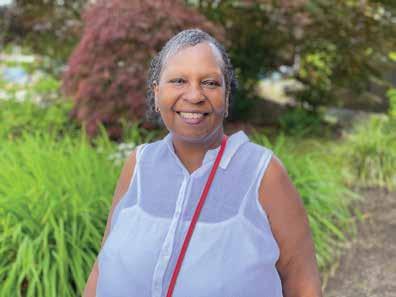

It was 2018. The idea of collecting rock sam ples from Mars had already been around for decades. The Soviets tried it in the ’70s. The Americans had thought about it since at least the early 2000s. But after many false starts and dashed hopes, the newest iteration began four years ago. This go-around appears to be the closest yet to achieving the long-awaited goal: sending a collection of rocks collected on and launched from the Martian surface back to Earth.
The project, known as the Mars Sample Re turn Campaign, has plenty of existing research to draw on, from Brownlee’s Stardust mission to an ongoing experiment known as OSIRISREx, which is set to return an asteroid sample to the dusty Utah desert in 2023. “Scientists can learn a lot about the building blocks of life and how the solar system was formed” from studying these samples upon their re turn, Hancock says. And aside from showing us where our galaxy came from, these samples can also offer a glimpse of where space explo ration is headed.


Brian McCann, CEO of St. George-based startup Intergalactic, puts it this way: Space is going to be the next “kingmaker” industry — like the internet was with the advent of megacompanies like Google and Facebook. It’s one of the few underdeveloped industries left, making it ripe for commodification and financial reward. Its proximity and overlap with the defense industry also mean a chance at lucrative government contracts. “All of a sudden,” McCann says, “you have these giants that pop up that really do take advantage of the moment” by outcompeting the biggest existing defense contractors, like Northrop Grumman and Lockheed Martin.
McCann’s company focuses on heat reg ulation. Much of developing space technol ogy is electric, and electric batteries require temperature stability — they can’t be too hot or too cold, which is difficult to manage in the extreme environments of space. That’s where he saw an opportunity. “A lot of people are stuck in the old paradigm,” he contends. “They’re not moving fast enough. They don’t realize what’s in front of them.” As far as he can see, what’s ahead is nothing less than ex ponential economic growth as the industry continues to find its footing amid an endless opportunity for expansion. But that’s set off some alarm bells, most obviously embodied by the rapid proliferation of satellites. One recent study argues that there’s nowhere left on Earth to study the sky free from light pol lution because of the churning maw of satel lites now circling the globe, with thousands more set to launch in the coming years. Such unintended consequences, critics argue, are exactly what will become the norm if privat ization takes over space exploration. “If the quest to become an interplanetary species becomes entirely propelled by profits,” asserts one article in BBC Science Focus magazine, “we risk losing sight of the values that make space exploration so important.” Space has, in
the past, felt like a collective human destiny; something to be reached as a species. Does privatization, where profit rather than knowl edge becomes the ultimate barometer of suc cess, change the equation?

For now, at least, a collection of governments continues to push space exploration, whether for nationalistic or humanistic reasons. One such mission, NASA’s Artemis program, aims to put humans back on the moon by 2025. The Artemis rocket boosters were manufactured in northern Utah at the same facility that built the malfunctioning Challenger rockets. That company has changed names and ownership several times since then and is now owned by Northrop Grumman, which has had to prove itself anew. It’s a fascinating metaphor. Think about it: The same facility that manufactured rockets that accidentally killed seven people is still manufacturing similar rockets for similar missions over 35 years later. The scientific im perative must march forward. Now, and in the decades to come.
The Mars Sample Return Campaign plans to bring rocks back from Mars by 2033; landing tests are already underway in the Utah desert. The knowledge gained from those tests, com bined with the Artemis program — a sort of precursor project — could help send humans to Mars by the late 2030s or early 2040s, ac cording to NASA’s current plans. That means we’re still about a generation removed from that vision coming to fruition.

How appropriate, given that the desire to discover space is indeed generational — capturing the minds of ancient philoso phers as much as children learning to read their first books. McAuliffe, the intrepid teacher-turned-astronaut who died on that fateful January morning aboard Challenger, inspired a man named Victor Williamson. A Utah science instructor, Williamson de veloped Pleasant Grove’s Christa McAuliffe Space Center — a space voyage simulator fa cility that has hosted field trips and summer camps since 1990, indoctrinating the next gen eration with a desire to be amongst the stars (or at least learn about the planets). “We have a lot of people that go through and get excited about the subject,” director James Porter says. “We’re hoping to get some of these individuals excited about going out and discovering new things, but also opening their minds to recog nize that they can be a part of something going forward. They have an influence on what’s go ing to happen.”
On Earth, and in the heavens.






























Right now, most clinical information is not regularly shared with the researchers who are trying to uncover new information about cancer every day, but you can help change that. Patients can help accelerate research by sharing their data and unique experiences.
When patients stand together with researchers, they can unlock new discoveries and treatments. People with all types of cancer may be eligible to join Stand Up To Cancer, Count Me In and more than 7,500 patients who have already participated in this mission to accelerate the pace of cancer research.

When we talk about energy sys tems, there’s inevitably many mentions of “the grid.” It’s a simple enough phrase, evocative of a mesh of wires, or an area crisscrossed by city streets — both of which seem like fitting images for many people using energy from a shared source. People toss it out so casually and everyone nods along like we know what it means, sort of like “the cloud.” (I picture all my undeleted emails floating above me, packed tightly together in a dark mass, my devices repeatedly telling me I need to buy more aerial real estate.)
Really, though, there is no singular “grid,” nor could I ever find one for you on a map. “The grid” is many grids, interconnected sys tems of electrical production, transmission and delivery. Sometimes, people seem to be referring to the hardware exclusively: physi cal infrastructure like power plants, transmis sion lines and the breakers in your basement. But other times it sounds like they’re talking about all of it — the regulators, the private and public utilities, the market where excess power is bought and sold, the teams of peo ple and massive computers whose job it is to keep the whole vast, dispersed, sprawling op eration running.
“The grid,” simple as the name is, is one of the most complex systems humans have ever made. And except for during blackouts, the massive apparatus that allows us to have light at a twitch of our fingers is largely tak en for granted.
Today, we are in the midst of overhaul ing the grid, with legislation and private
initiatives that are replacing fossil fuels with renewable energy like wind and solar. The idea of transitioning to renewable energy has been around for years. But, in practice, it’s turning out to be a challenge that shares many qualities with the grid itself: regional ly interconnected and locally specific; at the same time both rigidly logical and bafflingly political; and subject to regulations from multiple jurisdictions while power over it re mains both dispersed and monopolized.
regional level. Specifically, in the mountains of the American West.
The West, as we know it, is increasingly be ing heralded as ground zero for climate change in America. It’s been recognized as far back as 2009, when a report on U.S. climate change impacts prepared by the U.S. Global Change Research Program declared unequivocally that, “human-induced climate change appears to be well underway in the Southwest.” That report also predicted the Mountain West as one of the hardest-hit regions in the United States as climate change accelerates. From the Colorado River Basin to the Great Salt Lake, we’re witnessing those premonitions now.
So why isn’t ground zero also acting as the cradle for renewable energy in America?
But change is possible, and strides have al ready been made. There have been commit ments from private companies and a relatively recent slew of legislative goals that promise “net-zero” and “100 percent renewable energy use.” In April 2022, the U.S. hit a record high for renewable generation — 28 percent of the energy produced that month was by wind, so lar and hydro. And while that’s notable prog ress on a national scale, those numbers don’t tell the whole story of what’s going on at a
In the Intermountain West, the bulk of electricity is still produced by nonrenewable sources. Utah relies on coal for 61.8 percent of its electric generation. Wyoming tops the regional list — relying on coal for 73 percent of electric output. Over 40 percent of the energy in Montana and Colorado is also pro duced with coal. Nevada depends on natural gas for 62 percent of its electricity. Natural gas is considered to have significantly lower emissions than coal but is not classified as a renewable energy source. It also has the risk of leaking methane, which, according to the EPA, is 25 times more potent than carbon dioxide at trapping heat in the atmosphere.
There are no coal plants in Idaho — in fact, the state uses hydropower for more than 50 percent of its electric needs, and Idaho Power says it will stop buying energy from coal plants
WHY DOES THE WEST LAG BEHIND ON GREEN ENERGY?
TRANSITIONING TO RENEWABLE ENERGY IS TURNING OUT TO BE A CHALLENGE THAT SHARES MANY QUALITIES WITH THE GRID: BOTH RIGIDLY LOGICAL AND BAFFLINGLY POLITICAL.

in other states by 2028. Idaho is the exception, though, as the rest of the Intermountain West continues to produce and utilize the majority of its energy with fossil fuels — coal and nat ural gas.
Overhauling infrastructure is a tall order, no matter where you are. Our “grid” is held intact by a web of 700,000 circuit miles of electric lines strung across U.S. soil. Unless you are one of the estimated 250,000 Americans living offgrid, communities of every size are navigating the challenges created by limited budgets, regulations, politics, monopolistic utilities and physics. In the West, those difficulties are amplified by size, geography and population density. Having fewer people doesn’t make the problems any simpler — it just makes the tax base to fund solutions smaller. How dispersed the inhabitants of the Intermoun tain West are doesn’t make things any easier, either — it’s inefficient from the perspective of utility companies.
The West isn’t going to get any smaller, and it will be a long time, if ever, before the pop ulation density rivals the Eastern Seaboard, or even the Midwest. But that doesn’t mean there aren’t paths forward.
A VISIT TO two Montana power plants — one a massive old coal plant making its way off the grid, the other a pumped hydro facility being developed at a glacial pace — reveals the tech nical challenges of renewables and the deeply entrenched, regionally interconnected nature of some of the largest fossil fuel projects still out there.
The historic mining town of Colstrip is home to the Colstrip Power Plant. Built in the 1970s, over the last decade the facility was one of the most polluting coal plants in the coun try. It’s been on course to shut down for years. Colstrip’s value has decreased by 87 percent since 2013, and two of the four units perma nently shut down in 2020.
When exactly the remaining two units will stop burning coal is a topic of debate between plant’s ownership, which spans several states. Seventy percent of the electricity generat ed at Colstrip belongs to utilities in Oregon and Washington. Montana’s NorthWestern Energy owns only 30 percent of one unit. It’s the out-of-state owners that are driving the plant to close down, since the coastal states of Washington and Oregon have mandated an end to all coal-generated energy use by 2025 and 2030, respectively.
But ongoing legal proceedings over when
the plant will close, involving one party that has filed for bankruptcy and two new Mon tana laws that would make it more difficult to close the plant, keep the exact timeline hazy. As of the most recent reporting, NorthWest ern still planned on getting energy from Col strip until 2042.
Besides delays caused by messy interstate squabbles over where and how a coal plant will shut down, the two other operating coal pow
day and year, depending on the weather and people’s activity. How much solar and wind power, and, to a lesser extent, hydropower, is available also varies by the time of day and the season, in a way that doesn’t always align with when it’s needed. For renewables to fully replace coal, a massive amount of storage will need to be added to the system so that when it’s breezy and sunny and turbines and panels are collecting more energy than people are us ing, the excess can be stored for when it’s dark and the wind is calm. Currently, there’s very little storage built into the grid, because fossil fuels never needed it.
Right now, nearly all of the storage that’s been built exists in the form of water in res ervoirs. With dams we can control how much water passes through into energy-generating turbines, allowing only how much is needed to be used and the rest to be held back and released when there’s demand for it. Pumped hydro storage facilities are artificial replica tions of this dynamic, pumping water from a lower reservoir to an upper to absorb excess energy from the grid, and releasing that water back down when it’s needed. But despite being years into the process of planning and per mitting — and despite how critically the grid needs storage for renewables to truly replace fossil fuels — ground still hasn’t been broken on the Gordon Butte facility.
er plants in Montana are illustrative of other fates sealed for coal facilities. One small plant, no longer profitable or appealing to buyers, will likely go offline in 2024. The other was purchased to power cryptocurrency mining. The energy-intensive practice had the facili ty’s furnaces running more than three times as much as they had in recent years when making and selling electricity for the grid.
The Gordon Butte Pumped Storage Hydro facility, on the other hand, could be every thing that Colstrip isn’t. A couple of hours to the northwest of Billings is Gordon Butte, the proposed site for the facility that would both store and produce about two-thirds as much power as the two decommissioned Colstrip units using a closed-loop reservoir system.
Before it’s evident why a facility like the one at Gordon Butte is such a big deal, the current state of electricity and our grid as it current ly functions need to be illuminated. Because fundamentally, the biggest challenge in tran sitioning to renewable energy sources is that they have to be integrated into a grid designed for fossil fuels.
Energy demand fluctuates throughout the

One reason is that the project’s value is being decided within a system of investors, utilities, and regulators that, once again, was built around fossil fuels. It doesn’t account for the value storage brings on a grid-level scale by enabling more of the wind- and solar-generated energy to be captured and put to use. Utilities make money by charging to have electricity transported on their pow er lines, and power plants make money by selling the energy they generate. But where, exactly, storing energy fits into the equation is unclear (it’s sometimes folded into net me tering, which arguably doesn’t capture its val ue on a large-scale). According to a report on pumped hydro storage by the U.S. Depart ment of Energy, this is a common issue with developing pumped hydro storage.
At its simplest, “transitioning to renewable energy” means getting coal and fossil fuels of fline and renewables like hydro, solar and wind online. But the realities of that proposition are far from simple thanks to messy, sometimes multistate plant ownerships, energy users like cryptocurrency miners prolonging the life of coal plants, and a system that isn’t equipped to
store energy to smooth out the peaks and val leys of intermittent energy sources like wind and solar.
SO WHAT HAPPENS now?
The specifics vary somewhat depending on where you are, but in most states, it’s possible to set up your own renewable power genera tion (usually solar, since most people don’t have room for a 500-foot wind turbine) while staying on the grid through something called net metering. Colorado, Utah, Wyoming, Montana, Nevada and New Mexico all have laws allowing for it in one form or another. Ar izona does not, while Idaho gives utilities the choice to voluntarily offer net metering.
The idea is that once you put up the solar panels, your household energy needs will first be powered by those. During periods when the panels aren’t producing as much energy as you need, you’ll get electricity from the grid as usual. When you’re generating more power with solar than you can use, the excess will be let out into the grid to power your neighbors’ houses. A meter installed with the solar panels keeps track of how much energy you’re con tributing to the grid, and the value is counted against your monthly bill so that you’re only paying the utility the “net” of the energy that you use.
The concept and technology are straight forward enough, but as usual, the devil is in the details. Exactly how much the “consum er-generator” gets paid for the energy they contribute to the grid depends on the particu lar state’s net metering laws. Sometimes there will be a limit to the amount of energy you’re allowed to generate, or a cap on the percent age of your total energy use that can come from your personal solar. Some places allow for community and aggregate net metering, where multiple buildings have their net con tribution counted together.
Just as an example, let’s say you’re trying to set up solar at your house in Laramie, Wyo ming. Net metering has been legal in the state since 2001, and last year withstood attempts of repeal. Rocky Mountain Power, a private utility and the largest energy provider in the state, supported repealing net metering, and other proponents of the measure said that net metering shifted costs onto those consumers without the means to afford the upfront costs of blanketing their roofs in solar panels (or who don’t own property at all).
Later research found that the benefits “outweigh the costs,” and that costs weren’t
being shifted to consumers without solar panels, which is in line with research on net metering writ large. But the debate does point to a major limitation in taking indi vidual action to reshape the grid, and why true change, especially in the Intermountain West, needs to be at the grid-level and in clude as many consumers as possible.
It comes down to simple economies of scale: a mile of power line costs the same to build whether it serves one hundred people or one thousand, so a utility makes more money serv ing more densely populated areas, which are in short supply in much of the West. The same holds true for power plants — the initial costs
parties with an aversion to regulation, like most of the Intermountain West. The politics of renewables might not be quite what you expect, though, at least in the Intermountain West. Policies like net metering are kept alive by strong independent streaks as much as by concern over climate change.
The Conservative Climate Caucus in the U.S. House of Representatives, a group of Re publicans who want “conservative solutions to lower emissions while enhancing economic prosperity,” was formed by Utah Congressman John Curtis in 2021. But not a single House Republican from that caucus supported the passage of the Inflation Reduction Act this summer, which is, among other things, the largest investment the U.S. has ever made in climate change adaptation and sustainable en ergy infrastructure. And yet, that hasn’t trans lated into a lack of investment. Many of the largest foreseeable investments in renewables will be in Republican congressional districts. Utah’s 2nd District is set to increase its solar capacity by two-thirds, the 13th-largest solar investment of any district in the country, in 2025. Wyoming, which has just one represen tative in the House thanks to its low popula tion, will get the sixth-largest boost in wind generating infrastructure in 2026.
of permitting, development and construction mean that the larger a facility is and the more people it serves, the quicker it’s likely to turn a profit for its owners. The more people that opt out of the grid, the less financially appeal ing large-scale infrastructure projects, neces sary for a timely renewable transition, become to private utility companies.
From this perspective, your home energy renovation budget would be better served installing a heat pump (an incredible, ener gy efficient way to cool and heat buildings), weatherizing and increasing the overall energy efficiency of your home, as opposed to going “off-grid.”
TRANSITIONING THE GRID is ultimately a polit ical problem as well as a complex logistical and technical one. Despite the technological and regulatory limitations, which energy sources we research and build infrastructure for is a choice. For years, the lack of top-down, federal leadership has made changes to the grid a slow and arduous process in states with powerful historic fossil fuel interests, like Montana and Wyoming, or in those governed by political
The goal of the many pledges and promises mentioned above for renewable energy tran sition is a simple one: get to the point where each and every kilowatt in the grid comes from solar, wind or running water. Before that can happen, coal plants still clinging to life need to be put to rest by their array of owners. Storage needs to be built to smooth out the ebbs and flows of intermittent availability, and create the balance between availability and demand that could be achieved in real-time. Individu als need to be supported to do their part in a way that’s good for the collective. But there’s a lot to work with, too, since those 700,000 circuit miles of electric lines built to carry electricity fueled by coal can carry energy gen erated by clean sources just as well.
There’s no lack of potential sources of re newable energy in the Intermountain West. And with federal funding finally sending meaningful money to states, the economies of scale that have dogged the West for years will shift. How much and in which ways — that is to say, what exactly the grid will look like in five or 10 years — is anyone’s guess. The only sure thing is that it will be very different from the one of today, even if the light switch you’re turning on isn’t.
COMMUNITIES OF EVERY SIZE ACROSS THE COUNTRY FACE THE CHALLENGES OF OVERHAULING THE GRID. IN THE WEST, THOSE DIFFICULTIES ARE AMPLIFIED BY SIZE, GEOGRAPHY AND POPULATION DENSITY.
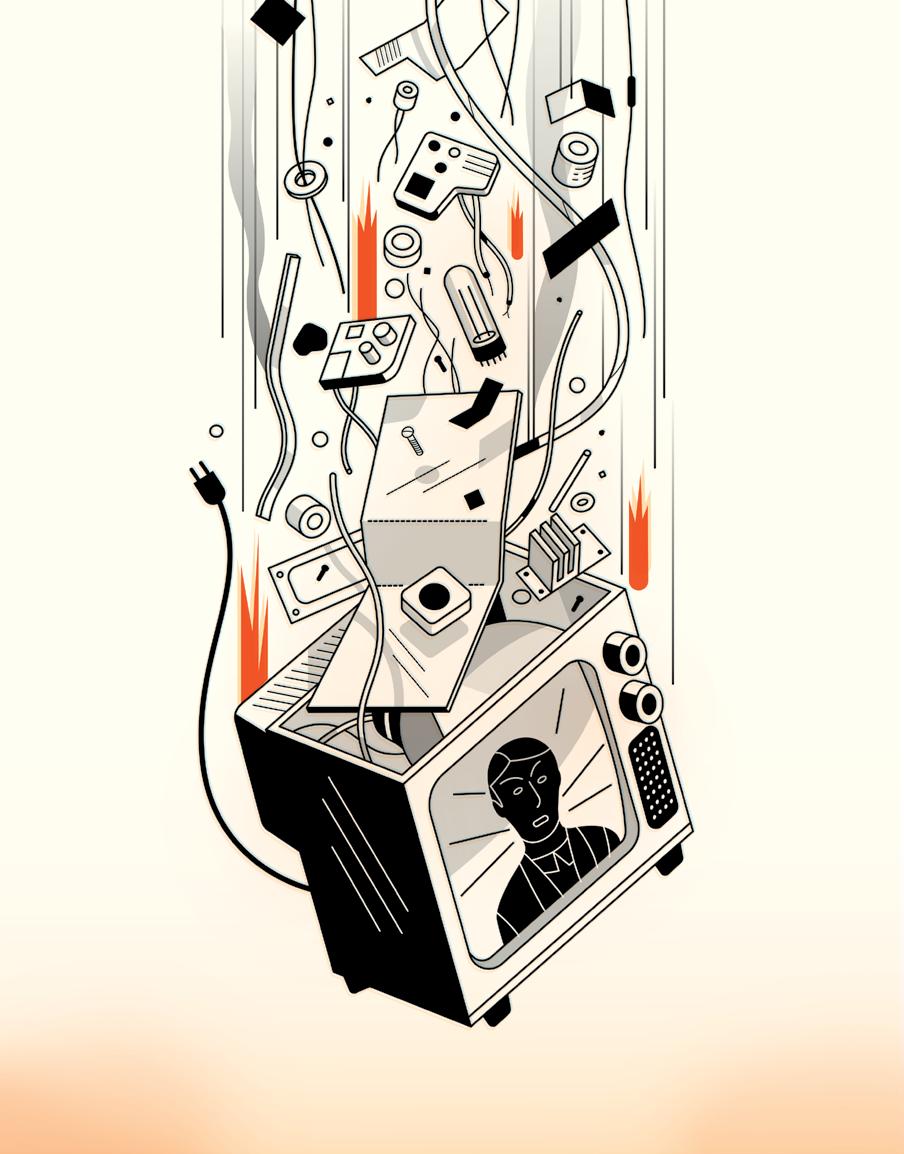 BY CHRIS STIREWALT
BY CHRIS STIREWALT
 ILLUSTRATION BY HARRY CAMPBELL
ILLUSTRATION BY HARRY CAMPBELL
The man Fox News canned on how the news media is getting it wrong and alienating Americans, left, right and center
anging over the heads, literally, of the reporters and editors in The Wash ington Post’s newsroom on K Street are leaderboards that show which sto ries are clicking the best with readers in the digital world.
And what do the most active consumers of the Post want? Even on big news days, Post readers reliably plus-up stories that follow a couple of simple narratives: either wicked right-wingers getting their just deserts or the plights of innocents suffering because of right-wingers’ behavior.

Even on the day of the fall of Kabul in August 2021, the biggest foreign policy sto ry in a decade, two of the top five most read Post stories, according to the site’s public rankings, were of these kinds. One was about a Syracuse, New York, police officer suing his department for alleged racial bias, citing comments his fellow officers made about his love of gangster rap and his Tupac Shakur tattoo. But the big mover was headlined “A conservative cardinal who criticized the vac cine caught Covid. Days later, he was put on a ventilator.”
The story about the hospitalization of 73-year-old Cardinal Raymond Burke, based entirely on a press release and some old arti cles, was so perfect for left-wing social media that it pushed ahead of gripping stories and
images from Afghanistan. The paper’s tweet of the cheap, taunting Burke story got thou sands of likes and retweets as well as a river of repetitive memes and cruel contempt in the comments. Gross. But so what? If bored, an gry people want to go on the internet and post fake Charles Darwin quotes and argle-bargle about religion and science, it doesn’t do the rest of us any harm.
Except for this: The argle-bargle is the business model.
The industry that produces the raw ma terial out of which Americans are supposed to build political consensus is sick. The path to profitability and survival for much of the news business now relies on products that are mostly either superficial fluff or distortions that exploit and deepen our country’s wors ening political alienation. The hatred people feel for their fellow Americans is not just a byproduct of political coverage, but a neces sary component of making much of that cov erage profitable.
And it’s not like you don’t know it. Anger at or concern about the health of the news business was for decades a mostly right-wing issue. The focus was on Republican percep tions of liberal bias in the mainstream press, so Democrats mostly shrugged off the al leged problems. But in the past 20 years — particularly since 2015 and the ascendance
of right-wing populism — the worries about how the news business works have become a bipartisan obsession. As with so much today, though, partisans are talking past each other as they seek to exploit the problem for their own advantage. It is sadly fitting that the acrid, partisanship-soaked public discourse created by our dumb news media prevents needed repairs to the media itself.
As a journalist, I believe that what is wrong with my vocation is harming Americans left, right and center. Major players in the news business are abusing their privileges and shirk ing their duties, and we all pay the price.
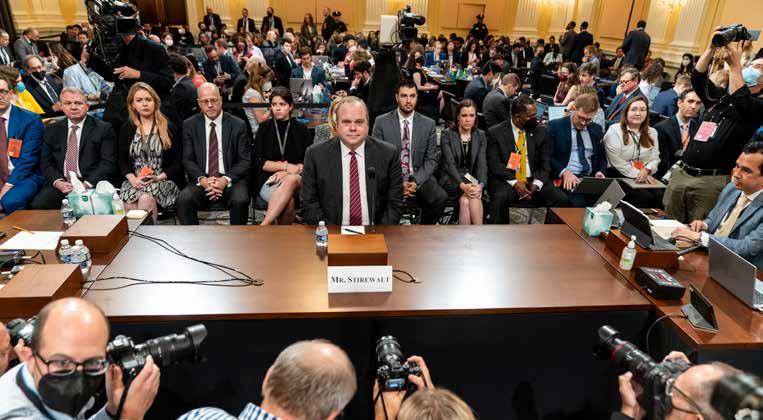
developing highly habituated users.
To make the addiction model profitable, media companies need consumers to have strong feelings. Fear, resentment and anger help news outlets create deep emotional con nections to users not just as users of a product, but as members of the same tribe. As Miro shnichenko put it: “To relocate the gravity of their operation from news to values.”
how media companies make or, quite often, lose money is a driving force behind the many ills that Americans understandably complain about in journalism: shoddy reporting, sensa tionalism, a preference for conflict and now, more than at any time in recent history, bias. As news outlets struggle to find profits after the great digital disruptions of the past two decades, the same social media pressures that did them in offer a pathway back to profits.
Media scholar Andrey Miroshnichenko coined the phrase “post-journalism” to describe the trend. Unable to sell large, diverse audiences to advertisers, news outlets increasingly focus on
In such a competitive marketplace, riling people up against the other side isn’t enough. You’ve also got to create a safe space for con sumers to plop down and contentedly con template ads for beet-based nutrient powders and reverse mortgages. If you challenge their assumptions or suggest that their avatars in the culture war are wrong or losing, they may leave for competitors who offer more com plete protection from harsh realities.
Take it from me. Despite a successful de cade as the politics editor at the Fox News Channel, I got canned after very vocal viewers — including the then-president of the United States — became furious when our Decision Desk was the first to project that Joe Biden would win the former GOP stronghold of Arizona in 2020. The call was the handwrit ing on the wall for Trump’s chances, and it delighted Democrats almost as much as it in furiated MAGA land. Regardless of who won, we were proud to have beaten the competition
yet again and defended the title network pro mos had given us as “the best in-class Decision Desk.” But even in the four years since the previous presidential election, Fox viewers had become even more accustomed to flattery and less willing to hear news that challenges their expectations. Me serving up green beans to viewers who had been spoon-fed ice cream sundaes for years came as a terrible shock to their systems.
After learning the journalism trade as a print reporter, a former mentor who had joined Fox News asked me to come aboard as politics editor. It was a perfect fit. I could continue to write and help coordinate politi cal coverage, but at a much larger scale — in cluding joining the sanctum sanctorum of the network’s Decision Desk. What followed were some of the most enjoyable, rewarding years of my career to date.
If I had a question or wanted an interview, campaigns got right back to me. My on-air analysis made it into coverage at other outlets, and I found myself as a regular panelist on the network’s marquee political show, “Special Report” with Bret Baier. I was on-air with the people who were my idols as a young politics nerd. I treasure the friendship that I made with the great Charles Krauthammer and the time I spent in greenroom banter with George Will. My near-daily hits with Megyn Kelly,
first on her daytime show and then when she moved into prime time, were the most fun I ever had on-air. Working with her, Baier and Chris Wallace on presidential debates and election night coverage was a rollicking good time. After six years at the network, I came into the summer of 2016 in the pink. Our work was good, and I had found a balance between writing, shaping coverage and yapping on-air. My hit podcast with Dana Perino, “I’ll Tell You What,” was the cherry on top. I was, of course, in for another education.
I was not blind to the harms cable news was causing the country in the years that I worked at Fox, nor to many of the problems within my own company. But I was protected, com fortable and well compensated. I worked in a bubble within the network with colleagues I adored and respected and was free to do the work I love. I easily rationalized my participa tion as making the product better, even as the news division kept getting steamrolled by the opinion mongers. As long as I was never asked to lie or say something I didn’t believe, I could make my peace with it. Many people called me brave for standing up for our call in 2020 against the president and his mob. I was not being brave, just abiding by the deal I made with myself to try to stay normal-ish in a high ly abnormal business.
So Arnon & Company built a better mousetrap, and that was even before we found out that the coronavirus pandemic would in crease the share of mail-in ballots by as much as 50 percent. You can’t do an exit poll if no body is exiting the polls, so while our compet itors were scrambling to put together a system to accommodate the change, we had already tested our superior product in the 2018 mid terms. It turned out to be a capability that the network would regret developing.
The rage directed at me was so intense because so many Fox viewers had grown ac customed to the casual exaggerations and re lentless happy talk from opinion shows from morning till midnight. Had viewers been giv en a more accurate understanding of the race over time, Trump’s loss would have been seen as a likely outcome. Instead of understanding his narrow win in 2016 as the shocking upset that it was, viewers were told to assume that polls don’t apply (unless they were good for Trump) and that forecasters like me were go ing to be wrong again. But that overlooked the differences in the race from four years earli er. Trump outperformed expectations again, but he was too far down for even a 2016-sized bump to take him to victory.
the one thing that truly separates news from entertainment is that sometimes in the news business we have to tell people what they don’t want to hear. But that runs smack into the problem that Miroshnichenko talks about in his theory of post-journalism. If you’re try ing to maintain your connection with an audi ence on an emotional level, telling them news that’s bad for their side breaks the spell. The outlet isn’t just an impartial entity delivering some unpleasant information; it has violated the trust of its highly habituated users.
When I went on-air in 2020 to defend the Decision Desk’s call that Biden would win Arizona, I was supremely confident. The team that Arnon Mishkin — whom that year we dubbed “Q-Arnon” — had built was the best in the business. And we had better survey data than the competition, thanks to our partnership with The Associated Press and the National Opinion Research Center. The irony for Fox was that the call that so infuriated Trump and so many viewers was possible only because Rupert Murdoch had four years earlier yanked Fox out of the con sortium of other networks paying for exit polls. He sure wasn’t wrong. The exit polls were bad and getting worse.
Amid the geyser of anger in the wake of the Arizona call, Sen. Kevin Cramer, a North Dakota Republican, called for my firing and accused me of a “cover-up.” Covering up what, exactly? We didn’t have any ballots to count and we didn’t have any electoral votes to award. We were just some guys with a cool computer, lots of polling data and a lot of nic otine gum and coffee. But if you’ve been living comfortably in the climate-controlled emo tions of post-journalism, when the real thing comes along, it’s a shock to the system.
the future of post-journalism America is a country divided between addicted, hyper partisan super-users who derive a false sense of community from their connection to the provider and dropouts who understandably avoid the news but in the process become in creasingly tuned out of civic life.
In other words: On one side, the ill-informed. On the other side, the uninformed.
So what are you going to do about it?
I have three questions for you to consider as you think about how much and what kind of news you should be consuming. Just as it is the duty of journalists to do our work with the health of the republic and our civil society in mind, you have to consider those things as you consume our product. Plus, you’ve got your own well-being and happiness to think of.
“Me serving up green beans to viewers who had been spoonfed ice cream sun daes for years came as a terrible shock to their systems.”

if you are consuming free news, you are not the customer, you are the product. Free outlets want to capture your attention and keep it as long as possible. Therefore, they have intense incentives to do whatever it takes to keep you glued. This was less of a problem in the old days of consolidated broadcast media, when news outlets had to aim for big, broad audiences. The product wasn’t always great, but balance, or at least its appearance, was essential if you wanted
to talk to a third of the country. But as we’ve seen, the partisan concentrations in the audi ences for major outlets are so high that broad appeal would be financial suicide today.
That’s why you’ve got to pay for at least some of your news. I do not like every story yielded by my subscriptions to The Wall Street Journal, The New York Times and The Wash ington Post. But that’s OK. In my mind, I’m only paying for the ones I like.
Read, listen and watch widely. Hear oth er perspectives than your own. Try on other points of view regularly. If you’re conservative, put on NPR in the morning. If you’re liberal,
try or seek out opinion pieces from writers like George Will, Ross Douthat and Peggy Noonan on your editorial page. You will learn a lot, and understand more about where your fellow Amer icans are coming from. Stick to high-quality sources, but be daring. It won’t hurt you to be exposed to other ideas.
Also, it will inoculate you against the kind of bubbled thinking that made the very pre dictable outcome of 2020’s election into a constitutional crisis and a riot at the Capitol. The people who were duped by Trump and his “Stop the Steal” posse wouldn’t have been such easy marks if they had had a varied news diet.
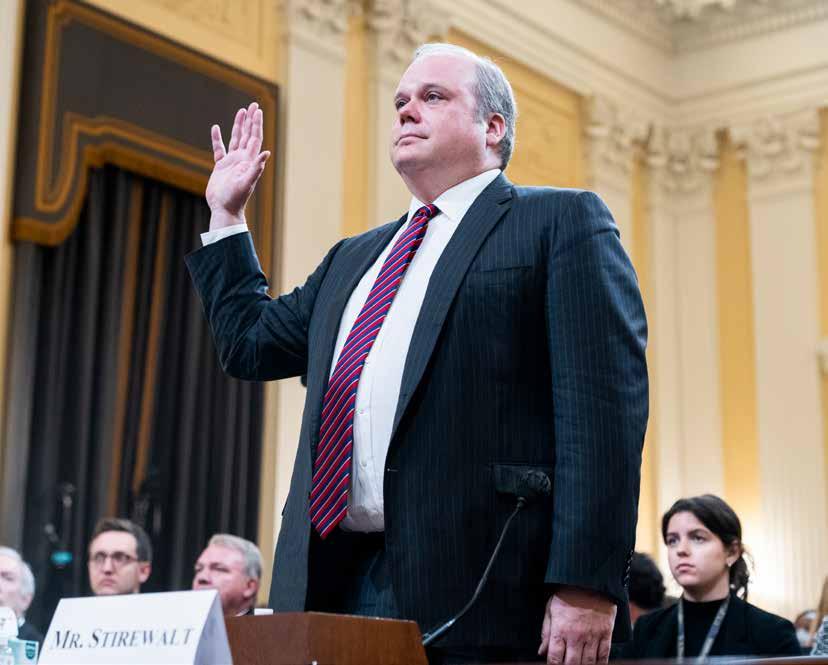
when the vote is unanimous, the project is completed on schedule and the planes all ar rive on time, it’s not big news. When the Sen ate deadlocks, the budget is busted and the airports are socked in by a storm, it’s a story.
But that doesn’t mean that every controversy is newsworthy.
You know when you went to the cafeteria and they said they had turkey, but it was really “tur key loaf,” a gelatinous log of gobbler bits pressed together and cooked in a steam kettle? Today’s news business can serve up the same thing.
A good way to tell the difference between news and newsloaf is to ask this question: Does the story impart new information or does it provide information about people’s feelings? A possible follow-up: Are the people in question famous? If you’re hearing about famous people talking about their feelings, a hot slab of newsloaf is probably what’s for dinner.
If the headline is “Secretary reveals (signifi cant new information) during hearing,” you may be in line for the real thing. If it’s “Senator goes OFF on Cabinet secretary,” it’s newsloaf all the way, my friend.
our culture war is taking place between imaginary armies, and because so many Amer icans live in politically homogeneous neigh borhoods and consume siloed media, it’s very hard for them to see reality.
That’s why you have to learn to consume news skeptically, even from reliable outlets. I’m not talking about cynicism. I’m saying we should remember what David Hume wrote: “Reason is, and ought only to be the slave of the passions, and can never pretend to any other office than to serve and obey them.”
Your wonderful mind is too good at rational izing why the feelings you have are right. When you “trust your gut,” it’s really your brain that’s working overtime to make the case for doing or believing exactly what you want.
That’s why, when a story about your polit ical opponents or your own tribe lines up just perfectly with your assumptions, look out. Are your political opponents wrong because they are bad people, or do you think they are bad people because they are wrong in your eyes?
If you learn to start questioning your own
assumptions when consuming news, you may learn to love your fellow Americans just a little more. You may come to see them as people like you. That could lead to mutual respect and goodwill. Who knows? Maybe even sometimes a politics of solutions, not performative outrage.
i am encouraged by the fact that so many Americans of different points of view under stand the problem of division and addiction as a media profit model. These companies don’t reward bad journalism because of political bias itself, but because it is easy and profitable. Their owners enjoy the clout that comes from the news business, but Jeff Bezos would still be selling you bubble-wrapped Chinese spatulas on Amazon if you didn’t read the Post. Ru pert Murdoch just as happily takes ad money for showing Spanish-language soccer matches as he does from airing Fox News opinionators warning of the immigrant menace. It’s just that all the empty partisan engagement in that tur bocharged geyser of feculence is too valuable for them to pass up.
There’s large and growing dissatisfaction among American news consumers with this profitable, yet shallow, slanted coverage that drives political division and rewards outrageous conduct. But we also have to remember that this is a demand-side problem, too. For hun dreds of years, journalists worked under the assumption that what the public wanted was more information, faster and better. But once we reached the point where communication was instantaneous and the volume of informa tion was unlimited, it turned out a lot of people just wanted superficial junk. It would be like installing a new $10,000 range in your kitchen and your family asking for mac and cheese out of the box every night. As with our track record with lots of other areas of hyperabundance — addiction, obesity, etc. — we humans are strug gling badly with unlimited information access.
Eventually we will probably figure out how to be better producers and consumers of news, as we did with changes like the ones that fol lowed radio and television. But why risk it? We can all be better citizens and neighbors to each other if we pay attention to our own me dia diets. Understanding different points of view means having an honest understanding of the other perspective, not a fun-house mirror version from a clickbait engineer working in a newsroom under a digital leaderboard. And it’s not very interesting or fun, either.
“If you learn to start questioning your own assumptions when consuming news, you may learn to love your fellow Americans just a little more. You may come to see them as people like you.”CHRIS STIREWALT IS A SENIOR FELLOW AT THE AMERICAN ENTERPRISE INSTITUTE AND FORMER POLTIICAL EDITOR AT FOX NEWS CHANNEL. THIS ARTICLE IS AN EXCERPT FROM HIS BOOK “BROKEN NEWS: WHY THE MEDIA RAGE MACHINE DIVIDES AMERICA AND HOW TO FIGHT BACK,” PUBLISHED BY CENTER STREET, HACHETTE BOOK GROUP INC. COPYRIGHT 2022.
 FLORENCE PESTRIKOFF, ONE OF THE LAST 200 NATIVE SPEAKERS OF ALUTIIQ, AS PHOTOGRAPHED ON LOCATION IN AKHIOK, ALASKA.
FLORENCE PESTRIKOFF, ONE OF THE LAST 200 NATIVE SPEAKERS OF ALUTIIQ, AS PHOTOGRAPHED ON LOCATION IN AKHIOK, ALASKA.

ERNEST SIVA PREFERRED TO LISTEN.
WAS YOUNG THEN. HE DIDN’T UNDERSTAND YET. GROWING UP ON THE MORONGO INDIAN RESERVATION IN SOUTHERN CALIFORNIA, HE SPOKE ALMOST EXCLUSIVELY ENGLISH. BUT EVERY EVENING AFTER DINNER, HIS GRANDFATHER, PETE RAMON, WOULD SIT AT THE TABLE AND SPEAK IN SERRANO — THE NATIVE LANGUAGE OF THE SERRANO PEOPLE, WHO HAVE LIVED IN CALIFORNIA FOR SOME 2,500 YEARS. “IT WAS JUST A MATTER OF PRACTICE, A MATTER OF FACT. HE JUST EXPECTED THAT TO HAPPEN. THAT’S HOW WE KEPT THE SERRANO LANGUAGE GOING,” SIVA SAYS. “BUT IT WAS JUST THE TIME THAT THINGS WERE CHANGING.”
By that, he means his native tongue seemed to be losing its utility. His great-grandfather used to warn him to keep the language flame burning, because without it, he and the rest of his generational cohort would lose a vital link to understanding who they are and where they’ve been. “But you have to learn and change,” he added. “Learn the new way to be successful in this world, because everything is changing.”
Globalization, infrastructure and (later) the internet — not to mention centuries of culture-squashing colonialism — had made English ubiquitous. Many of Siva’s elders still spoke Serrano, but the youth were losing in terest. It just didn’t seem like they needed it, and for the early part of his life, count Siva among them. “I always understood,” he says. “I just didn’t try to speak.”
He’d sometimes fall asleep still listening to his grandfather. Oftentimes he didn’t know exactly what was being said, whether it was a parable or a story. “But for sure,” he says, “it was history.” Sometimes his grandfather would sing “bird songs,” which contained the origin stories of their people. Again, he didn’t yet understand. But over time, he learned to heed his great-grandfather’s advice; to adapt and preserve at once. “That’s what we were following more or less to the present,” he says. “Our family has done that.” But he recognizes
that many others — mostly for reasons out side their control — have not. “We’re the last of the Mohicans,” he says with a coarse chuck le, “so to speak.”
Many across western North America are scrambling to preserve Native languages be fore they disappear forever. And not just in a way where they rest on old recordings in museums, but in a way where people actually speak them casually; in a way where they can evolve and grow. “The loss of traditional lan guage,” says Jon Reyhner, a professor of edu cation at Northern Arizona University who has written extensively on native language revitalization, “is a good proxy for cultural loss.” And many Native Americans are tired of suffering such losses.
“Our languages connect us to our ancestors and to our homelands and help us share Indig enous knowledge from generation to genera tion,” says Interior Secretary Deb Haaland, the first Native American Cabinet secretary. “But because of the federal government’s forced assimilation policies that were meant to strip us of our culture, many of our languag es are at risk of being lost or have been lost forever. It is a sad reality for many Indigenous people. Many of us have lost that connection. Many of us have lost our language.”
That fact has been documented by
publications from National Geographic to The New Republic. It also spawned a capstone project by Jordan Layton, a BYU photography student who graduated in 2017. After reading about how one language disappears every 14 days, he teamed up with BYU professor and head of photography Paul Adams to capture some of the last speakers of certain languag es before they go extinct. The project uses 20-by-24-inch tintype metal plates coated with collodion and liquid silver — a process from the 1800s that produces archaic-looking, yet enduring portraits. “Tintypes are one of the most permanent and archival kind of prints,” Layton told Y Magazine in 2020. “That, in juxtaposition with how quickly these languag es and cultures are dying out, just felt really symbolic and important.”
The project, titled “Vanishing Voices,” has been featured in the National Portrait Gallery at the Smithsonian and accompanies this text. So far, Layton and Adams have photographed 18 people across North America. The work re mains ongoing, because the languages continue to fade. Yet some — like Siva — still hold onto hope that the dialect of their people won’t be consigned to old-timey photographs. That reju venation is possible. But, like “Vanishing Voices” poignantly illustrates, time is running out.
Siva’s journey to reclaiming his mother




 NORBERT SYLVESTER, HUL’Q’UMI’NUM, ONE OF 93 REMAINING NATIVE SPEAKERS OF HIS TRIBAL LANGUAGE IN DUNCAN, BRITISH COLUMBIA.
NORBERT SYLVESTER, HUL’Q’UMI’NUM, ONE OF 93 REMAINING NATIVE SPEAKERS OF HIS TRIBAL LANGUAGE IN DUNCAN, BRITISH COLUMBIA.
tongue didn’t have a single starting point, but it was heavily influenced by his passion for music. At an event in the late 1950s, folk leg end Pete Seeger once asked him if he “knew any Indian songs.” Siva told the truth: He did not. “That happened more than once,” he says. “And I realized that if I was going to be a music teacher, I should really be sharing our culture at some point.”
So he did. He learned some bird songs, and he taught them for over a decade at UCLA in his American Indian music class. While there, he was once chosen as a bass soloist in a faculty production of Handel’s “Messiah.” His mother happened to be in town, so she came to watch him perform. After the show, he asked her what she thought. “Oh, it was nice,” she said. “But don’t forget your own songs.”
“So that was kind of another turning point,” he says.
Indeed, to undo centuries of stifling, he re alized he could no longer listen alone.
native american stories and songs are about passing down wisdom. In very oversim plified terms, they teach tribal members les sons about how to live a good life. Centuries of colonialism resulted in policies designed to “civilize the savage” through boarding schools beginning in the mid-19th century, and other forms of forced acculturation. “Teachers were told that there was nothing of value in Indian cultures,” says Reyhner, “and their role was to assimilate American Indian students into American culture. Learn English, often be come Christian, and forget all that savagery.”
The legacy of these programs might feel like a bygone relic of a more cruel time, but they weren’t officially reversed until 1972’s Indian Education Act allowed educational instruction in Native languages. The Native American Languages Act of 1990 addition ally declared that, from then on, “it is U.S. policy to … promote the rights and freedom of Native Americans to use, practice, and de velop Native American languages.” This was just over 30 years ago; the scars are fresher than many realize. “Like many Native people in our country, I do not speak Keres, my In digenous language,” says Haaland, who is an enrolled member of the Laguna Pueblo tribe. “My mother was beaten in school by educa tors when she spoke Keres and because of that trauma, she could not bear to teach me or my siblings.”
Historical atrocities aren’t the only rea sons for Native language declines, though the trail often leads back to them. Reyhner also cites the influence of popular culture. Native Americans consume the same mu sic and movies and TV shows as any other Americans, and naturally, what’s most popu lar is almost always in English. That is, some languages have succumbed to noncoerced assimilation over time. Haaland, for one, did not want that to happen to her kids. Luck ily, with much of the stigma around Native languages now (legally) removed, she says her mother is finally comfortable enough to teach Haaland’s children. “We are lucky,” she says. “Many communities have lost their el ders and cannot pass on the language.”
The Indigenous Language Institute told
The New York Times in 2010 that while some 300 Native languages were once spoken in the United States, only 175 remained. That number has shrunk since then, and the over whelming majority of the ones still around are critically endangered. The Endangered Lan guages Project provides a color-coded map of endangered languages across the world, and in the U.S., the majority are either “severely en dangered” or “dormant.”
One outlier is Diné Bizaad, the Navajo lan guage, which is the only one in the U.S. listed as “at risk” rather than “endangered.” That’s the language Reyhner is most familiar with, having taught Navajo children math when he first graduated from college, and he warns that even those seemingly encouraging num bers are deceiving. When he started teaching around 1970, he estimates that 95 percent of his students were fluent in Diné Bizaad. But today, as paved roads and communications in frastructure have largely broken communities out of isolation, only the elders are still speak ing it regularly. If he visited his old school to day, “I wouldn’t be surprised if it was 5 percent (speaking it)," he says.
That is, at least for now.
siva, now 85, runs a nonprofit named for his aunt: The Dorothy Ramon Learning Center. It started in the early 2000s with his wife and neighbor reading “Nonprofit Kit for Dummies.” Their goal was to further his aunt’s legacy; for over a decade, she’d worked with a linguist to publish a nearly 900-page bilingual book of her stories and memories called “Way ta’ Yawa’ (Always Believe).” The nonprofit
THE LEGACY OF THESE PROGRAMS MIGHT FEEL LIKE A BYGONE RELIC OF A MORE CRUEL TIME, BUT THEY WEREN’T OFFICIALLY REVERSED UNTIL 1972’S INDIAN EDUCATION ACT ALLOWED EDUCATIONAL INSTRUCTION IN NATIVE LANGUAGES.
works to promote workshops, exhibitions and exchanges about Southern California’s Na tive American culture — including language classes. But even in his retirement years, Siva’s commitment has grown beyond the nonprofit.
He meets with linguists from the San Man uel Reservation every Thursday; they work with a program called the Serrano Language Revitalization Project, whose goal is to “pro mote and sustain San Manuel’s unique lin guistic heritage.” He also, until the pandemic interfered, regularly visited the K-8 school on the Morongo reservation to share stories about Coyote and Hummingbird and other characters of Native folklore. He might teach brief lessons in Serrano or Cahuilla, which he knows from his father’s side of the family. And, of course, he’d sing.
Siva heeded his mother’s advice about learning the songs of his people — at least as much as he could. Songs in their culture had different purposes tied to everyday life. Hunting songs for nights before a hunt, for example, or basket-making songs. Funeral songs. Siva recalls attending one such funeral as a boy, where elders chanted in the back ground of a fire. When those elders died, they took thousands of years worth of wisdom to the grave. Regrettably, many of the oral tra ditions of the Maara’yam, as the Serrano called themselves before the Spanish arrived, have been lost to history. “It was like written books. They were the books of our people,” Siva says. “They were that important. So once the books are burned, you’re going to lose your songs, your knowledge. Because ours was in memories.”
He estimates that “just a handful” of Serra no speakers remain, though he’s hopeful that perhaps it’s being passed down, at least to a few people, outside of institutional knowl edge. He doesn’t even consider himself a flu ent speaker because it isn’t his first language. “I think every day about the language and, of
course, use it, but there’s really no one to talk to, and that’s what it takes,” he says. “We give it a good college try every once in a while. But we should do more. Because it could be done.”
Siva is sure of this: That with enough interest and effort, Native languages still have a chance to grow in the 21st century. Many have already taken steps down that road. First lady Jill Biden recently visited a Cherokee language immer sion school in Oklahoma — one of several across the country. The Navajo Nation Muse um in Arizona has dubbed three films — “Star Wars,” “Finding Nemo” and, most recently, the Clint Eastwood classic “A Fistful of Dollars” — in Diné Bizaad. “That’s one way to show the youth that our language is versatile and our lan guage can be adapted in any setting,” Jennifer Wheeler, a professor who helped translate the most recent film, told the Navajo Times. “We hope that it gives them hope and shows them that it is possible to learn our language.” And the United Nations General Assembly declared this year the beginning of the International De cade of Indigenous Languages, scheduled to conclude in 2032.
The challenges such initiatives face are fierce. Generations of Native Americans have been indoctrinated to believe that their tradi tional languages are unnecessary at best. But that attitude has evolved, even in the U.S. fed eral government. Haaland praised the Biden administration’s commitment to reversing the historical trend, including a multiagency ini tiative announced last November between the departments of the Interior, Education, and Health and Human Services. “These invest ments are a testament to our administration’s commitment to support Indigenous commu nities and the respect we have for Indigenous knowledge,” Haaland said.
Funding and government interest are un doubtedly important, Reyhner adds, but “po litical support comes and goes for this.” And with or without it, there’s only one statistic that
matters moving forward. “Adding new, young speakers to Indigenous language communities is the ultimate — and only — critical measure of success of the International Decade of In digenous Languages,” Richard Grounds, exec utive director of the Yuchi Language Project, wrote in the December 2021 issue of Cultural Survival Quarterly.
That entire issue was dedicated to “se curing the future of our languages,” with Adriana Hernández Chos laying out three hopeful strategies: full immersion pro grams, the master-apprentice model and the deployment of “multilingual media and digital strategies” to meet prospective speakers where they are, on TVs and smartphones. “There’s no panacea,” Reyhner adds. “There’s no one thing you can do.” But, as Chos, Siva and others have illustrated, there are some things that can be done, both big and small, to preserve Native languages — and everything that comes with them. “Languages go to the heart of a tribe’s unique cultural identities, traditions, spiritual beliefs and self-governance,” Haaland says. “In vesting in these preservation programs can help sustain Indigenous knowledge that can only be transmitted through tribal languages.”
Siva hopes above all that future generations won’t make the same mistake he did, waiting until later in life to take the languages of his heritage more seriously. Doing so can result in a difficult burden, though one worth bearing — and one that no one else can bear. “We re alized that if we didn’t carry it on,” he says, “it was on our shoulders.”
“MY MOTHER WAS BEATEN IN SCHOOL BY EDUCATORS WHEN SHE SPOKE KERES AND BECAUSE OF THAT TRAUMA, SHE COULD NOT BEAR TO TEACH ME OR MY SIBLINGS .”RIGHT: PHOTOGRAPHED SHORTLY BEFORE HER DEATH IN 2021 IN WOODLAKE, CALIFORNIA, MARIE WILCOX WAS THE LAST NATIVE WUKCHUUMNI SPEAKER

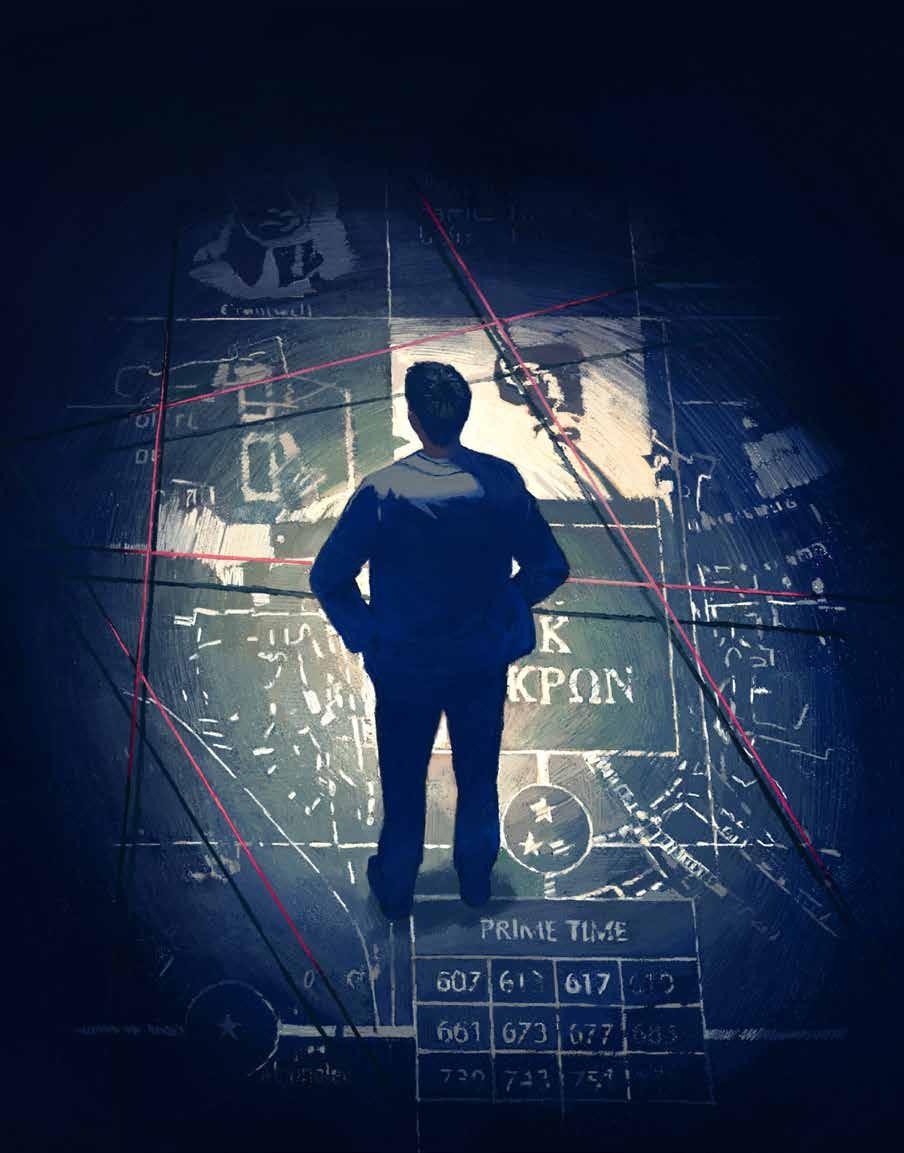
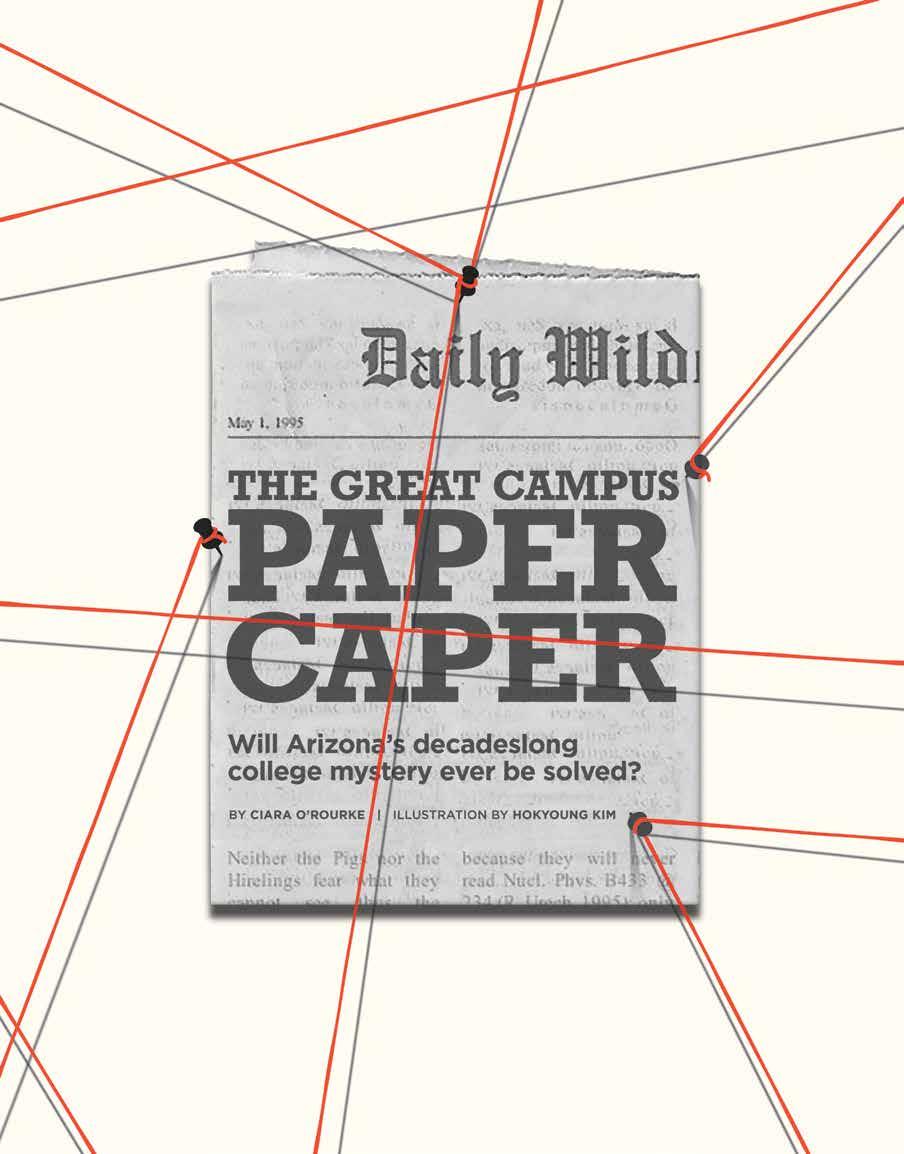
THE FRONT PAGE OF THE DAILY WILDCAT ON MAY 1, 1995, COVERED THE KINDS OF STORIES YOU
MIGHT FIND AT ANY COLLEGE NEWSPAPER. THERE ON THE UNIVERSITY OF ARIZONA CAMPUS, SOPHOMORES AND SENIORS HAD RECENTLY PROTESTED OVER ANIMAL RIGHTS. THE STUDENT UNION BUILDING NEEDED TO BE REPAIRED. ALCOHOL ABUSE VIOLATIONS AMONG STUDENTS WERE UP.
BRYAN HANCE, a freshman from a small sub urb in central Ohio, scanned those stories and continued to thumb through the paper until he paused, finally, on page 16. He’d never seen anything quite like it. A full-page advertise ment jumbled with maps, math, portraits, words and phrases he couldn’t make sense of. The ad referred to a group called “The Or phanage.” “MAY DAY” appeared in big bold letters at the top, and toward the bottom, a small illustration of a smirking man with two dots for eyes and ears drawn like potatoes. Hance was bewildered. Maybe this was the work of a fraternity? Or cobbled together during a fever dream?
A year later, again on May 1, he discov ered a similar full-page ad. Among the maps and math equations was a quote from “Moby Dick,” in which Starbuck, first mate of the Pequod in the novel, says, “I will have no man in my boat who is not afraid of a whale.” The same crude drawing of a man smiled up at Hance as he scrutinized the page.

Yet another year passed and Hance was now a junior and had by then joined the Wildcat’s staff as one of the paper’s first webmasters. So when the ad showed up again, on May 1, 1997, he had the resources to start digging.
For two weeks, whenever he wasn’t in class, he was in the newsroom, lugging heavy bound volumes of old issues from the paper’s archives to pore over the newsprint in search of earli er May Day ads. He found one for 1994, the year he graduated high school, and 1981, when he was still in elementary. He did some quick math. For almost his whole life, it appeared that someone had paid thousands and thou sands of dollars to place these ads in the Wild cat. But who? And why?
Those questions would consume Hance for years. And not just him. As the internet became more prominent, more joined in the search for answers. Today, in podcasts, You Tube videos and Reddit threads, Instagram, TikTok and Facebook posts, people around the world are trying to solve what’s become known as the “May Day Mystery.” Some sleuths have been at it for a quarter of a cen tury. Many have become obsessed. One man was arrested.
In 2014, it appeared on a list of “conspiracy theories that need to be horror movies.” Lat er, Buzzfeed named it No. 1 among “11 super creepy modern conspiracies” sure to “make you believe.” Phoenix magazine once crowned the mystery “Arizona’s da Vinci code.”
Yet unlike popular enigmas that have emerged in recent years and morphed into harmful conspiracies — QAnon comes to mind — this one hails from a far simpler, ana log time. What then, can it tell us about more pernicious cryptic phenomena in 2022? More importantly, as the May Day Mystery enters its second quarter century, will anyone ever solve it?
if they did cross paths. Like Hance, Vesely was a regular Daily Wildcat reader and she had no ticed the ads that appeared in the paper every May Day. While her friends dismissed them as unhinged ravings, she was sure there was more there. “It was very clearly like a coded mes sage,” she says.
She had always loved history, and she anx iously awaited the ads, wondering what past they might tread. After she graduated she’d always return to campus to pull the May 1 edi tion from a metal newspaper distribution box. She enrolled at the university again in 2002 to pursue a graduate degree, and she spent her spare time exploring a website she had learned of since college: maydaymystery.org.
Up popped a website that Hance had cre ated. It included scans of every May Day Mystery ad — what Hance described as “The Texts” — since May 1, 1981, along with clues that the mystery had roots reaching back even further.
Vesely spent hours on the site, scrolling through the ads and seeing the similarities over the years, the same imagery and repeated words and, more often than not, that drawing of a smiling man, sometimes with four stickstraight lines for hair, sometimes five. When she wasn’t working on grad school assign ments, she was studying the texts, searching the internet for leads or slouched in front of a microfiche machine at the library.
In 2009, nearly 15 years after Hance saw his first May Day ad in the Wildcat, Vesely emailed him to see what he thought about starting a Facebook group. There, she figured, people could puzzle over the clues together. With Hance’s blessing, she created Mayday Mystery Fans and started sharing theories and asking questions to a growing community of people just as gripped by the ads as she was. Several years later, she began visiting Reddit, where there are ongoing conversations about unsolved mysteries. She hoped to draw on fresh perspectives. But while she gained new insights into different elements of the ads, she felt no closer to solving what she’d now spent more than a decade thinking about.
hungry to explore and exchange ideas about science, math and philosophy. But who were these bright shiny minds she pictured meeting at Cochise dorm, a residence hall with impres sive Roman columns that once only housed men? Maybe they gathered around the big stone fireplace that anchors the building’s lob by, or whispered furtively in the shared bath rooms on the third floor. This origin story is purely speculative, Vesely knows, but not farfetched. Because she knew of one person who fit into her hypothesis almost perfectly.
He had been a University of Arizona stu dent in the late 1960s, studying philosophy, and later earned his law degree there. The ads have contained more than a dozen different languages; he reportedly spoke eight, includ ing Latin, Hebrew, Russian and Greek.
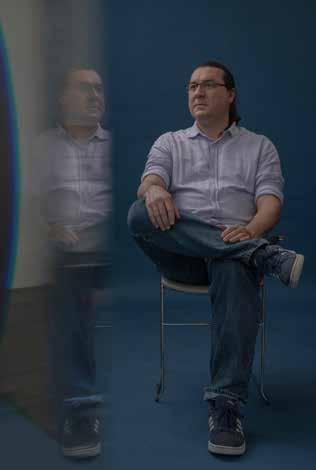
Vesely had discovered that this man, Rob ert Hungerford, by then well into his 60s, kept an office in downtown Tucson, not far from where Vesely worked for the Pima County criminal justice system. One hot, summer day in 2013, she summoned the courage to drive there before a meeting. She found his office address online, parked out front, and ner vously walked down the stairs to the building’s basement where she found Suite 16 and a busi ness card on the door that indicated he was retired. When she knocked, no one answered. Before retreating back outside, she left a note.
“I’m a longtime follower of MDM,” she wrote, referring to the May Day Mystery. “I was in the neighborhood and wanted to say hello. If you ever keep office hours and wouldn’t mind a visit, please let me know.” She included her email and left. The next day, a message was waiting in her inbox.
KATE VESELY GREW up in Tucson, riding her bike along sun-bleached streets and learning not to touch the barbed spines of drooping cholla cacti. She stayed close to home for col lege, enrolling at the University of Arizona a few years after Hance. They never met, but they would have had something to talk about
Still, over the years she had started to de velop a hypothesis. In the 1970s, she thinks, a “collective of brilliant geniuses” attending the University of Arizona formed some sort of intellectual fraternity, using the newspaper to communicate with each other about subjects that were important to them. The ads maybe started as a game and turned into a tradition.
She could imagine young, cerebral students
BACK DURING HIS senior year, Bryan Hance, frustrated by his lack of progress in unlock ing the puzzle, appealed to the relatively new internet. “I have unraveled the Mayday pag es as far as I can, and I am far from my goal,” he posted on the site he’d built. “I need your help.” It was an online message in a bottle, but it landed on an unexpected shore.
That May, after Hance hurried to campus to get a copy of the Wildcat to see that year’s ad, he opened his email and found a message signed, “The Orphanage,” the same name that had appeared in the ad that caught his atten tion as a freshman.
“The day you can see the door,” the email said, “you will be welcomed inside.”
The laconic missive only served to pull Hance further in. He didn’t leave Tucson after graduating. Instead he worked for the univer sity and started a side business, writing soft ware products. He kept researching the clues in the ads when they were published each May and posting them on his website, along with correspondence he received from “The Or phanage,” rare coins and news clippings, post cards and letters with stamps from Nairobi, Las Vegas and beyond.
Sometimes Hance would get phone calls from people who were apparently from “The Orphanage” advising him of a forthcoming ad. Other times, he heard from people like himself who were trying to solve the mystery. In the early 2000s he had been emailing with some one who insisted on meeting in person so that she could show him her research. Hance biked to one of his favorite cafes in downtown Tuc son to hear what the woman had to say.
He was reading at one of the restaurant’s tables when she walked in. Only it wasn’t a woman — it was a girl young enough to be accompanied by her father, who had driven his daughter nearly two hours from Phoenix to present her findings. As her dad sat to the side like a chaperone at a school dance, the girl pulled out a thick blue three-ring binder.
Hance listened as the girl, whose name he can no longer remember, made her case: the person behind the May Day Mystery was the Zodiac Killer, the pseudonym of a serial mur derer who terrorized Northern California in the late 1960s.
One page of her research, titled “Stamp Fixation,” compared images of envelopes the Zodiac Killer sent to newspaper editors to the envelopes Hance had received from, appar ently, “The Orphanage.” Hance saw the killer’s infamous ciphers next to some of the charac ters that had appeared in the May 1 ads.
“Look,” Hance said. “I’m going to be abso lutely honest with you. I don’t think this is it.”
“Well,” she said, before leaving. “I just want to let you know I’ve sent all this to the FBI.” ✥ ✥ ✥
IN APRIL 2022, I traveled from my home in Austin to Tucson, where one Sunday after noon in April, I met Kate Vesely at El Charro Cafe, the oldest Mexican restaurant in Tuc son. I plied Vesely for her thoughts about the ads and the mysterious Robert Hungerford, the attorney she left a note for back in 2013.
Hungerford had long been rumored to be the go-between who, every year, for decades, phoned the Daily Wildcat to place an ad in the May 1 edition. He has hinted as much — all while maintaining that he himself is not “The Orphanage,” just the lawyer hired to facilitate his secretive clients’ ad purchases.
I was hoping Vesely might help me meet Hungerford. They had started up a correspon dence in 2013 and continue to message each other occasionally, but she’s never seen him in person. So after lunch, Vesely and I drove past the county courthouse where she works and parked outside of Hungerford’s office like she did nearly 10 years earlier. Now the front door that she opened back in ’13 was locked, but peering through the glass, she pointed out the stairs that she had descended with trepi dation, hoping to find the lawyer and maybe some answers to the mystery. Walking around the side of the building, I tugged on another door and was surprised when it opened. We ducked into the dimly lit hallway with exposed concrete floors and garbage bins at one end, looking for a way to the offices. But it was an other dead end.
HUNGERFORD’S IDENTITY AS “The Orphan age’s” occasional lawyer and errand-runner is not a secret. Brett Fera worked at the Wildcat as a student and later became director of Ar izona Student Media at the university and he recalls talking to the courteous, professional man who called each year to inquire about ad vertising in the May 1 issue. He seemed to use no more words than were necessary, but wasn’t impolite — maybe just from a different era.
Hance was on staff at the Wildcat when he learned who Hungerford was. And for a while, he says, he was determined to know more. He started to try to dig into his past. He even met
TODAY, IN PODCASTS, YOUTUBE VIDEOS AND REDDIT THREADS, INSTAGRAM, TIKTOK AND FACEBOOK POSTS, PEOPLE AROUND THE WORLD ARE TRYING TO SOLVE THE MAY DAY MYSTERY. SOME SLEUTHS HAVE BEEN AT IT FOR ABOUT A QUARTER OF A CENTURY.


him in person when, he says, Hungerford hired Hance to fix his computer. Hance would try to get Hungerford to talk about the mystery but he didn’t reveal much, Hance says. As he was with Fera, Hungerford was crisp and business like, and not about to talk to Hance about the May Day Mystery in any substantive way.
Online, however, Hungerford is playful — in his correspondence with Vesely since that first email, and in the Facebook group, where his avatar, the default white silhou ette of a man, encourages the mystery’s fans without ever really showing his hand. When I sent him a message in February seeking an interview, he declined, saying everything I needed to know was already on Hance’s website.
“I am of no interest to anyone, including myself,” he quipped.
The faintest sketch of Hungerford’s for mative years can be found in old yearbooks and newspaper clippings. Before enrolling at the University of Arizona, he was a student at Phoenix College, where he belonged to the “13” Club, described as “an honorary men’s organization composed of 13 of the most out standing men on campus.” In his senior year book photo from the U. of A., dressed neatly in a jacket and tie, he doesn’t look unlike the drawing of the smiling man in the May 1 ads, with hair shorn close to his scalp, brows near horizontal across his eyes, and a sly smile.
He’s given a few interviews, though they’re not exactly illuminating. But after another volley of messages with me, he relented, some what, and said I could ask two questions about the mystery that his clients had authorized him to answer. I asked what the motivation was for the people behind the May Day Mystery to start it and keep it going, and what will happen if and when someone solves the mystery.
The motivation, Hungerford said in a Facebook message, is “total social/theologi cal transformation, incipit: 8/30/69.” As for what will happen: “a dramatic transformation, beyond any sea change.” Hungerford said I “would need to experience it (myself) in or der to report the Gestalt.” I looked up the last word. Gestalt, according to the dictionary, “is something that is made of many parts and yet is somehow more than or different from the combination of its parts.”
ON APRIL 29 of this year, Hance, who’s now 46 and lives in Portland, Oregon, woke up to feed his three cats, brewed a pot of coffee and descended to the basement office he calls his “nerd station.” He moused through the three computer monitors on his desk for the next 30 minutes, checking his work email — he’s
employed by a yacht company — and then turned his attention to his personal email. There it was, another spring, another familiar subject line: “May 1, 2022.”
Since the Wildcat stopped printing regu larly in recent years, Hance had been receiving the May Day announcements directly. A PDF was attached but he didn’t have time to open it yet. It wasn’t until the afternoon that he posted on his website and shared a link in the Facebook group.
“May Day 2022,” he said. “It’s a big one.”
There were familiar symbols and charac ters. Images of stamps featuring Martin Lu ther. The pyramid on the dollar bill and the date 5/1/72. Different drawings of the smiling man. The guitar tabs for “Hotel California,” by The Eagles, and an approximate passage from Shakespeare’s “Macbeth.” Within two weeks, nearly 200 comments had been left on the post hypothesizing what it might all mean.
Hance has now spent the majority of his life with the May Day Mystery. “It’s the lon gest thing I’ve done,” he says. When we first spoke, I wondered how this cryptic phenom enon is different than newer, more pernicious conspiratorial strains like QAnon? Unlike disinformation that misleads and manipulates its audience to believe something false, Hance told me, the May Day Mystery is more like a mirror: When people look at the ads, they see what they want to — whether it’s the history of Protestantism via images of Martin Luther, or mathematics via all those tantalizing equa tions that appealed to a young computer sci ence major.
And so over the years he’s moved boxes of old, yellowed Wildcats and other documents — like the binder of evidence to support the Zodiac Killer theory — from home to home. When he looks back at the old issues he rec ognizes the bylines on the sports articles; he remembers the late nights in the newsroom. They smell like the past.
The day after meeting with Kate Vesely, I visited the Daily Wildcat newsroom. This isn’t the same dingy spot where Hance worked as the paper’s webmaster. That building has since been renovated and the Wildcat, and its archives, have moved up the street. I pulled heavy collections of old issues off a shelf to see the May Day ads for myself.
After looking at the ones I already knew existed, I messaged Hungerford on Facebook to ask if there were any predating 1981. The mystery originated in 1969, when he was a
college senior at the University of Arizona.
“Very definitely,” he said. Encouraged by his quick and succinct response, I wrote again to see if they were always on May 1.
“Some were, many were not,” he replied. When I told him I was looking through old issues, he said he wanted to save me from “hours and hours of fruitless digging in old dusty papers.”
“The initial announcements, due to the tumultuous times, were not nearly as evident as 1981 forward,” he said. “In short, you would have to be INSIDE to recognize them. There is plenty from 1981 forward and much more forthcoming.”
He encouraged me to “remember what was happening in the mid to late ’60s, especially in 1969.”
When I had asked Vesely why she thought there was such apparent radio silence between that year and 1981, she speculated that the men involved got married and had children. They were busy raising babies and taking care of their families. Hungerford suggests the rea son was much less mundane: the ads couldn’t be more explicit because members of “The Orphanage” would have risked arrest. This dovetails with some theories that the ads are political and linked to unrest from that era. One TikTok user popular among May Day fans has posited that “The Orphanage” is so named because it’s made up of ex-members of activist groups such as the Weathermen, which formed in 1969 in opposition to the Vietnam War.
I didn’t think I could solve the mystery, but I thought I might have a shot at finding an an nouncement from the 1970s. I ignored Hun gerford and started to slowly page through May 1 editions from that decade. By the time I started to wonder if there was a hidden mean ing behind a record store’s “May Day Sale” ad,
I put the archived issues back on the shelf.
Federal agents never contacted Hance about the young girl’s theory that the Zodiac Killer was behind the May Day Mystery, but for years he has considered calls and emails from people who believed they had solved the clues, or at least had a theory about them. It’s performance art. It’s an alternate reality game. Robert Hungerford is “The Orphanage,” and has been placing these ads in the newspaper alone. Hungerford is acting on behalf of a group of people, as he claims. This is the work of a secret society, or someone with mental illness. Sometimes, Hance is the one being incriminated. He wasn’t just a college student who stumbled upon a decadeslong puzzle — he’s complicit in the mystery, and playing dumb.
Another theory claims that Hance was con nected to Hungerford by way of a company Hance formed to sell a software product he had created. Hance vigorously denies this. Others see Hance’s perceived indifference to pursuing Hungerford’s real role in all of this as a clue. It’s true that Hance is far from the most rabid May Day Mystery obsessive; one was once arrested for rummaging through Hun gerford’s garbage. But Hance says he’s never wanted to solve the mystery by pulling back the curtain to see who was behind it. That felt like cheating. He wanted to figure it all out on his own.
Now, though, he doesn’t think he’ll ever solve it. Neither does Vesely. But she’s comfortable never knowing what, really, the May 1 announcements are all about. She’s just happy knowing the enigma exists.
“There’s this gigantic universe full of mysteries of things that we’ll probably never know, in my lifetime,” she said. “But I have my own little mystery right here at home.”
IN 1998, HANCE APPEALED TO THE RELATIVELY NEW INTERNET. “I HAVE UNRAVELED THE MAYDAY PAGES AS FAR AS I CAN … I NEED YOUR HELP.” IT WAS AN ONLINE MESSAGE IN A BOTTLE, BUT IT LANDED ON AN UNEXPECTED SHORE.
Richard Reeves is the father of three sons, but he says that was only part of the motivation behind his decision to write his new book, “Of Boys and Men: Why the Mod ern Male Is Struggling, Why It Matters, and What to Do About It.”
The bigger motivation was what he saw in his day-to-day work as a senior fellow at Brookings Institution, where he studies in equality and social mobility. His findings? The boys are not OK. Boys are falling behind girls at all levels of education — in K-12 schools, at college and in graduate programs. The num ber of young men who participate in the job market is dropping. Men are more than three times more likely than women to commit suicide. The numbers are especially stark for boys from low-income families and for those who are Black. Reeves believes Black men are the victims of sexism, that their masculinity is used against them.
He is sensitive to the argument that sex ism still exists. But valid concerns over gen der equality may have led us to this moment, where we’ve lost sight of what’s going on with the other half of the population.
REEVES SPOKE WITH Deseret Magazine re cently and shared what he sees as the prob lems facing boys and men, as well as some concrete solutions.
WHAT WAS IT THAT YOU SAW IN YOUR OWN CHILDREN’S OR THEIR FRIENDS’ LIVES THAT MADE YOU WANT TO WRITE THIS BOOK?
I was trying to find a way to broach the sub ject in a way that was compatible with a con tinued commitment to gender equality, but which took seriously the problems of boys and
YOU RECENTLY WROTE IN THE ATLANTIC (“REDSHIRT THE BOYS,” OCTOBER 2022) THAT BOYS SHOULD START SCHOOL LATER THAN GIRLS. ARE YOU SUGGESTING THAT WE SHOULD HAVE MIXED GRADES, WITH FIVE-YEAROLD GIRLS AND SIX-YEAR-OLD BOYS IN KINDERGARTEN AND ON UP?
men. I felt that the world had gotten to that point, but I kept tripping over it. And then I’d come home and talk to my boys about what’s happening with them, so it’s one of those clas sic examples of where your day job and the rest of your life are intersecting. I also felt like there wasn’t a good faith conversation going on about this issue.
What is the right age to start kids is a slight ly separate question. But yes, the basic idea is that you start boys a year later. Let’s say the girls are starting at five, the boys would be six. So, you’d have six-year-old boys enrolled with five-year-old girls, and then they’d stay in the same class all the way through. And that’s the important point, because the main reason I want boys to be on average a year older is not because of the gaps at five — although, those are real — it’s because of the gaps at 15. But, to hold boys back — which happens to quite a lot of boys actually — to hold them back part way through their school career is really not great from a social point of view, from a stigma point of view and from a development point of view. So, it’s better to just build it in from the beginning. The real rewards will come in adolescence, which is where the developmen tal gaps that matter for education are at their widest, around 15 or 16 years old. It’s just unfortunate that the years in which boys are furthest behind girls are also the years that
THE BOYS ARE NOT OK. BOYS ARE FALLING BEHIND GIRLS AT ALL LEVELS OF EDUCATION — IN K-12 SCHOOLS, AT COLLEGE AND IN GRADUATE PROGRAMS.
turn out to be incredibly important in terms of educational success.
NATIONAL TEST SCORES SHOW THAT BOYS ARE WAY BEHIND GIRLS IN ENGLISH AND WRITING. WHAT OUTCOMES DO YOU SEE FROM BOYS BEING SO FAR BEHIND IN THESE SUBJECTS?
The focus by class and race is import ant, because the gender gaps in education are much wider among less advantaged kids. Once you get up to the top of the economic distribution, the gender gaps get much nar rower. But they’re pretty wide at the bottom, and they’re very wide for Black kids especial ly. The English versus math thing is a good illustration of the difficulty we’re having of updating our priors about the world given the rapid changes of recent years. I think the reason why we’ve been so focused on math is because it was where girls were behind boys for so long. They’ve now basically caught up with boys in math. They’ve overtaken them by eighth grade, a little bit of a gap maybe emerg ing again in high school, but basically the math gap has closed. The English gap hasn’t closed at all, and it’s much bigger. You’ve got one gender gap that’s really rapidly narrowed, and now is pretty small, and another gap that hasn’t narrowed at all and is pretty big. I think
the reason why we focus on math rather than English is because we’re focused on girls, and because we have presumed that the fight for gender equality is synonymous with the fight for women and girls. Whereas in fact, in some cases now, it’s the other way around. And the other point to make is English and litera cy, generally, is a much stronger predictor of college enrollment and college success than math. So, which should you care more about, in terms of success in college? You should be more worried about English than math.
That’s right. Certainly, women have over taken men in professional degrees and Ph.D.s, MBAs, undergraduate business studies. Most scientists in the U.S. now are women. That’s a relatively recent phenomenon. There’s just been this transformation essentially of wom en’s educational performance and opportunity. And I think that’s revealed that the boys are at a structural disadvantage in education because of the maturity gap. You couldn’t see that when girls were discouraged from going into higher education or having careers. It remained invis ible to us. It was only once we took the brakes
off from girls and women that their natural advantage became apparent in the education system. So, the playing field is level now, but the girls are better players. We’re seeing the inevi table consequences of that. And they’re better players because their brains develop a little bit earlier, particularly around noncognitive abili ties. There’s a bit of a nuance here, but you can predict college enrollment and college-going very strongly from what’s happening in high school. But as far as college completion goes, it’s a little bit more mysterious. Even conditioned on enrollment in college, men are much more likely to drop out. The gap is 10 percentage points between women and men in four-year graduation rates among those going to a fouryear college. That doesn’t seem to be explained by their preexisting test scores or their GPAs or anything like that. There seems to be some thing else going on there, which may be more about motivation.
ONE OF THE THINGS I’VE HEARD PEOPLE SAY IS THAT SCHOOL IS NOT BUILT FOR BOYS — THAT IT’S HARDER FOR THEM TO SIT STILL IN CLASS, THEY GET BORED MORE EASILY, THAT THEY NEED MORE PHYSICAL MOVEMENT. IS THAT A STEREOTYPE, OR IS THAT TRUE?
It’s true. It’s just a bit harder, everything else being equal, for boys to sit still and focus
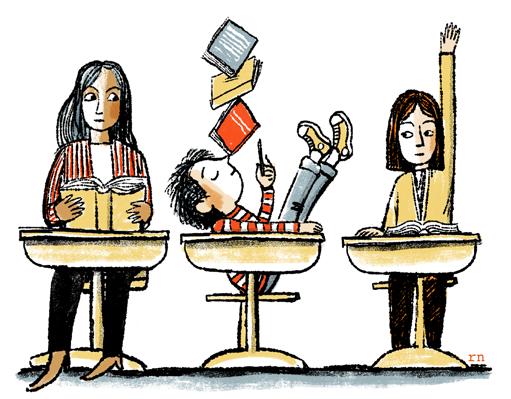
on a task for as long as girls. I think to some extent it’s hard to know exactly how much of a problem that is, but I don’t know how to re design the curriculum of every school in order to get there. I think a better way to get at this is to just have more male teachers, because I do think that male teachers are more likely to instinctively get this. There is some evi dence that male teachers are particularly good for boys in subjects like English, where boys tend to struggle. But the teaching profession is becoming more female over time. Only 24 percent of K-12 teachers are male, only one in 10 elementary school teachers and essential ly no early years teachers. What that means is there are a lot of schools, especially at the elementary and middle level, where there are basically no men around. I think that does af fect the ethos of the school. It’s hard to know exactly how and why — you can’t really design a good study — but I think it’s hard to avoid the commonsense conclusion that this isn’t going to affect the structure of classes. But what we do know is that female teachers are a little bit more likely, everything else equal, to see boys as acting out or behaving badly than male teachers are. You can see why that would happen, it’s no one’s fault, but it’s an argument for diversity in the teaching profession of all kinds.
AS FEWER MEN GO TO COLLEGE, SOME SAY THIS IS AFFECTING MARRIAGE RATES AND MARRIAGEABILITY. IS THAT WHAT YOU’RE SEEING AS WELL?
No, not yet. It’s interesting, we saw this big gap in college and a lot of people started pre maturely panicking about marriage because they thought college-educated women would want to marry college-educated men, and there won’t be as many around. Well, it is true that for every college-educated woman there will be fewer college-educated men, especially if we don’t address the issue. Whether they’ll be less likely to marry as a result depends on how quickly our norms change. If we quickly become more comfortable with the idea that women can marry men who are less educat ed than them, then it won’t necessarily be a problem. Especially if there is still rough eco nomic parity. It’s harder for us to catch up with the fact that many women are actually the main breadwinner in many households. In my own family we have a couple — he’s a plumber, he isn’t college educated, he’s got a vocational education, while she’s a
and has a master’s degree. He earns way more than her. I don’t think she’s thinking, oh, I shouldn’t have married a plumber. So, maybe it’ll start to happen, but I think the coun tervailing force is much bigger than that, which is college-educated Americans want to get married so they can raise their kids togeth er. Marriage has held up incredibly well among college-educated Americans. I don’t think that’s going to change. I think the typical col lege-educated woman, when it comes time for her to have children, is going to want to raise her children with somebody else if she can, and therefore is going to want to marry. And if that means, “marrying down” educationally, I sus pect that they’ll do it. If the choice is that or be a single parent, I think they’d still rather share it with somebody else.
A little bit. I think it’s important, but it depends on what you’re looking at. There are higher rates of depression among girls, for example. I think there are real reasons to be concerned about the mental health of girls and young women. There are differences in the expression of mental health problems between boys and girls. I don’t think I would confidently say that there is much of a gender gap overall in mental health problems in their expression, but I would say the consequences of mental health problems are more likely to be deadly for men. At every age, but especially among young men, we see a suicide rate that is at least three times higher than among women of the same age. You’re seeing more report ed loneliness for young men than for young women. I think that these are playing out dif ferently for men and women. In terms of the ultimate thing to worry about, which is the loss of life in the form of someone taking their own life, then there are real reasons to worry about the mental health of boys and men, at least as much as about girls and women.
It is hard to know exactly what is going on here, but there is every reason to pay at least as much attention to the mental health of boys
THERE SEEMS TO BE MORE FOCUS ON GIRLS AND THEIR MENTAL HEALTH. IT SEEMS LIKE BOYS ARE LESS LIKELY TO SHARE WHEN THEY’RE STRUGGLING, AND LESS LIKELY TO TALK ABOUT IT.
teacher
“AT EVERY AGE, BUT ESPECIALLY AMONG YOUNG MEN, WE SEE A SUICIDE RATE THAT IS AT LEAST THREE TIMES HIGHER THAN AMONG WOMEN OF THE SAME AGE.”
as of girls. It is just not true that the boys are fine, let’s worry about the girls. The boys are not fine. And there is a lot of evidence for that. The fact that 23 percent of boys have been diagnosed with some kind of developmental disability, that’s almost one in four, that’s not a trivial fact. That includes a lot of autism, and ADD, and ADHD.
And that brings us to an important point, which is who’s providing the care? And what we’re seeing is a growing gender gap in the pro vision of care, which I am worried about. Be cause I think there are many occasions when a girl or a boy would prefer to be talking to someone of the same sex, but those professions are strongly female dominated. Psychology for example, only 29 percent of psychologists are men, that’s dropped from 39 percent just in the last 10 years. And among psychologists under the age of 30, only 5 percent are male. So, among under 30-year-old psychologists, 95 percent are female.
If you look at school counselors, it’s be tween six and seven times more likely that the counselor is female. Same with substance abuse counselors, special needs teachers — they’re all very, very strongly female dominat ed, even though, in many of those cases most of their clients are male. I think it’s a problem that the caring professions, that the mental health professions, become more female by the year, even though at least half of the peo ple who need those services are male.
People say the problem with boys is that they won’t get any help, which is a form of vic tim blaming. But there’s a danger of a vicious circle here, because if all of the people they can get help from are women, and some of them would prefer to go and get help from a man, depending on the nature of their problem, it’s a vicious circle. And as far as I can tell, this is getting zero attention.
same way that lots of people might be. But, sec ondly, you’re missing what’s happening beneath that level.
As we’ve narrowed gender inequalities, we’ve widened class inequalities, very signifi cantly. And the gaps between Black Americans and everybody else have remained very wide and stubborn. So, everything I’ve said about the gaps between boys and girls in education, and men and women in education, you can just dial up the volume on them for lower income, working class boys and men, and especially for Black boys and men.
It is simultaneously true that men at the top of the distribution are earning more today than men at the top of the distribution were in 1979. It’s also true that most men today are earning less than most men were in 1979. More than half of the male population is poorer today when it comes to individual earnings than the same distribution of males 50 years ago. So, if American men were a country, then we’ve gone backwards everywhere except at the top.
Black women are already twice as likely to get a college degree, a master’s degree, than Black men. They’re much more likely to be upwardly mobile than Black men. The gender gaps that we see in general are magnified signifi cantly by class and by race. And Black men in particular are getting the sharp end of almost every stick, and they are actually worse off not despite being men, but because they’re men. Their masculinity is very often turned against them, in terms of incarcerations, school suspen sions, criminalization, etc. I think Black men are the victims of sexism through a racial lens. But you have to look at these things through differ ent lenses in order to see what’s going on.
Well, in education, I also want a massive recruitment drive of male teachers, which we’ve already touched on. We need subsi dies and scholarships to get men into teach ing, including and especially in subjects like English, and in early years and elementary school. And I want to see a really big in vestment in vocational education. There’s a discussion going on now about forgiving college loans, but there’s a bill sitting in Congress to create a million new appren ticeships that would cost $1.5 billion a year, compared to the $500 billion to forgive col lege loans, and it’s been in a Senate commit tee for a year, even though it was passed by a bipartisan vote in the House. We need more male teachers, but we also need a lot more men going into the health care professions, because, one, that’s where the jobs are coming from, and two, because those professions are desperately short-staffed.
That’s a really big part of the challenge here, because if the people having this conversation are largely upper-middle class, largely from af fluent backgrounds — they’re looking around and saying, what is this guy talking about? I don’t see boys and men who are struggling in my workplace. And, first of all, they might be struggling more than you think they are, in the
Today, white women earn significantly more than Black men, which they didn’t used to. White women overtook Black men in the 1990s. Now, for every dollar earned by a white woman, a Black man earns about 84 cents, which is almost as big as the overall gender gap. Black women earn still less than that, and white men earn much more than white women, but just that simple fact should make us pause and get beyond the binary. When you say, oh, there’s a gender pay gap, if you’re a white, college-educated woman, then, I’m telling you, you are a whole heap better off than working class men, and Black men, and so on. Which is not to say you don’t still face dif ficulties. It’s just that we have to be able to think multiple thoughts at once. THESE PROBLEMS FEEL REALLY BIG —
And finally, there’s fatherhood, where I think we need to do two things. One, we need to sig nificantly reform the way we handle the break up of parents who are not married. Unmarried fathers get an incredibly raw deal in the current system. They get hit hard for child support, but they have to fight for access. If you’re married, the divorce laws kind of deal with those two things together. If you’re unmarried — and 40 percent of kids are born outside of marriage now — you get a very raw deal. Unmarried fathers are essentially benched as a result. We need to have equal paternity and maternity leave for mothers and fathers, which is inde pendently attached to them and is not trans ferable, so that fathers have the opportunity to spend time with their kids in the same way that mothers do. So that fatherhood is both seen to matter, and does matter as much as mother hood, if not in the same way, as an independent social institution.
Right now, fatherhood is still kind of bun dled with marriage and being a breadwinner. With recent social and economic trends away from that model of marriage, that just leaves too many men on the sidelines. So what you have to do instead is talk about how much dads matter as dads, period. Even if they’re not breadwinners. Maybe especially if they’re not breadwinners. Even if they’re not with their kids’ mom. Maybe especial ly if they’re not with their kids’ mom. They still matter.
TALK ABOUT WHAT YOU’RE SEEING AMONG SOCIOECONOMICALLY DISADVANTAGED MEN AND MINORITY GROUPS FROM LOW INCOME BACKGROUNDS.
The bar of the future might look like Temperance Bar, a zero-proof speak easy on San Francisco’s western fringe. It’s tucked among modern townhomes and apart ments, inside a neighborhood deli about a block from the ocean and not far from Golden Gate Park. Inside, past a couch and the count er, an “Employees Only” door leads guests in-the-know to a dimly lit room where ambi ent music plays and colorful bottles and spe cialized glassware wait behind a long wooden countertop. I pull up a stool and study a menu that offers not a drop of alcohol.
There are no clocks, as is customary in such an establishment. The idea is to lose oneself in the moment, taking a break from the stresses of everyday life. It is late in the afternoon, though daylight does not penetrate the drawn blinds, but I can imagine groups of friends gathering as night falls and catching up on their lives. Many Americans rely on the effects of beer or spirits to relax with one another, but these days, more of us are getting straight to the point. Still, it’s nice to have a space and something nice to sip on while we do.
I choose a concoction called the Livener. The bartender mixes an elixir of apple cider vinegar, black carrot concentrate, pomegran ate molasses, cayenne pepper and English
beet sugar with sparkling water in a fancy glass. Joshua James, a scruffy 40-year-old with beach-bro vibes, owns and operates the place. “This one is a pick-me-up,” he says. The first sip is pungent but refreshing.
The same could be said for the concept of a bar without booze, especially for the younger
sophisticated alternatives that go far beyond a soda or a flavored seltzer. Still, we don’t nec essarily want to give up the social benefits of a gathering place.
James is not the only one banking on it.
AMERICA HAS HAD a long and winding rela tionship with alcohol. There’s an apocryphal story that the pilgrims landed at Plymouth Rock, short of the Hudson River, because they were running out of beer aboard the May flower to sustain the sailors for the duration of their intended journey. What we do know is fact: there was more beer on the vessel than water, which, at that time, was a suspect bever age, germy and unfiltered.
generations. Gen Z and millennials are tem pering their alcohol consumption, partly as a reaction to the pandemic — adults drank 14 percent more often in 2020, according to a report by the American Medical Association — but also because of a growing cultural em phasis on wellness and individualism. And the market is responding, developing tasty and
That may have been a contributing factor in the early 1800s, when America’s drinking habit reached its peak. Historians estimate that the average adult at that time drank the equivalent of seven gallons a year. A century later, on the eve of the Prohibition era, that volume fell below two gallons a year. In 1919, the 18th Amendment to the Constitution banned the manufacture, transportation, sale and consumption of alcohol in the U.S. Still, we know that didn’t stop people from drink ing. Fourteen years and three amendments later, that ban was repealed.
AS AMERICANS DRINK LESS THESE ‘BARS’ ARE ON THE RISE
GEN Z DRINKS 20 PERCENT LESS PER CAPITA THAN MILLENNIALS DID AT THE SAME AGE, AND MILLENNIALS DRINK LESS THAN THEIR PARENTS AND THEIR GRANDPARENTS.
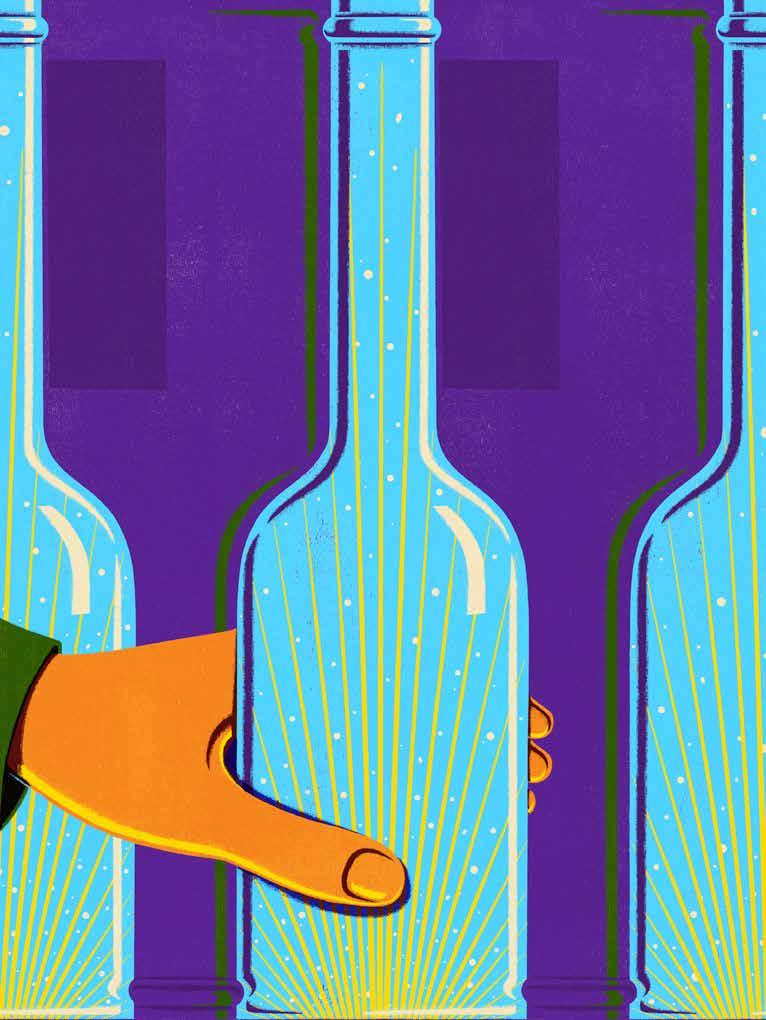
Alcohol consumption has been up and down ever since, along with pushback to asso ciated societal ills like drunk driving and do mestic violence. But drinking has been on the rise since the aughts and spiked again during the Covid-19 pandemic — particularly the lockdown stage — exceeding pre-Prohibition levels. This time, it was driven largely by women. A study by the National Institute on Alcohol Abuse and Alcoholism found that alcohol-related deaths for women jumped 85 percent between 1999 and 2017. In 2020, the National Institute on Alcohol Abuse and Al coholism declared that drinking was a “grow ing women’s health issue.” In 2021, according to data from Gallup, drinking plummeted to wards the “low end of the range” for the first time in two decades.
In response, alcohol brands are diversifying their portfolios. Big-time players like Heinek en, AB InBev (owner of Budweiser, among others), and Molson Coors — which together own about every recognizable beer brand in the Western world — have all begun rolling out more nonalcoholic options. There are now more than 70 nonalcoholic spirits brands in the U.S. and U.K., according to Distill Ven tures, an independent accelerator for the drinks industry. “They know where the mar ket is going,” says Marcos Salazar, CEO of the Adult Non-Alcoholic Beverage Association. “They’re listening to consumers’ demands and putting more of their budgets into nonalco holic items.”
And increasingly, people can also go out without drinking. In the last few years, zero-proof bars have opened up across the country and around the world, with col orful names like Suckerpunch in Portland, Awake in Denver, Hekate in New York City, Zeroliq in Berlin and 0% Non-Alcohol Expe rience in Tokyo. In Austin, Sans Bar opened in 2017, offering drinks like a “nada colada” and a “sansgarita.” Curiosity opened this May in Salt Lake City. Its tagline: Same social habits, different ingredients. What they all have in common — aside from drinks containing less than 0.5% alcohol by volume, as much as an overripe banana — is the mission to be a desti nation for people who aren’t drinking.
THE FEELING OF knowingly being duped is mesmerizing. James pours me a sparkling “wine,” fizzy and sweet. Then a nonalcoholic
pinot noir. Then a “naturally distilled coastal botanical,” a densely herbaceous quaff meant to mimic a gin. James knows the ropes. After two decades in the adult beverage industry, first as a bartender and later as an entrepre neur, he took a year off from drinking, just to see where it would lead. He felt so much better he decided to reboot his career, and opened Temperance Bar.
So far, it’s been responsible fun. The non alcoholic beverage industry is “still in the honeymoon stage,” James says. “Everything puts a smile on people’s faces. ‘Oh my! It’s nonalcoholic whiskey!’” He compares it to the Impossible Burger, which had a cultural mo ment when it launched, largely because it was cool to see soybeans manipulated in a way that looked and cooked like beef. “When an analog
alcohol delivery platform owned by Uber, found young people to be “most game to try non-alc,” citing “healthier lifestyle” and “cut ting back on alcohol consumption” as their top reasons. This trend isn’t limited to the states. In Japan, less than 8 percent of people in their 20s report drinking at least three days a week, compared to 30 percent of people in their 40s to 60s.
People today feel less pressure to follow so cial norms, and that includes consuming alco hol, said Brandy Rand, chief strategy officer at IWSR, the leading source of data on the global beverage alcohol market. She expects the stig ma to all but disappear as more people choose not to drink alcohol, especially now that there are flavorful, interesting products available. Even among drinkers, more are choosing to take a night off. “Forty-three percent of con sumers are substituting low-to-no alcoholic beverages for full-strength alcohol on certain occasions,” Rand says.
comes around,” he says, “it’s powerful.”
It’s more than replicating a flavor; health is one motivating factor. “People are more mind ful about what they put into their bodies,” Salazar says. “It’s been dictated by vegan food, but now it’s moving into what they drink.”
Brianda Gonzalez followed a similar path before she opened a zero-proof bottle shop in Venice Beach called The New Bar in July, join ing similar establishments from Studio City to New York. Like many members of Gen Z, she spent years drinking alcohol without question. It’s intrinsic to how many people have fun, socialize and relax, she says, and yet she’s nev er met a person who said they didn’t want to drink less. “We meditate, we exercise, we eat healthy,” she says. “This is the new frontier.”
So far, members of Gen Z drink 20 per cent less per capita than millennials did at the same age, and millennials drink less than their parents and their parents’ parents. The 2022 Consumer Trend Report by Drizly, an
I’m a millennial, but I don’t go to bars to drink. Still, like most people, I am a social, story-seeking creature and bars provide an op portunity. The pretty drink sitting on a napkin waiting to be tasted. Another round inviting you to stay longer. The scent of limp herbs and sliced fruit, banter with the bartender, a cel ebratory “cheers!” Alcohol was never the key ingredient for me. It’s nice to have an option where I can skip it altogether without losing the experience.
Some call it a “third place,” a term intro duced by urban sociologist Ray Oldenberg in his book titled “The Great Good Place,” first published in 1989. It refers to an informal public domain for gathering separate from the home — the first place — and work — the second place — essential to community vital ity, democracy and public life, he argues. It’s where people hang out: coffee shops, libraries, churches and parks. For many, the bar has been a default third place, especially on a Friday or Saturday night. Now they have alternatives.
“My mission used to be to let everyone know this all exists,” James says. “Now it’s to let everyone know what this all means. Alco hol is not required to have an amazing time.”
After trying a variety of drinks — what would be a poor decision at a normal bar — I close out my tab and walk out through the “Employees Only” door. I drive home sober and safe, feeling great.
“PEOPLE ARE MORE MINDFUL ABOUT WHAT THEY PUT INTO THEIR BODIES. IT’S BEEN DICTATED BY VEGAN FOOD, BUT NOW IT’S MOVING INTO WHAT THEY DRINK.”

AT THE ANNUAL CONCORDIA SUMMIT IN NEW YORK, JOURNALISTS, ACADEMICS AND BUSINESS LEADERS GATHERED FOR THE FAITH & MEDIA INITIATIVE.

At the summit, held on September 20, Sheri Dew, executive vice president of Deseret Man agement Corporation, interviewed a group of global experts, including Axios co-founder and Politico alum Mike Allen and Simran Jeet Singh, of the Aspen Institute.
The Faith & Media Initiative is a coalition of organizations and experts pushing for bet ter coverage of faith in media. At the event, the initiative released new data drawn from a global study conducted by the polling firm HarrisX, which found that a majority of peo ple worldwide want more nuanced coverage about religion in their newsfeeds.
LEFT: FROM THE LEFT, DAVIS SMITH, ALISSA WILKINSON, ANA MIMS, LINUS IDAHOSA, SIMRAN JEET SINGH, KOUROSH ZIABARI, DAVID MILLER, DRITAN NESHO, BROOKE ZAUGG AND MARA SCHIAVOCAMPO.
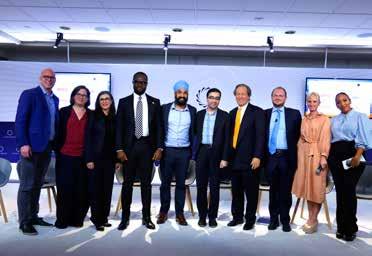
OPPOSITE: KOUROSH ZIABARI, DAVID MILLER AND DRITAN NESHO.
ABOVE, LEFT TO RIGHT: AXIOS COFOUNDER MIKE ALLEN, NIGERIAN MEDIA EXECUTIVE STEPHANIE LINUS, ASPEN INSTITUTE’S SIMRAN JEET SINGH, AND SHERI DEW, EXECUTIVE VICE PRESIDENT AND CHIEF CONTENT OFFICER, DMC.
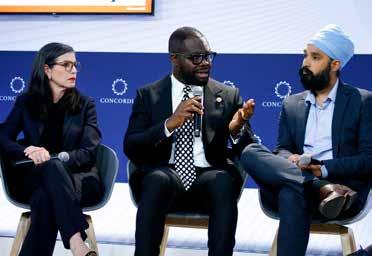
RIGHT: ANA MIMS, LINUS IDAHOSA, AND SIMRAN JEET SINGH.
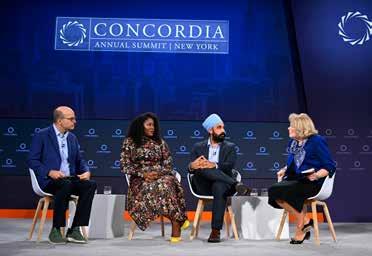
Folks who fret that the conversation around the dinner table this Thanks giving will devolve into a political grudge match could take a suggestion from Angel Eduardo. A writer, musician, photographer and artist, he spends at least as much time thinking about how people engage with each other as he does thinking about how to engage his own audiences. He views each medium he works in as a form of storytelling. “It’s all me trying to communicate something,” he says.
Eduardo, 37, is director of messaging and editorial at the Foundation Against Intol erance & Racism, a nonpartisan foundation known as FAIR. He also blogs for the Center for Inquiry and sometimes writes perspectives for Newsweek. As a son of Dominican immi grants, he speaks both English and Spanish natively, and grew up navigating different per spectives on the world.

That may have helped him to develop an idea he calls “star-manning” — a rhe torical method whose name riffs off a pair of better-known alternatives. On one hand, a straw man argument is a logical fallacy that attacks a misrepresented form of the opposing position to ensure an easy victory. A steel man argument takes the opposite approach, high lighting the strongest possible version of the
opposition to make one’s victory unassailable. But star-manning takes that a step further, en gaging with not only the most charitable ver sion of an argument, but also the best view of the person behind it.
His premise is that most of us have lots in common, including good intentions and shared desires. But beliefs are forged through individual experience and everyone’s journey
As an artist, Eduardo has designed book covers and shown his photography in galleries, building off a Master of Fine Arts degree from City University of New York’s Hunter Col lege. He even sings and plays guitar — songs by his former funk rock band Blue Food can be streamed on the usual platforms.
Deseret Magazine talked to Eduardo about building up, rather than tearing down. He says he’s trying to pay it forward.
is different, so people arrive at their views by different routes that can be understood with a little empathy. Disagreement is not a sign that one person is right and the other is either a monster or a fool. Star-manning is intended to help you win the dinner table argument but keep the relationship.
Our mission is to advance civil rights and liberties for all Americans and to pro mote a common culture based on three principles we call fairness, understanding and humanity. We also have what we call our principles of peaceful change, based on Martin Luther King Jr.’s principles of non violence. It’s about bridge building, moral courage and compassion. It’s about love over hate, and trust and justice. All of those things deeply resonate with me. If I may be so bold, I feel like I am a walking version of FAIR in that these are my personal aspira tions, my principles and my perspective on life and on how to engage with others. So it was a perfect fit.
DISAGREEMENT IS NOT A SIGN THAT ONE PERSON IS RIGHT AND THE OTHER IS EITHER A MONSTER OR A FOOL.
ANGEL EDUARDO
All children are pro-human. There are al ways going to be problem kids, but kids are naturally social. It’s not until we teach them these arbitrary divisions that they start to use them.
These constructs that worry us as grownups, what we consider to be fundamental di vides between us, like race, those things have to be taught to children. And we don’t have to teach them. We should teach them that it happens in some age-appropriate way: “Hey, this is the way that the world is currently func tioning. This is the way that people view one another. These are the ways that human inter actions get complicated.” But not in a way that subsumes them in it. They should understand it the same way that we see Greek mythology. You know, this is what people thought. These are the stories; it’s important for you to under stand them. But we’re not telling you that you need to sacrifice goats to Apollo.
It’s my fancy term for something that came naturally to me, and which I see lacking in our discourse, which is having a little bit of humil ity and accepting that you don’t fully under stand a situation or an argument or a person because things are complicated and communi cation is hard.
Even though you may disagree with some one’s ideas, or proposals or perspective, they’re still human beings. And they are fundamental ly wired in the same way that you are. Just as you feel strongly about your convictions and opinions and political and ideological beliefs,
they feel the same about theirs.
That conflict doesn’t mean that they’re evil, they’re just people who had different upbring ings, experiences, interactions with others, dif ferent friendships than you did, and that’s why they ended up where they did, and you ended up where you did. Star-manning is a rhetorical tool that tries to reinstate that fundamental human connection. And it’s a way of making it explicit, so that you can actually hear the ar gument that the other person is making, and you can disagree with it more effectively if appropriate, because you understand not just the argument, but the arguer. Most people most of the time are doing what they believe is fair, good and just, or at the very least justifi able, given their righteous end. And the key is trying to pinpoint what those righteous ends are. It’s like looking at somebody’s scrap paper, rather than just their answer. If you can see how they got there, that’s more informative than just saying their answer is wrong.
It does not mean accepting things to be true that you do not believe are true. It does not mean accepting things as good that you do not believe are good. It only means understanding what those things are and where people are coming from in espousing them. So it doesn’t get rid of arguing at all. In fact, it actually in creases arguments and both the capacity for and the necessity of arguing. It just does it in a way that is constructive and productive rather than hostile.
Absolutely. That’s where this idea came from — noticing that people are incapable
of steel-manning, because they’ve convinced themselves that their opponents are beneath contempt. Beneath dignity or compassion. As a result, they’re not only getting the argu ments wrong, but they’re getting the people wrong. Someone who voted differently than you in the last election is not necessarily an evil person. They have their reasons.
You’ve been wrong before. I’m sure there are plenty of people who think that what you believe now is ridiculous. How should they treat you? The golden rule is instructive here. Imagine someone shutting you down and saying, “No, you’re a horrible human being, you’re a pathetic excuse for a person, and I’m not going to listen to you. I’m just going to tear you down.” We should try not to do that to other people.
A lot of the things that I advocate for get similar responses from people: “Oh, that would be nice. But here in the real world, we have to deal with XYZ.” What they’re say ing is that’s nice, but it’s unrealistic. I reject that. Idealism gets confused with naivete. The caricature of an idealist is a belief that everything’s going to be great. That’s silly. An idealist is somebody who has certain princi ples and refuses to concede their goals to the reality of the present, or even the past. Just because it’s been this way for this long doesn’t mean it can’t change.
I’m just trying the best I can to do good and to be good. And we should recognize that everyone else is doing that in their own way as well. So: Be kind. We’re all first drafts.
The world’s largest organism is in peril. Consisting of 47,000 trees covering 106 acres, the Pando aspen grove in central Utah’s Fish lake National Forest is an estimated 80,000 years old. Pando, meaning “I spread” in Latin, references the aspen’s unique ability to repro duce genetically identical offspring — clones — through offshoots of its root system. How ever, the grove and its brilliant fall foliage is losing ground to roads and trails, cabins and campgrounds, while cattle and mule deer feed on its immature offspring. Without interven tion, the aspen won’t be able to reproduce enough to replace the dying elders.


